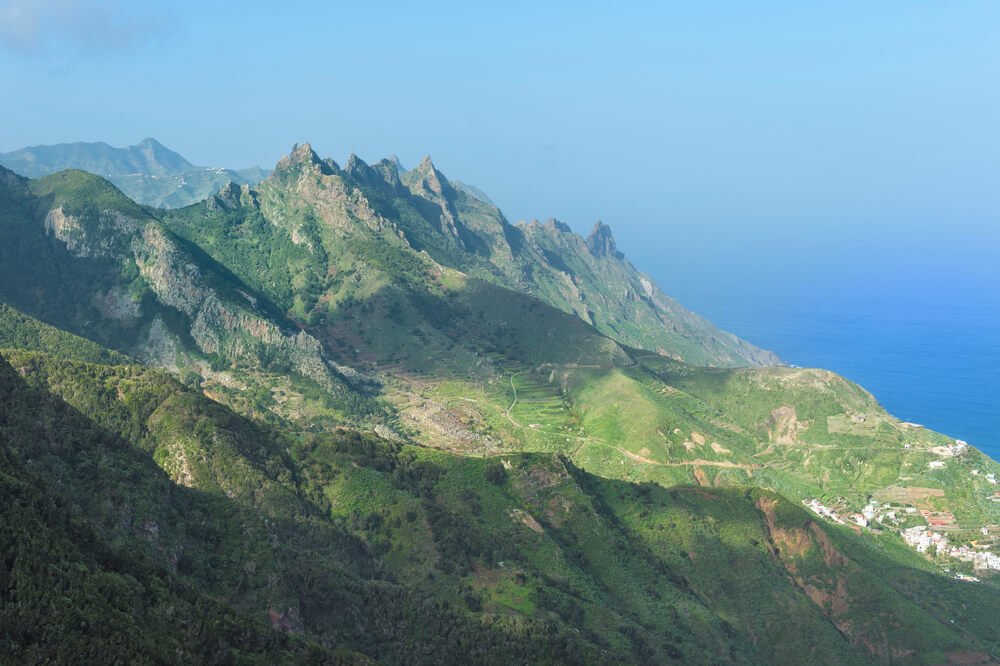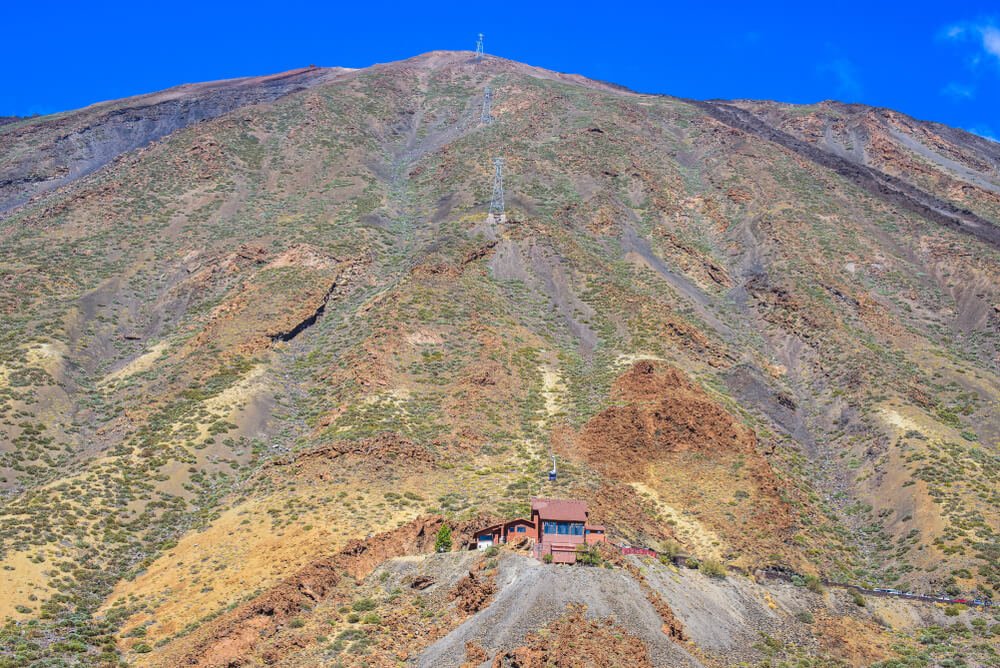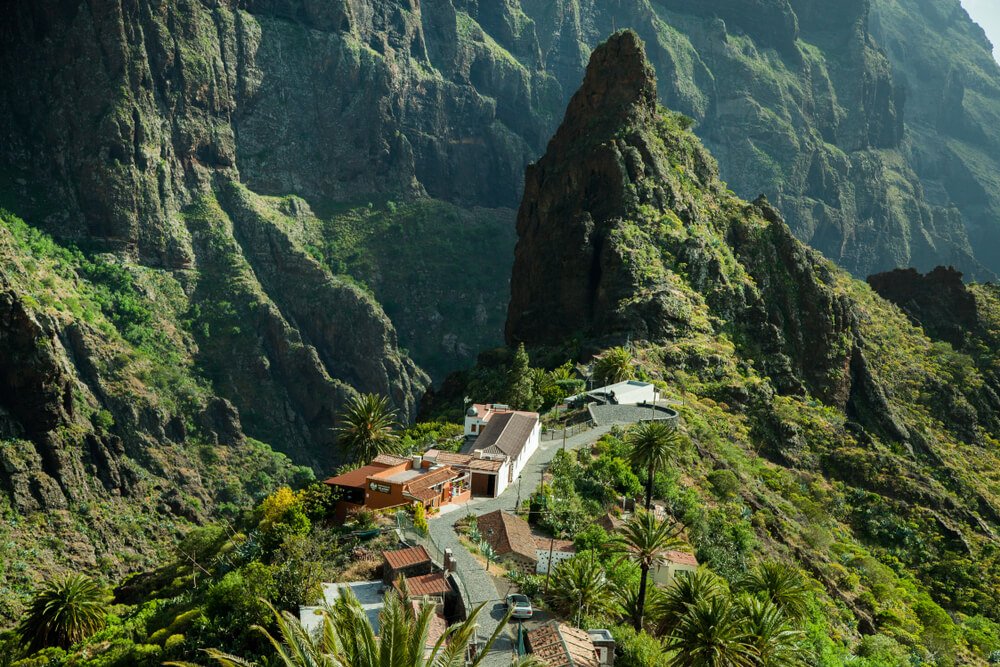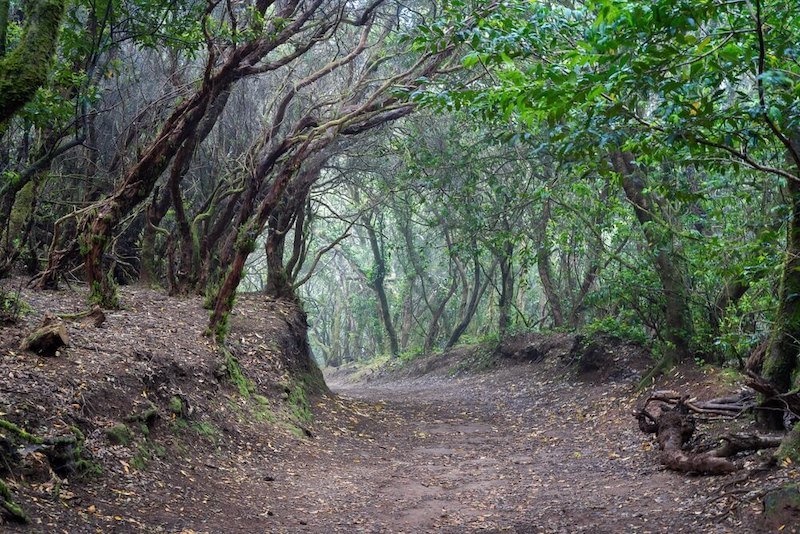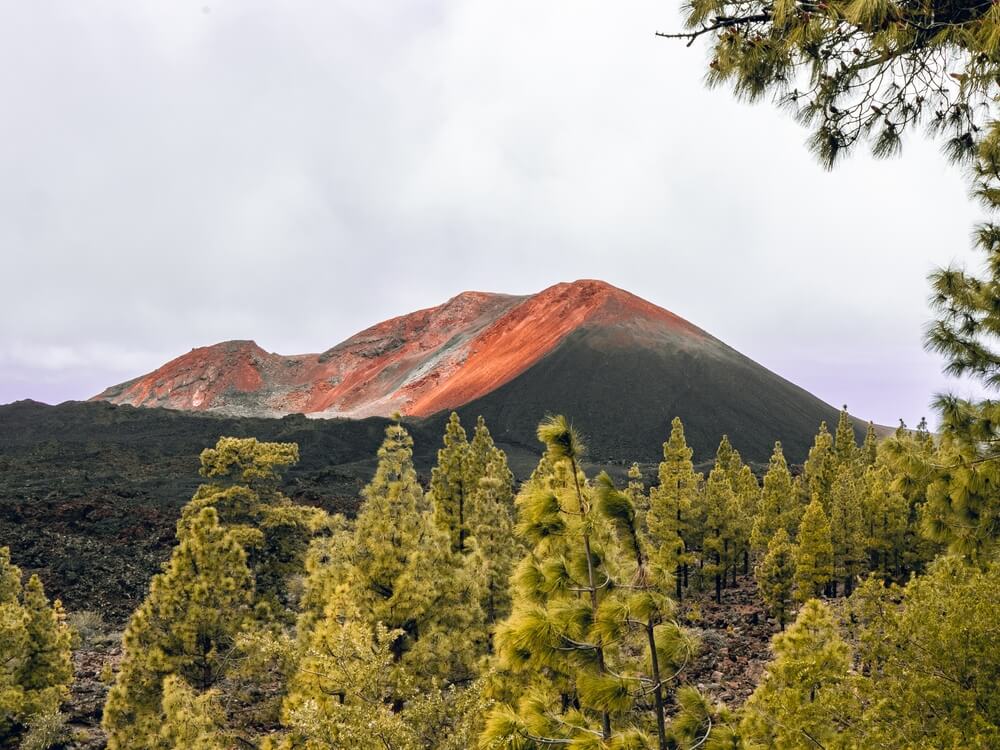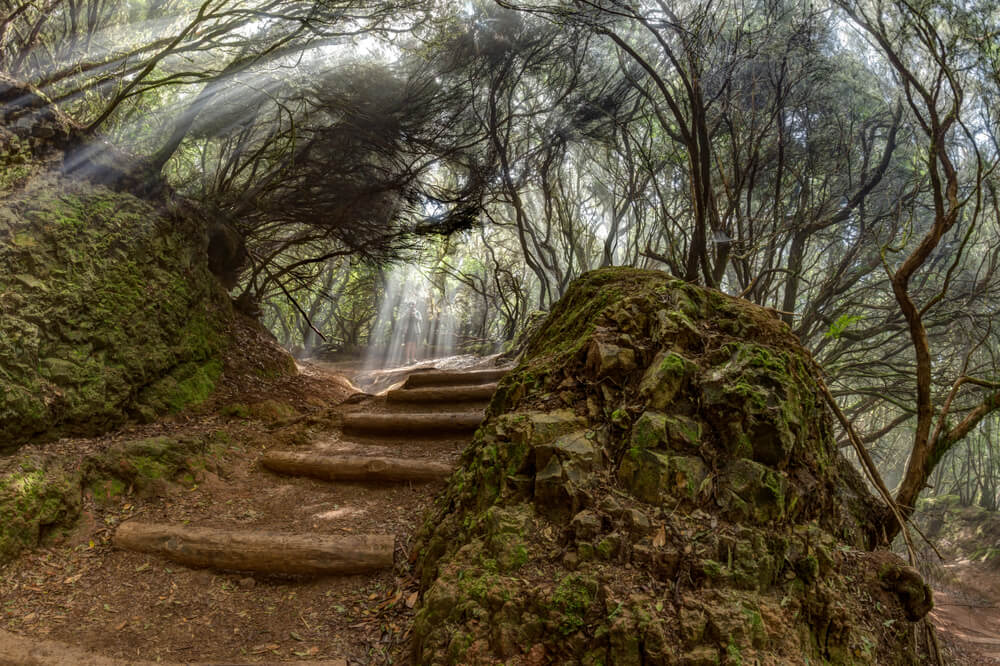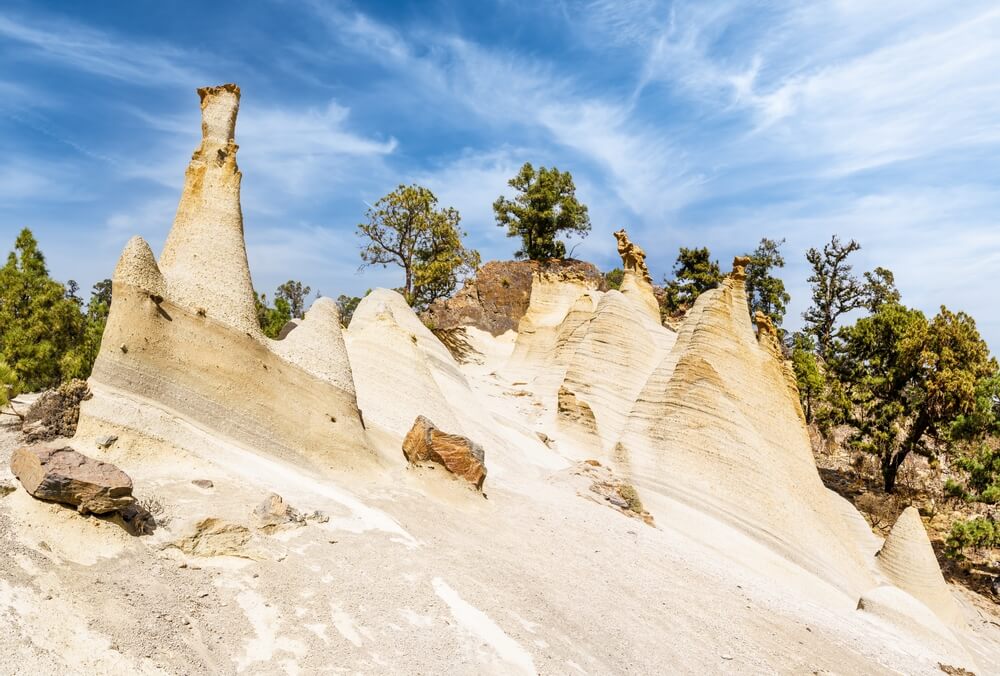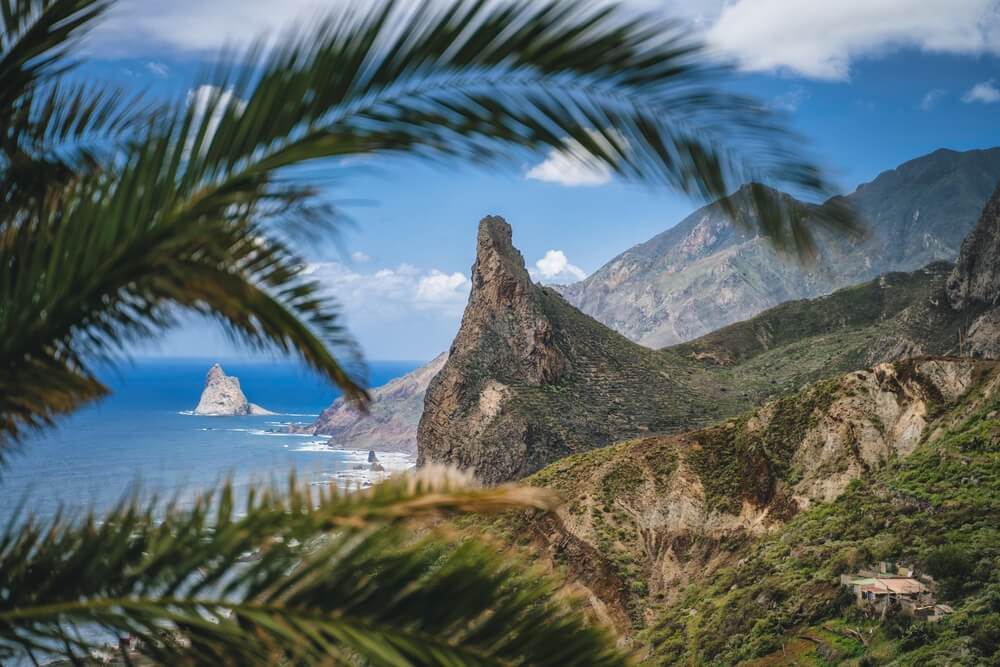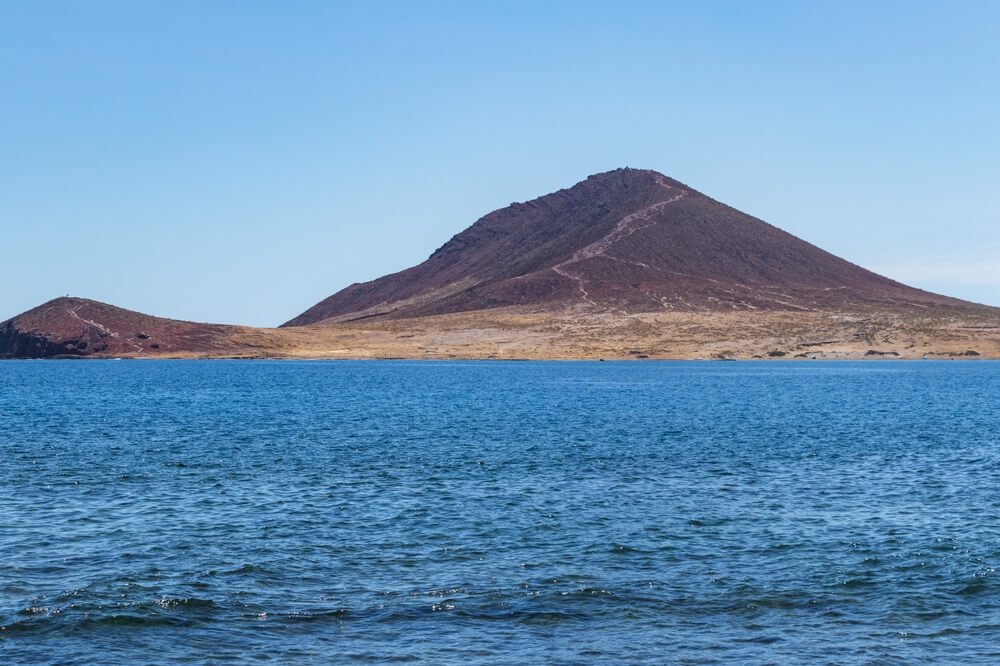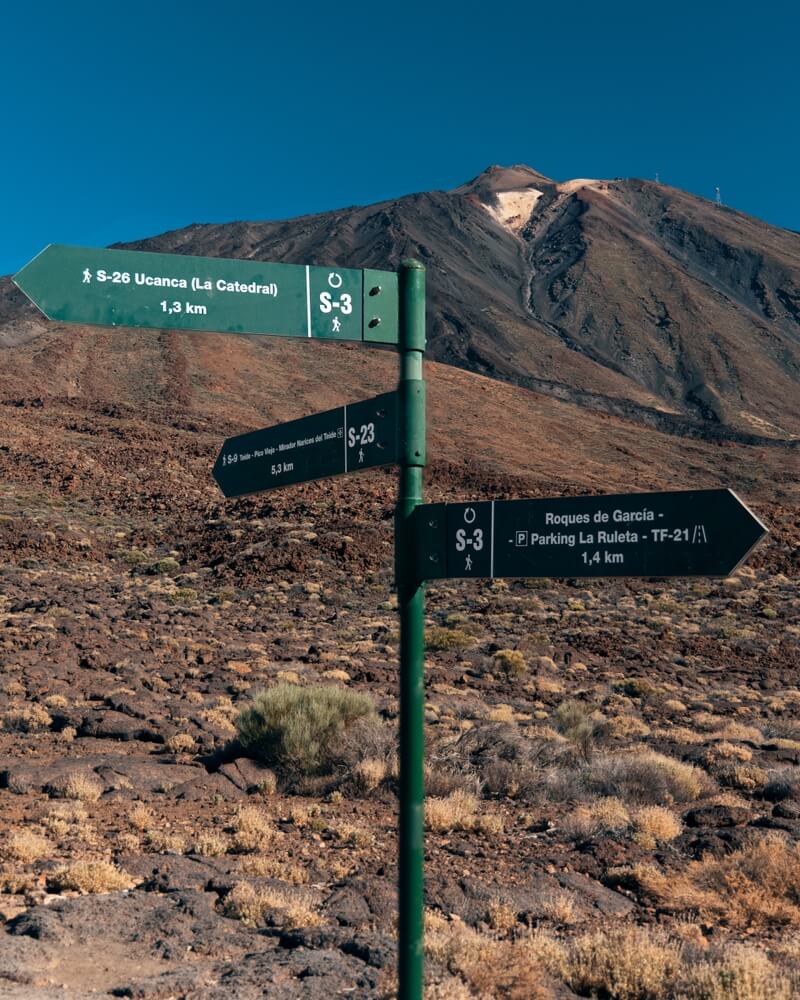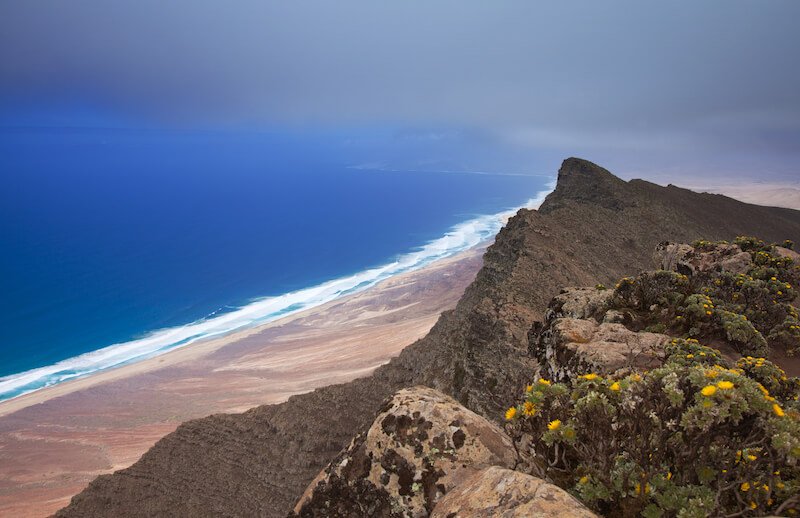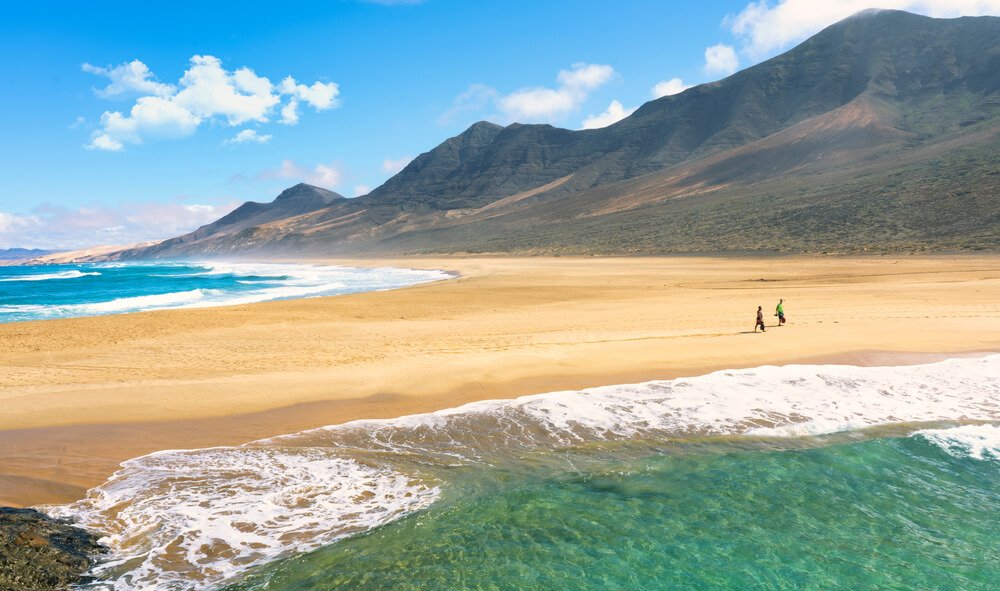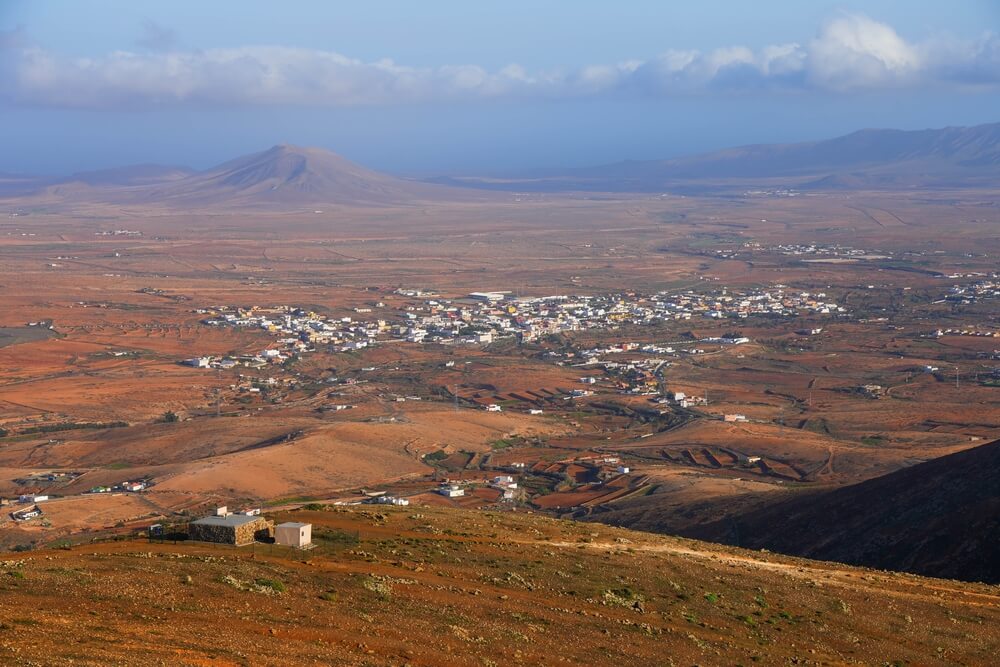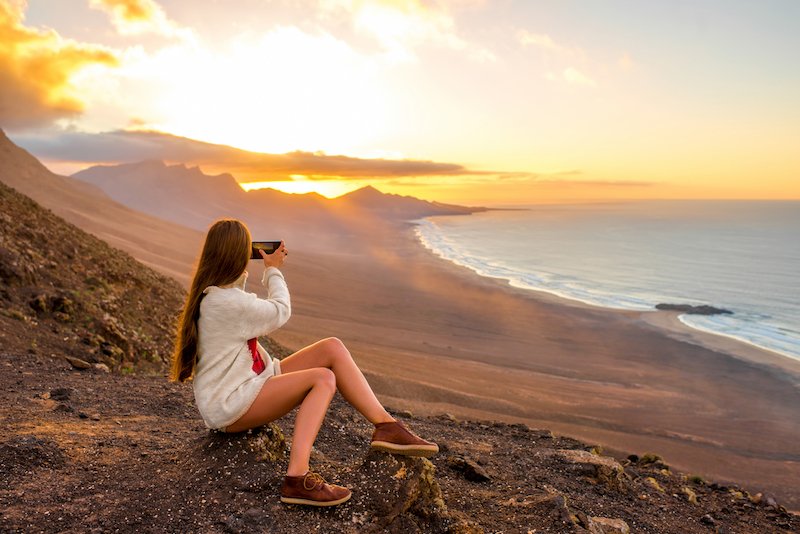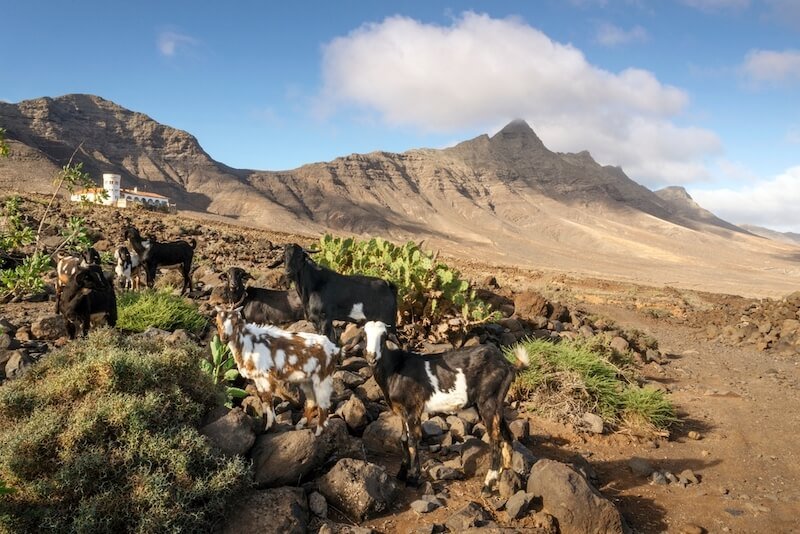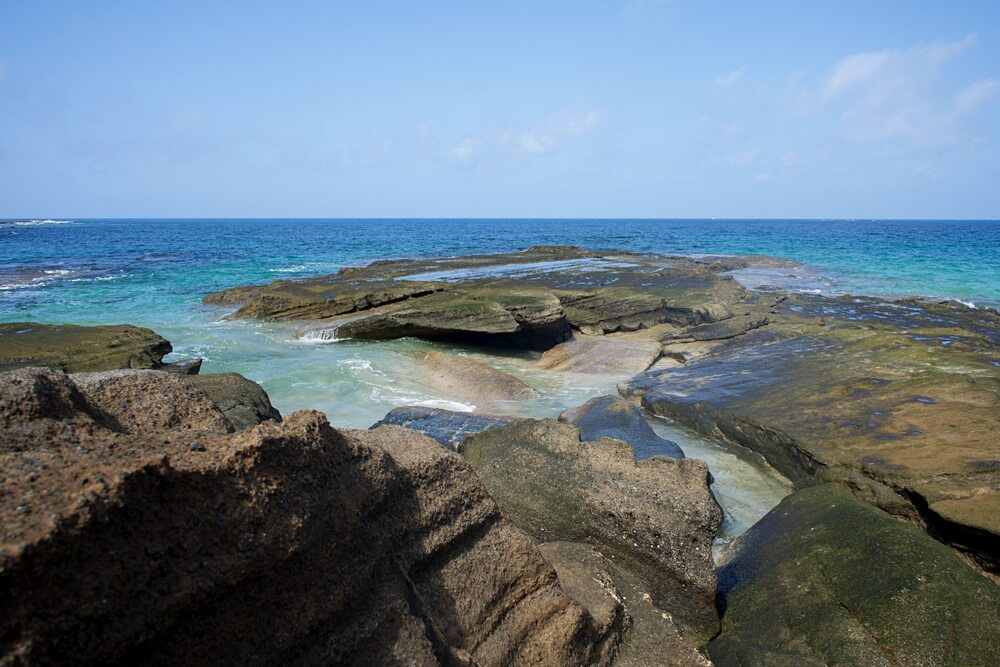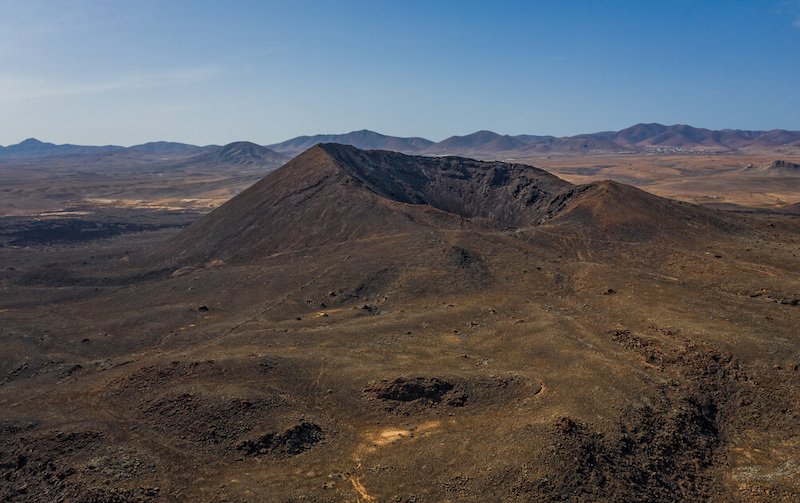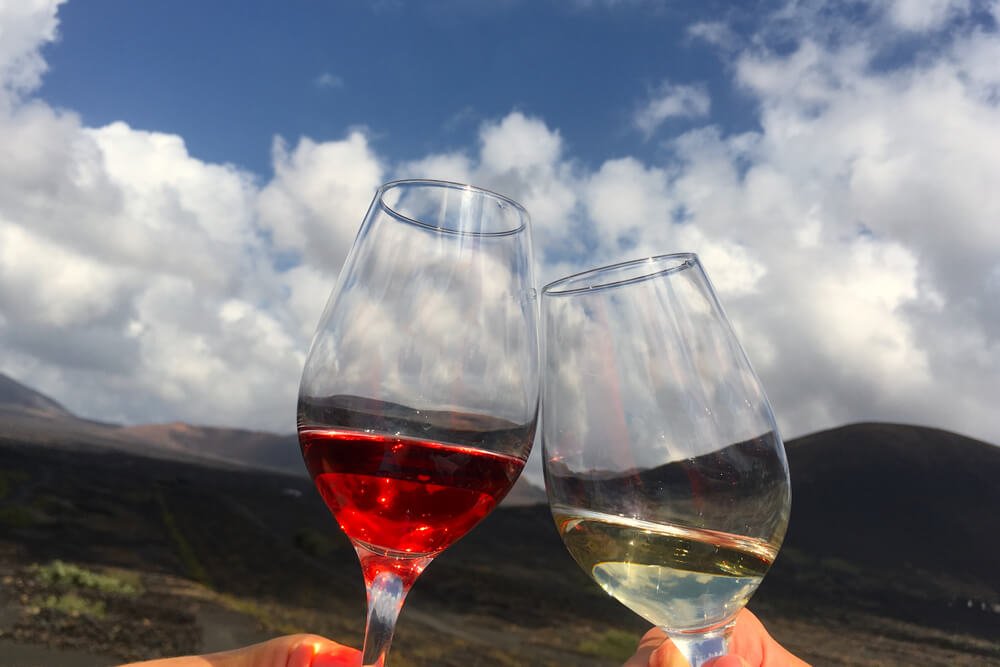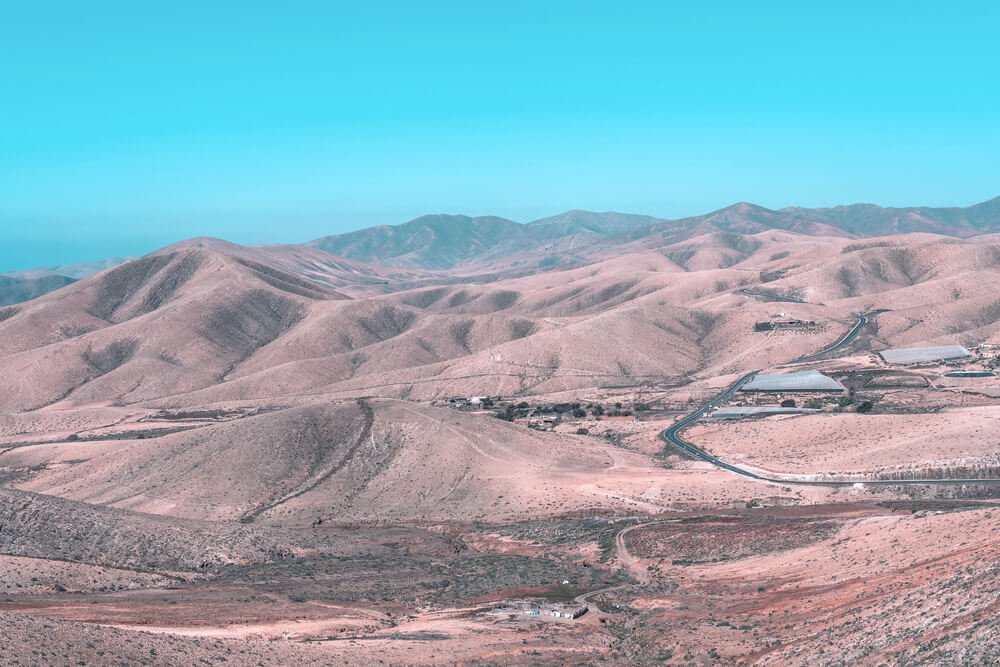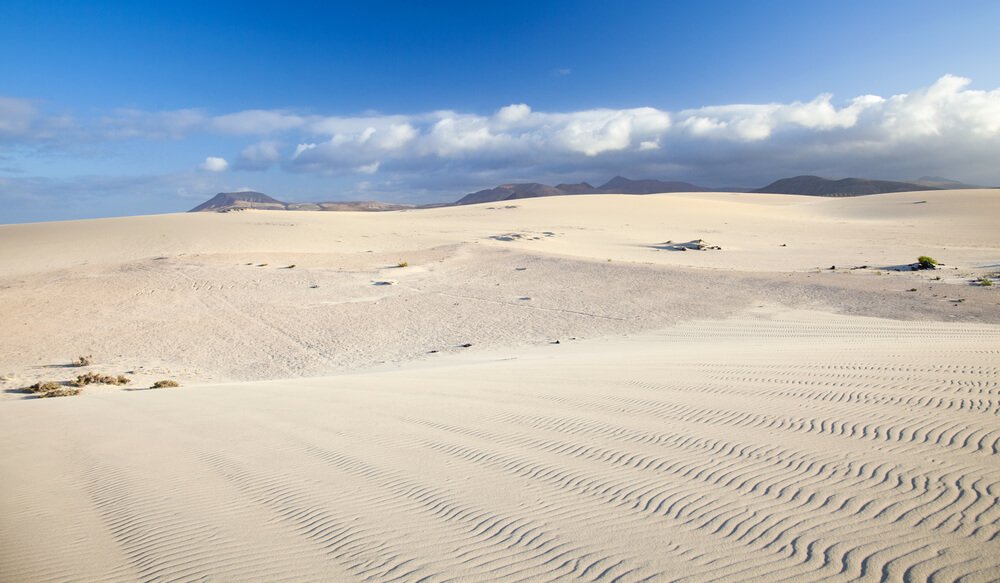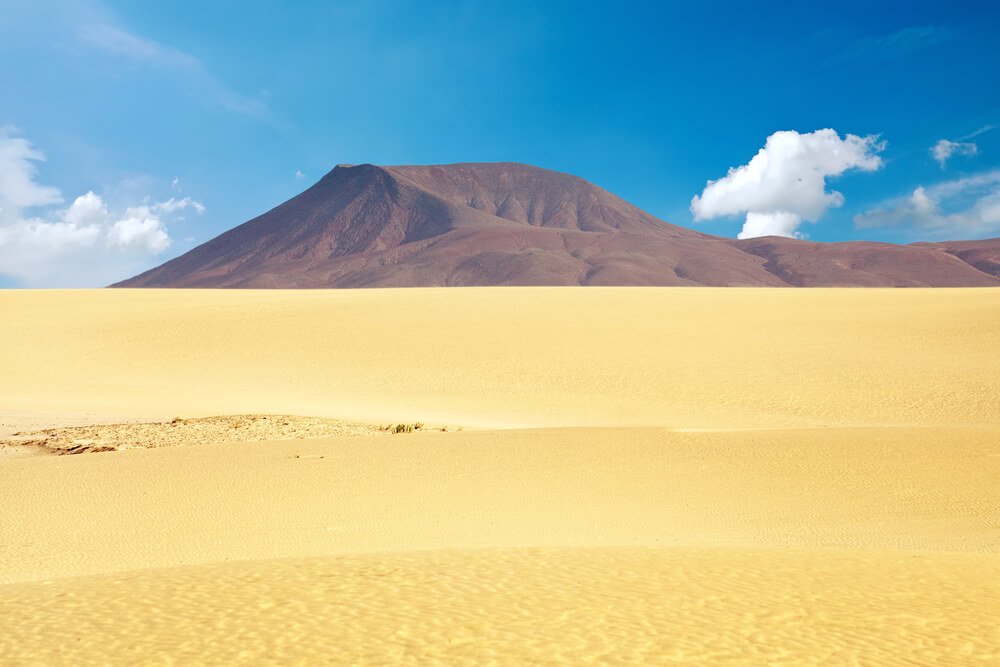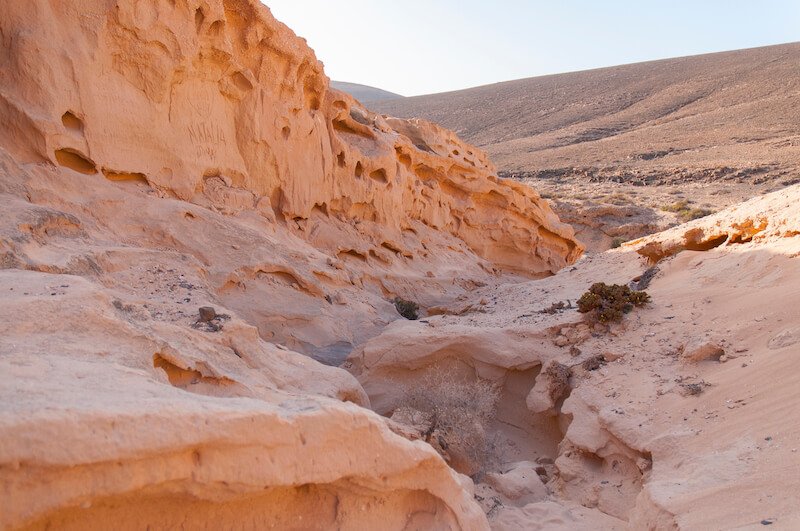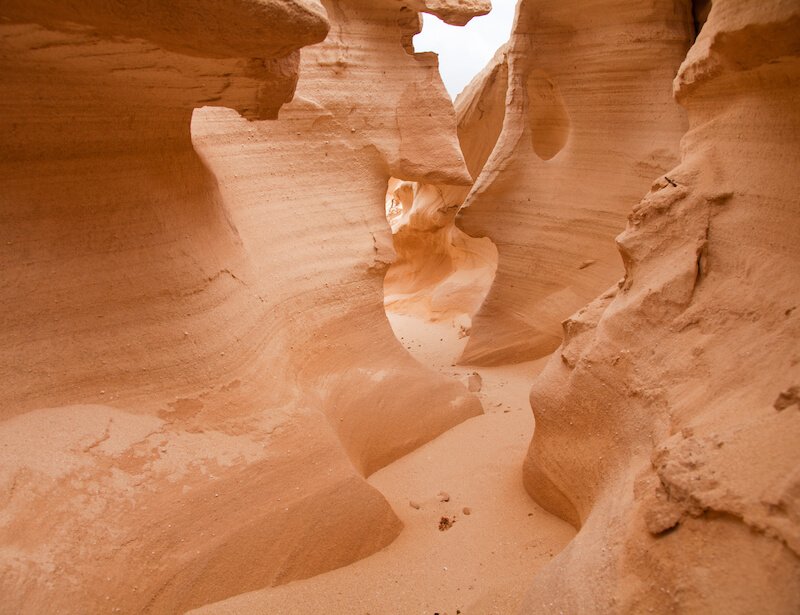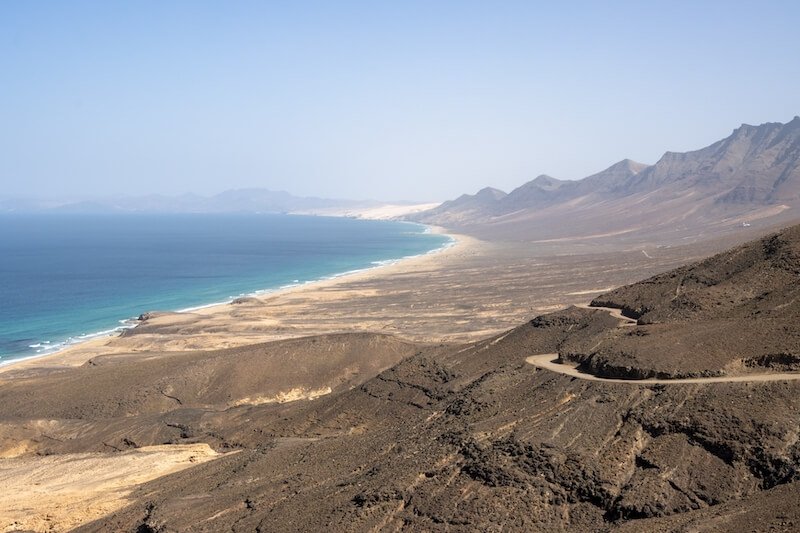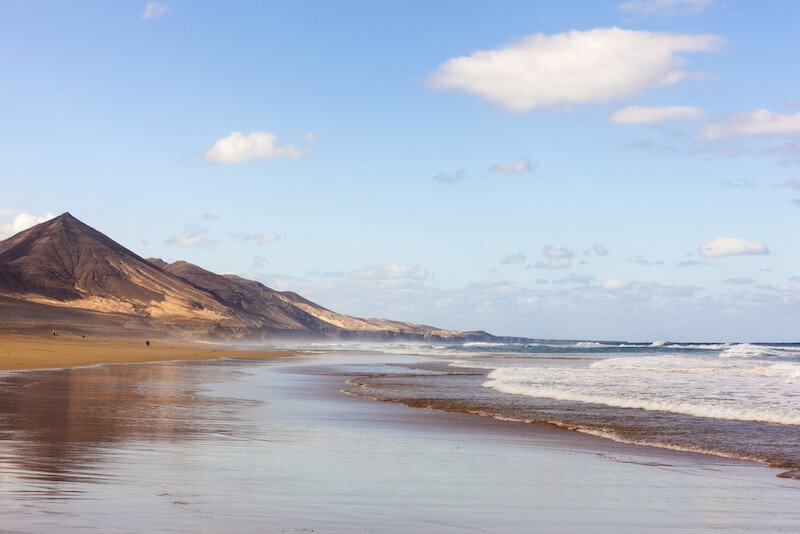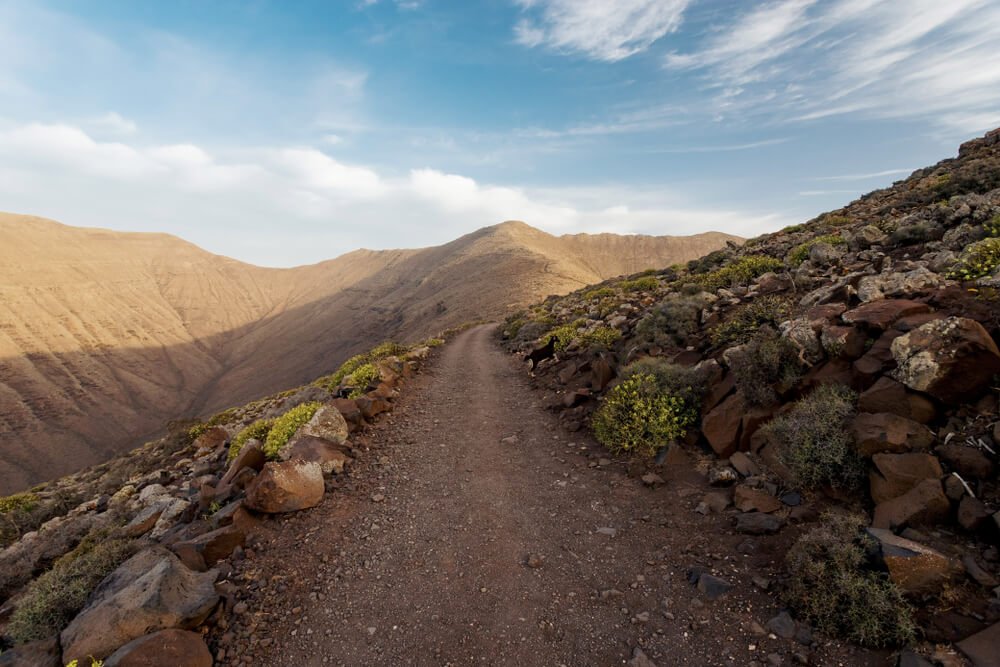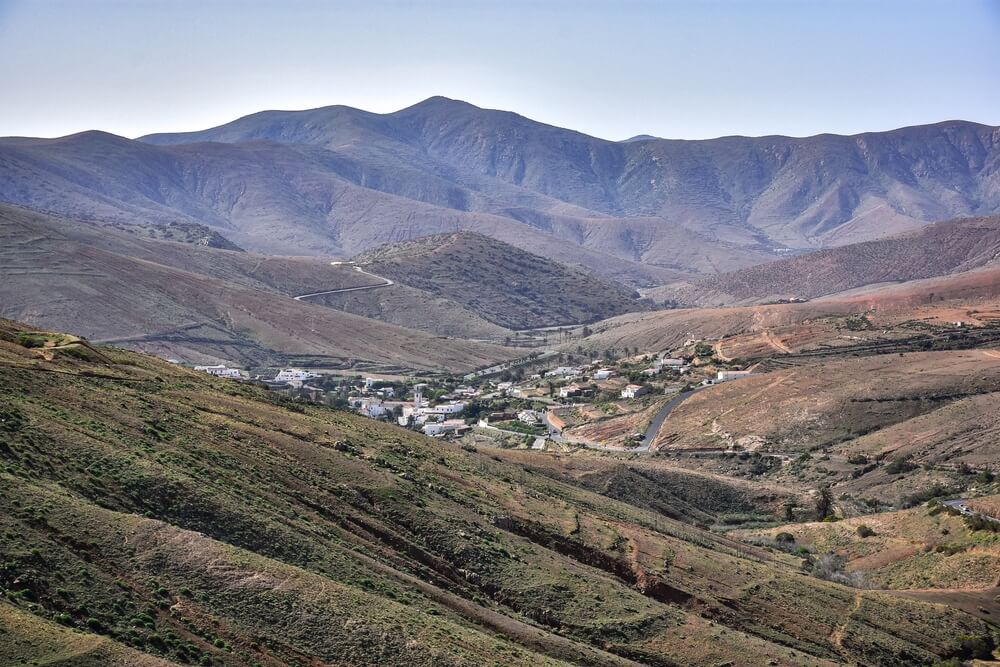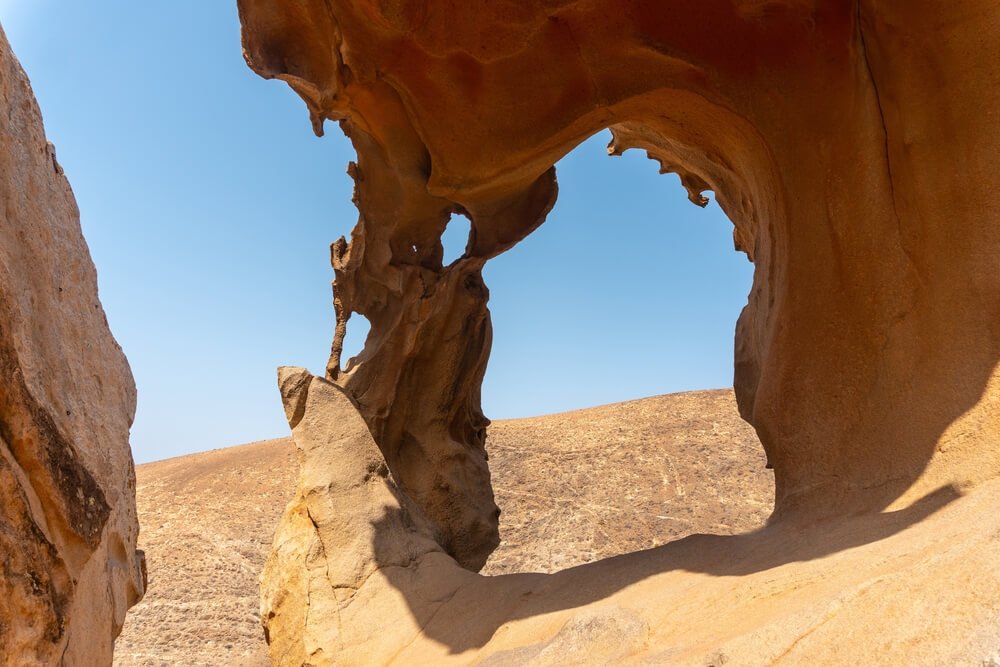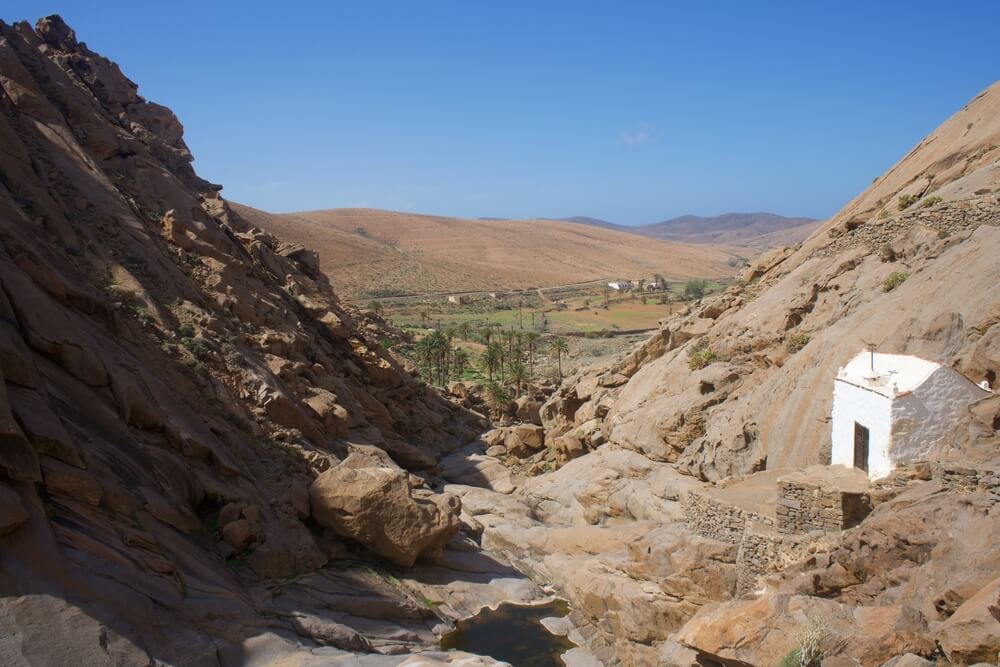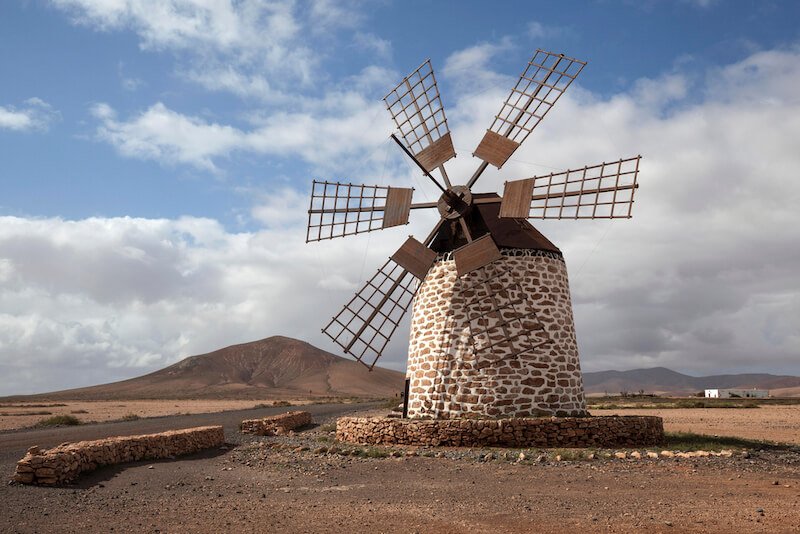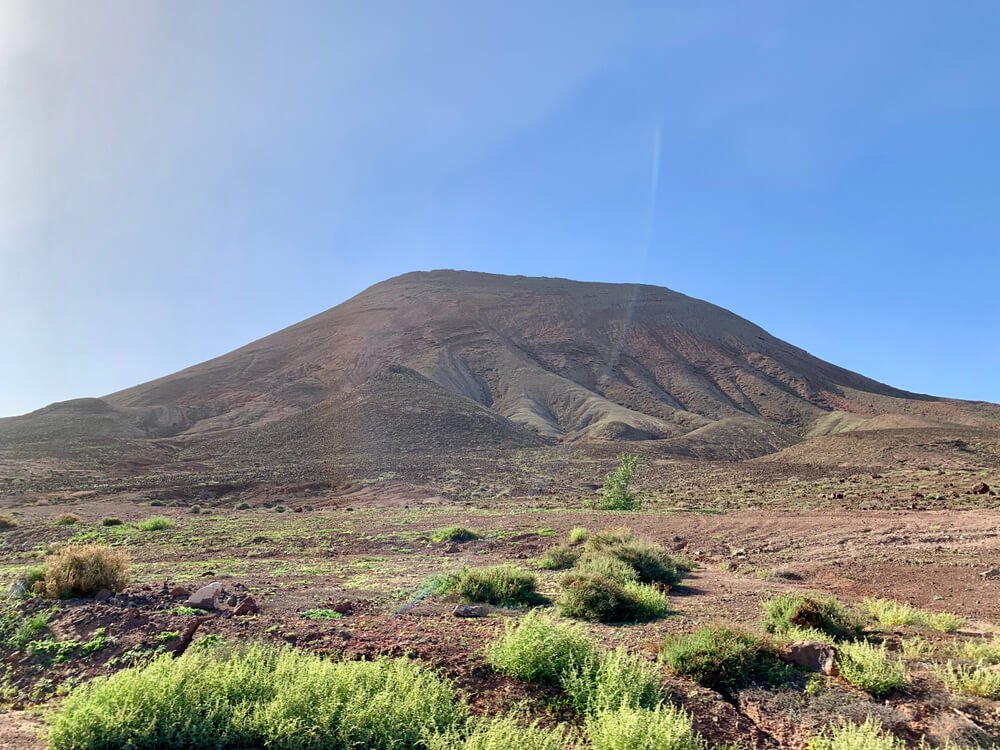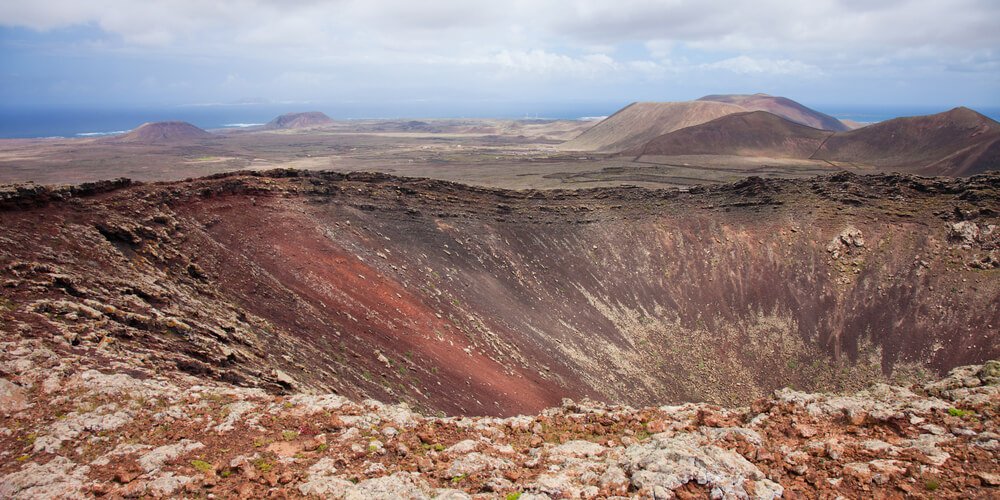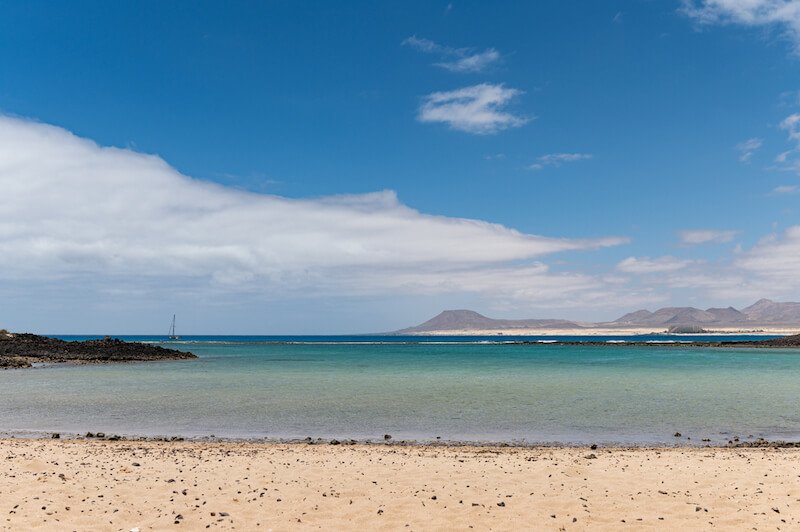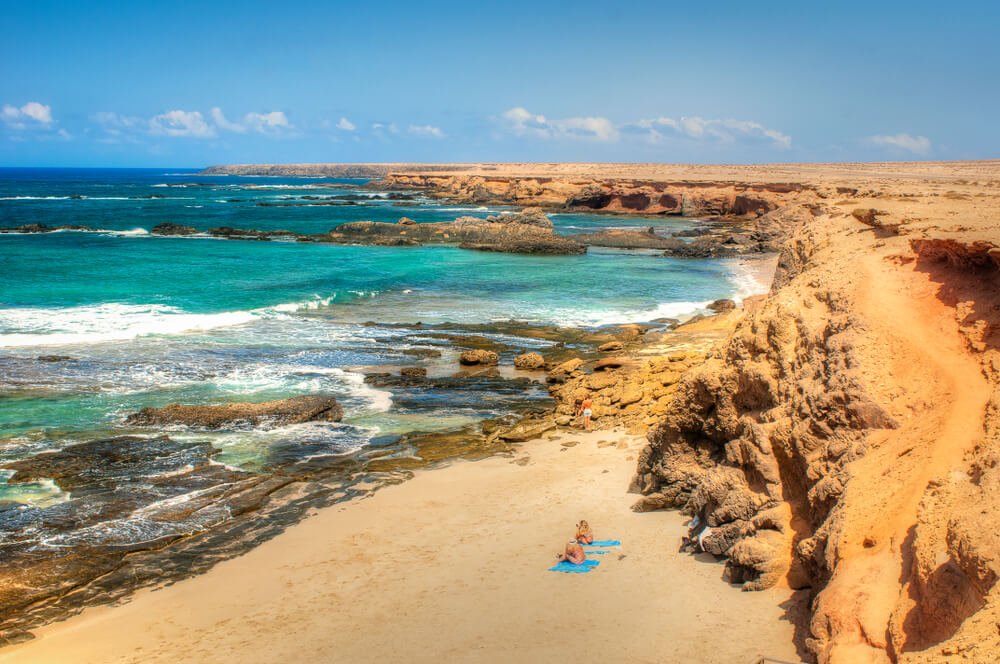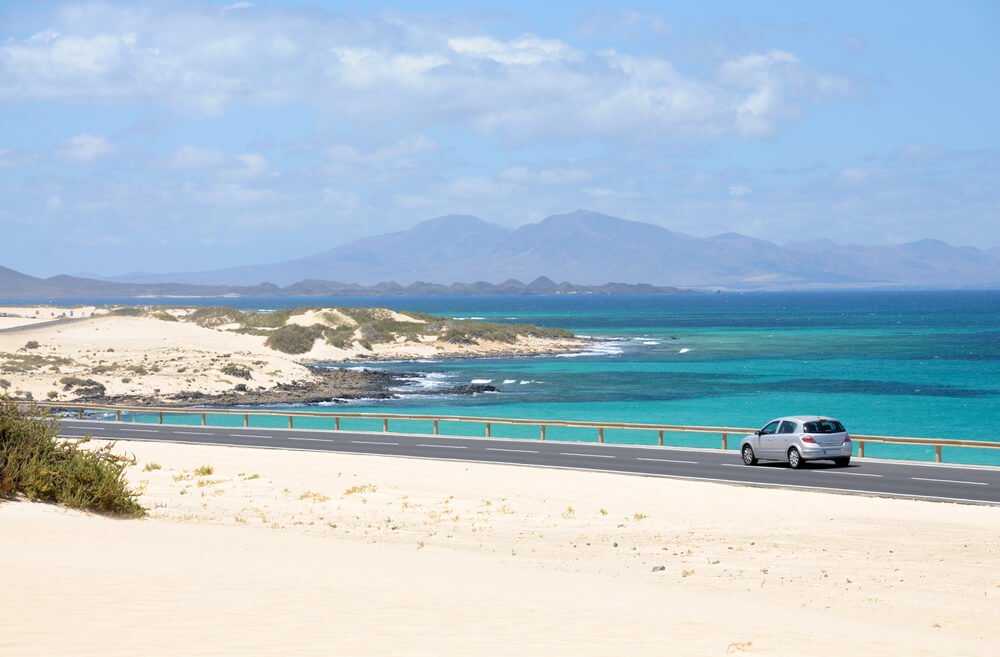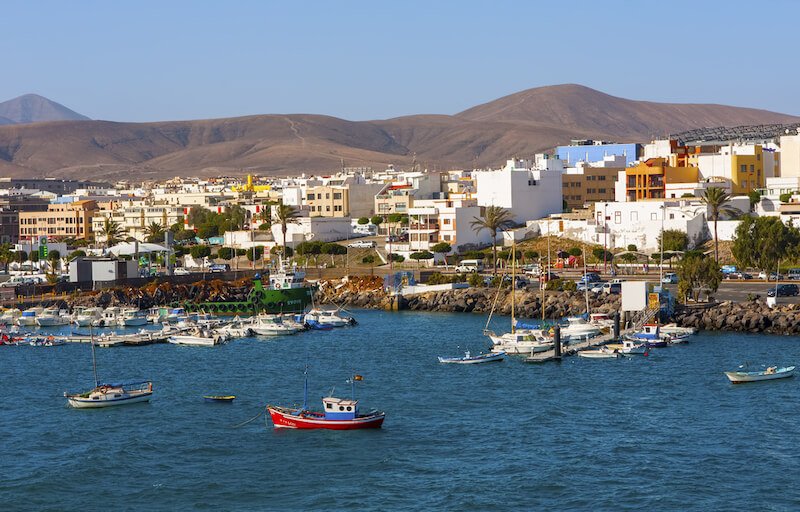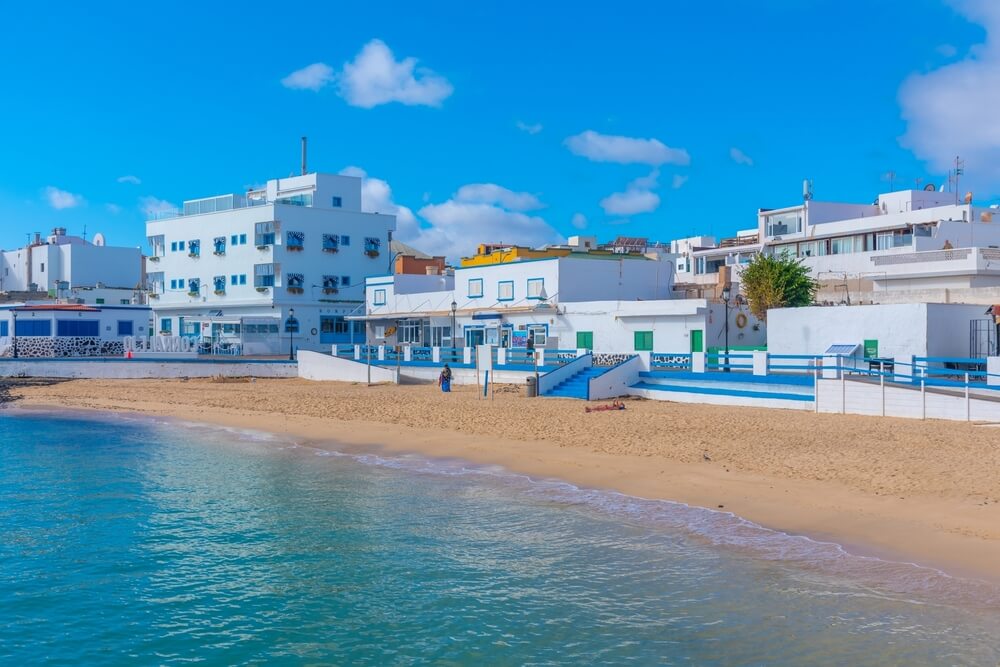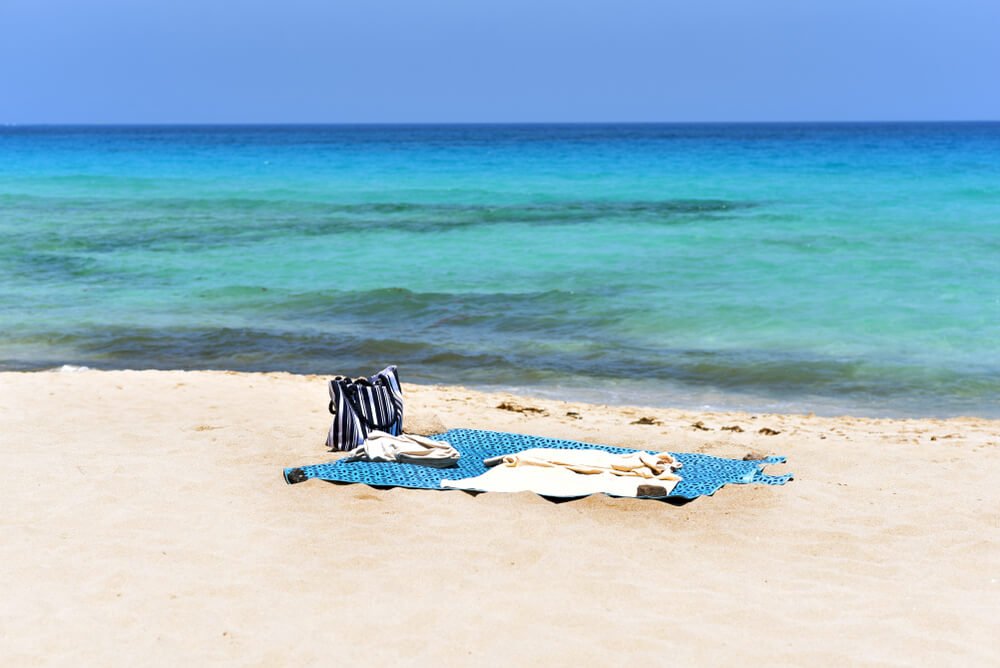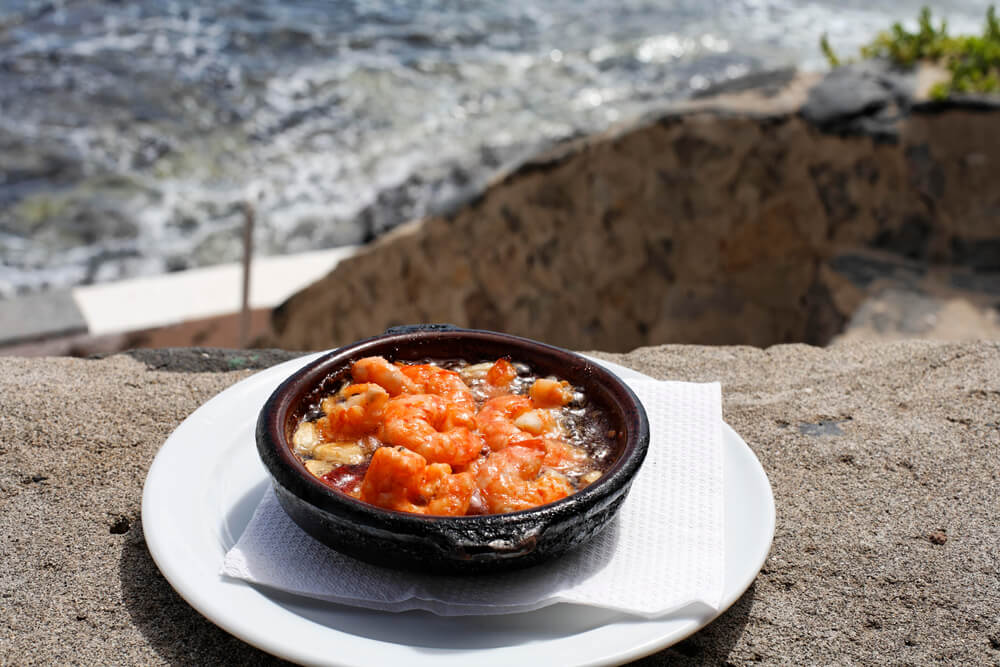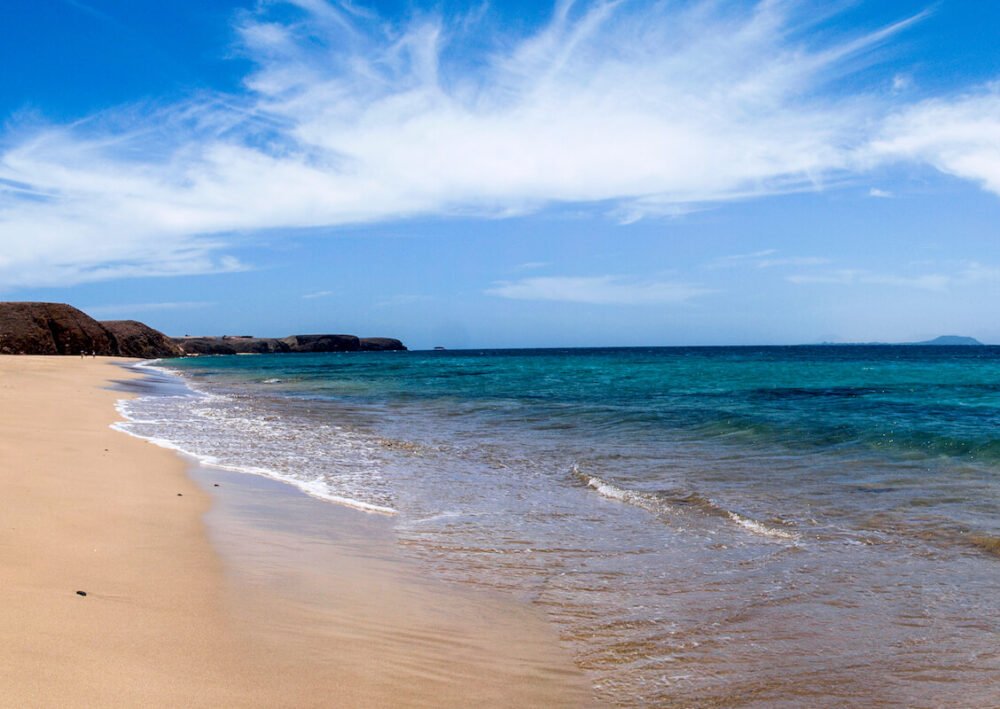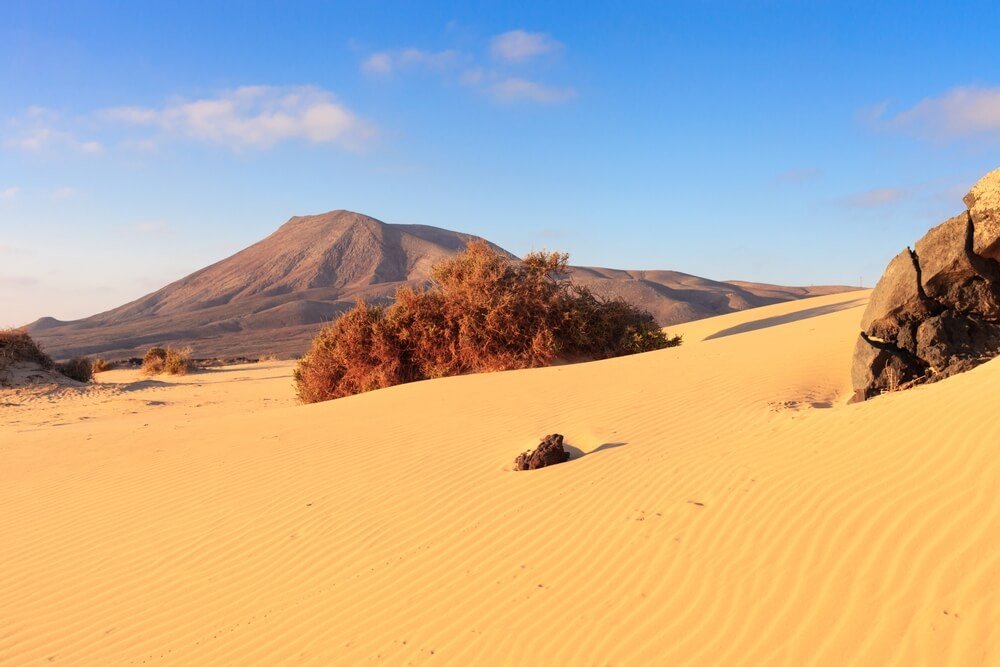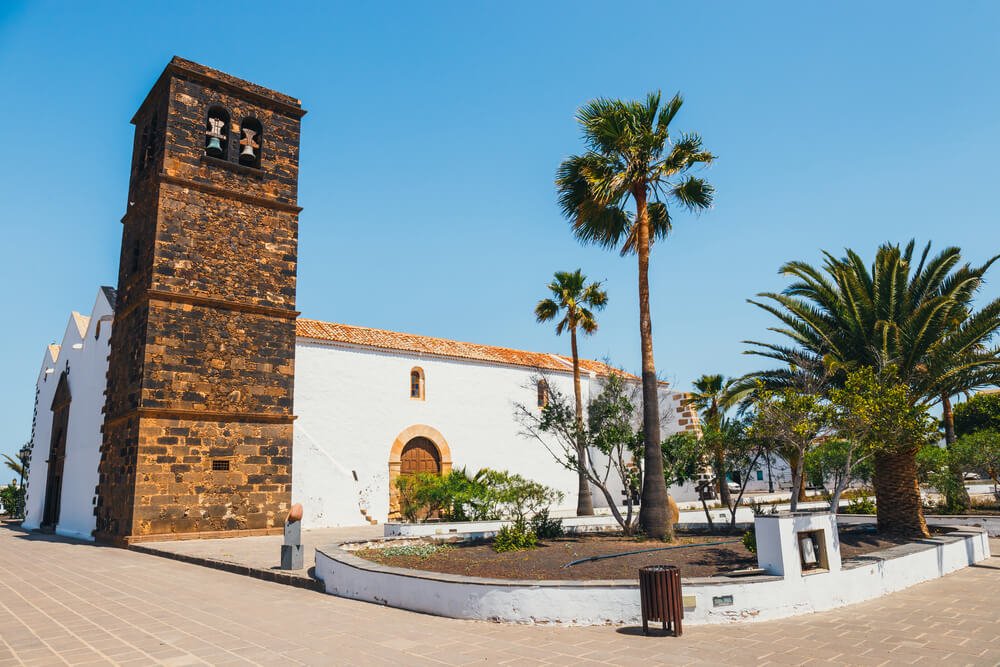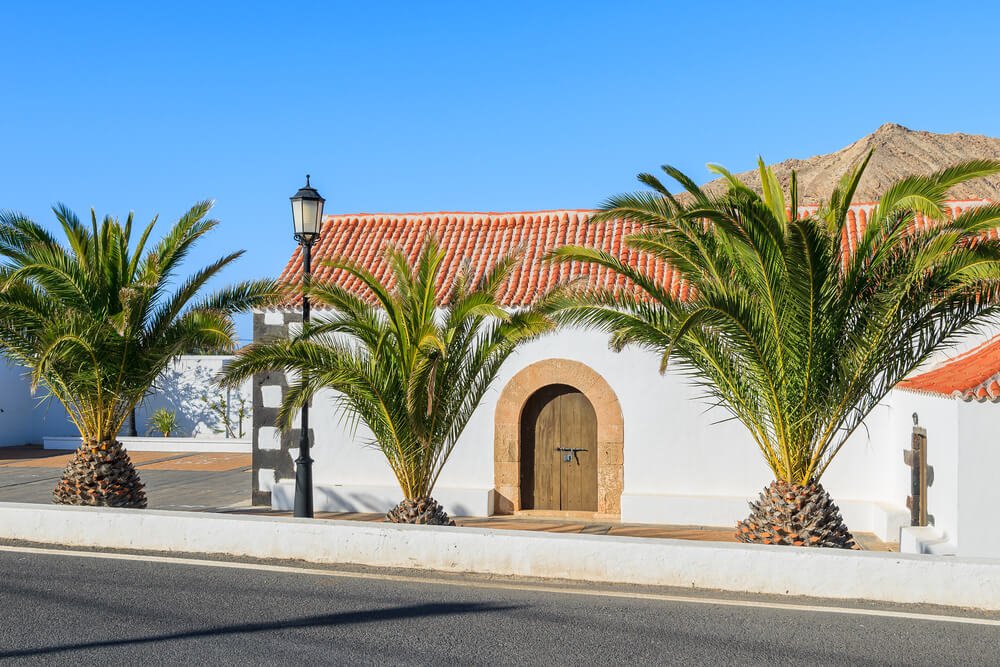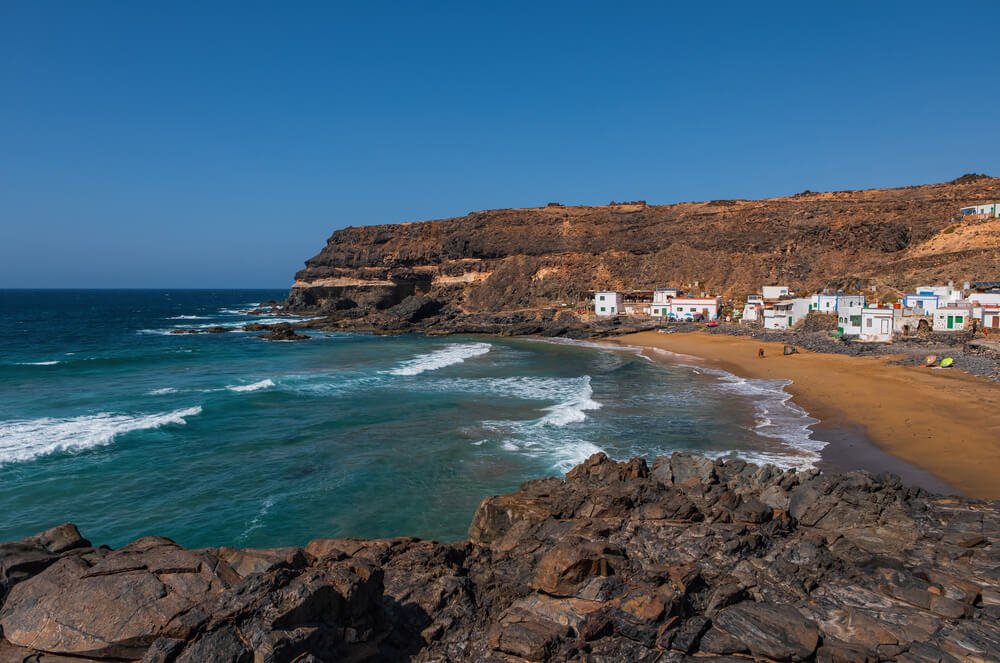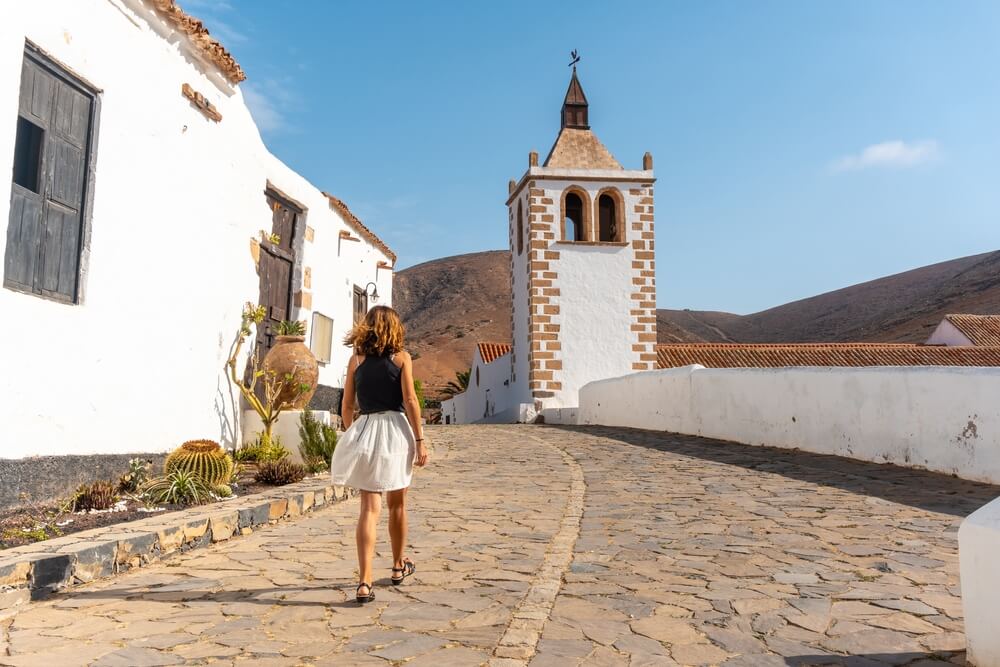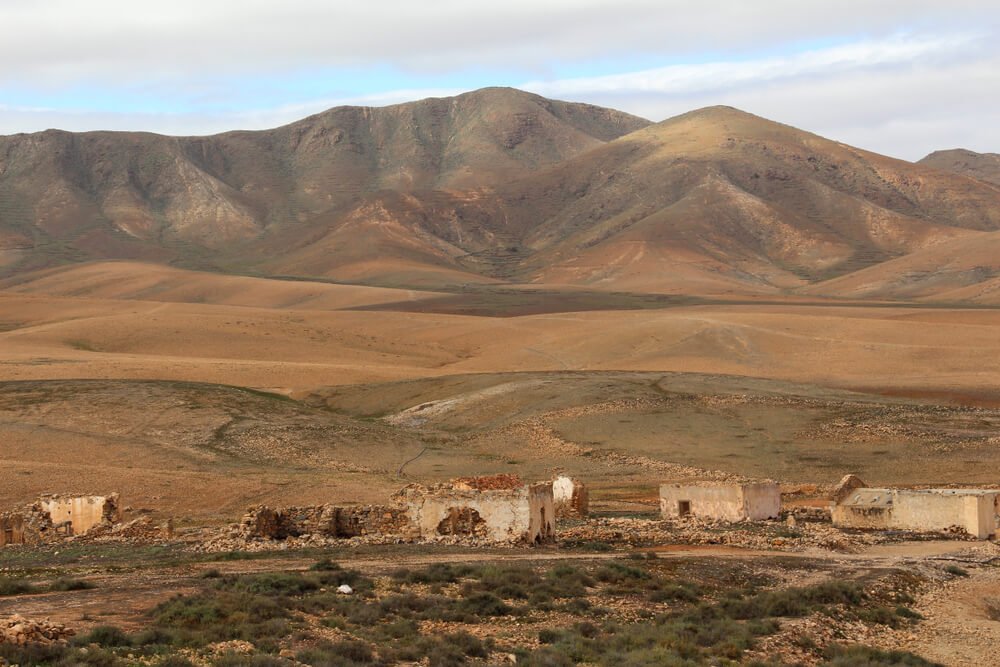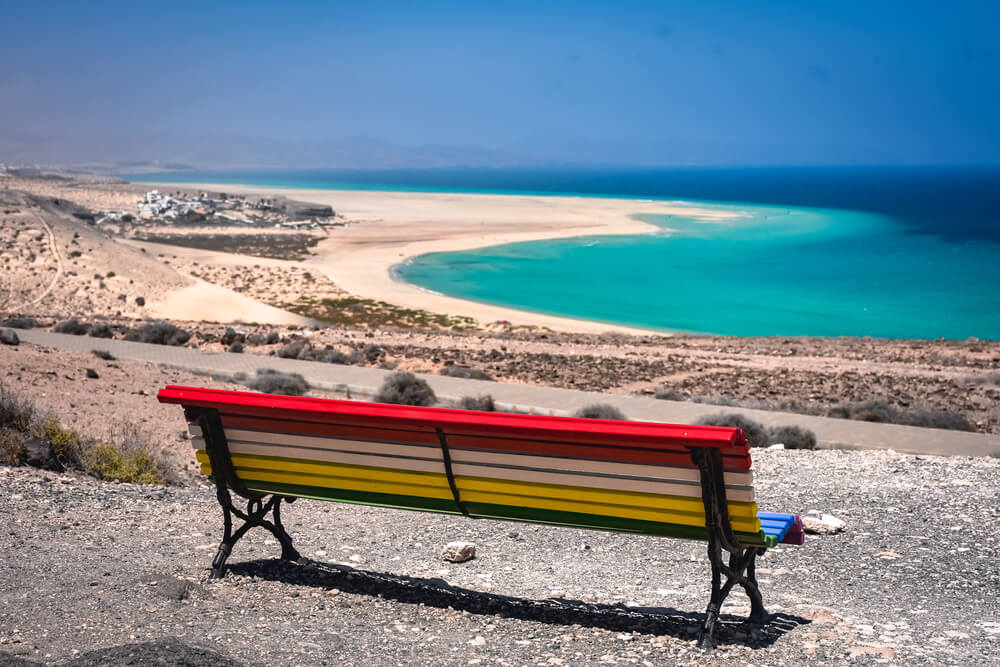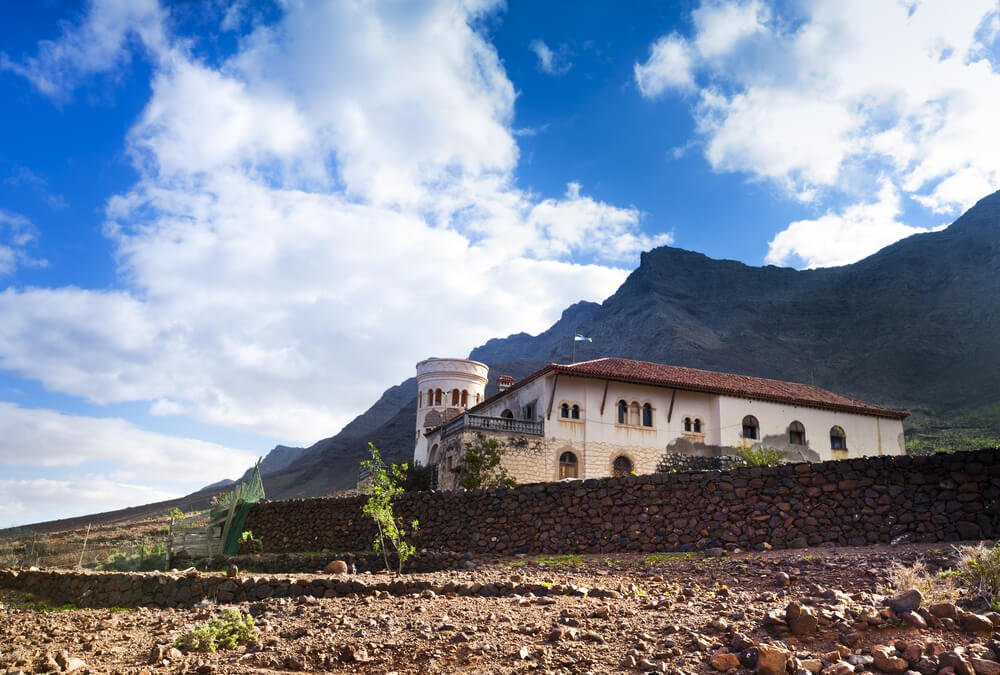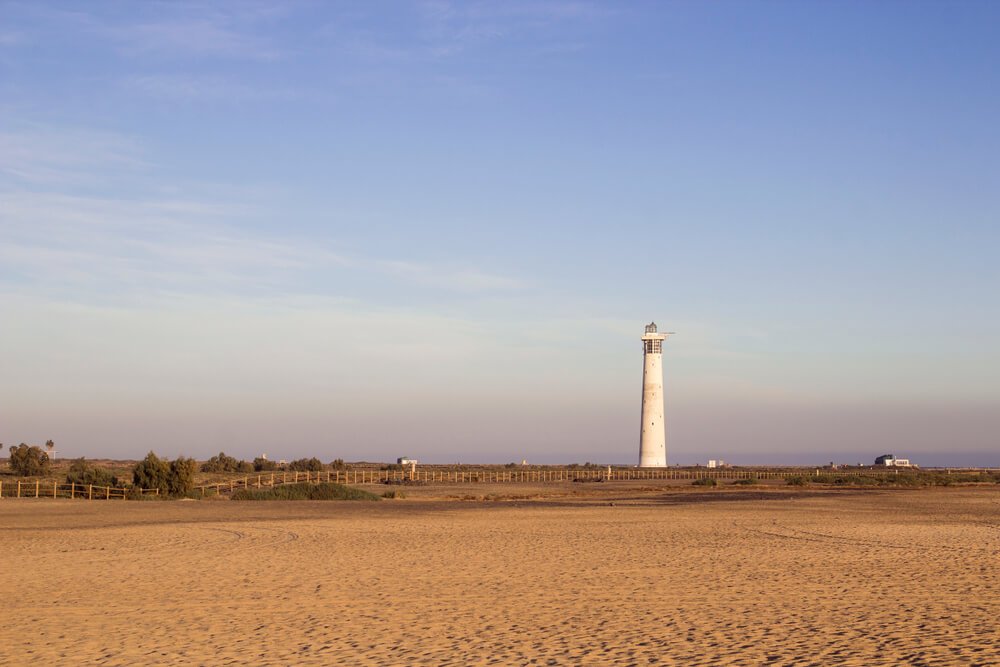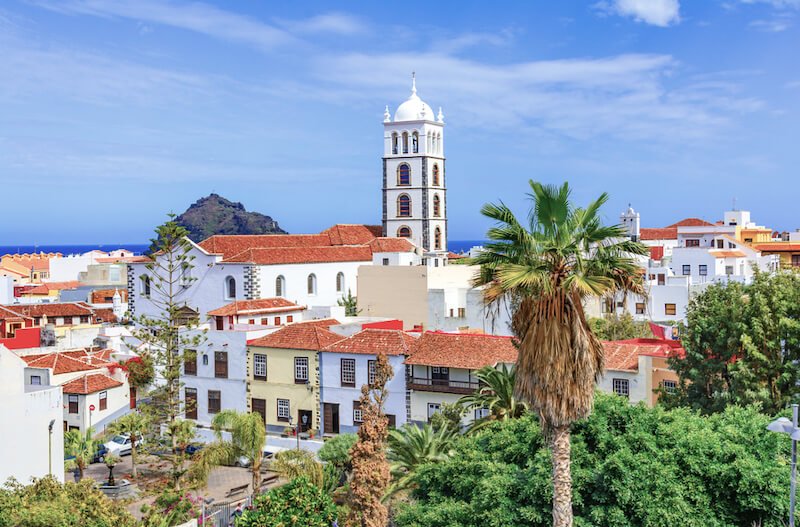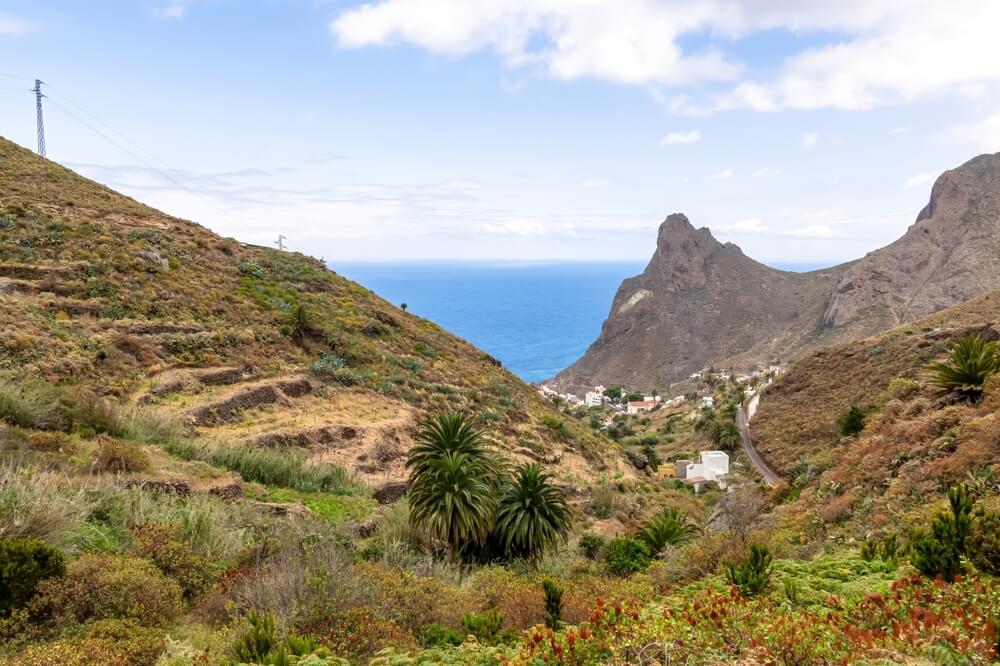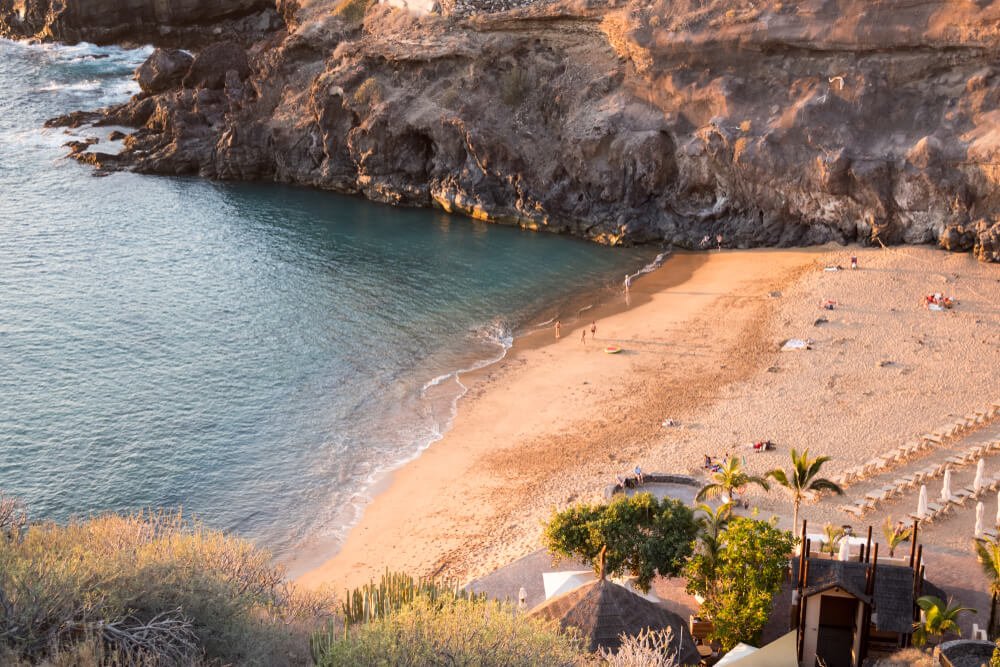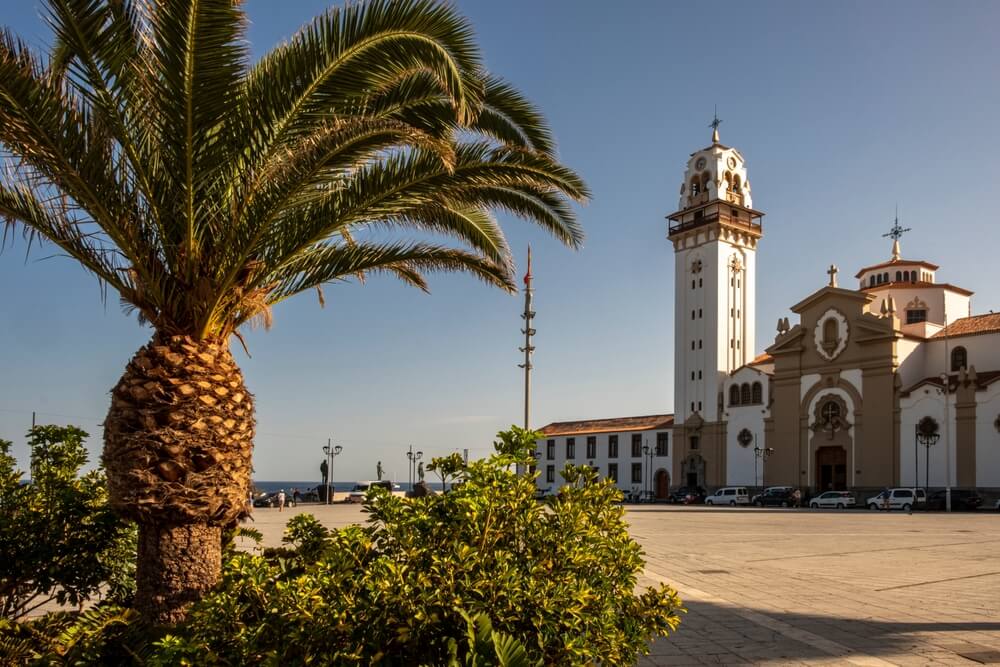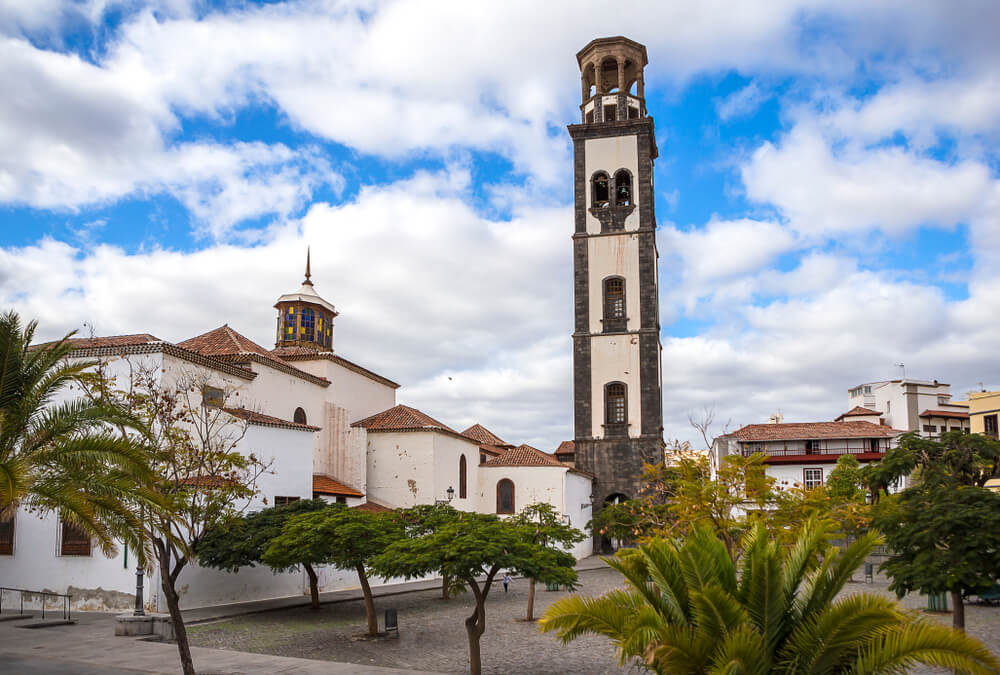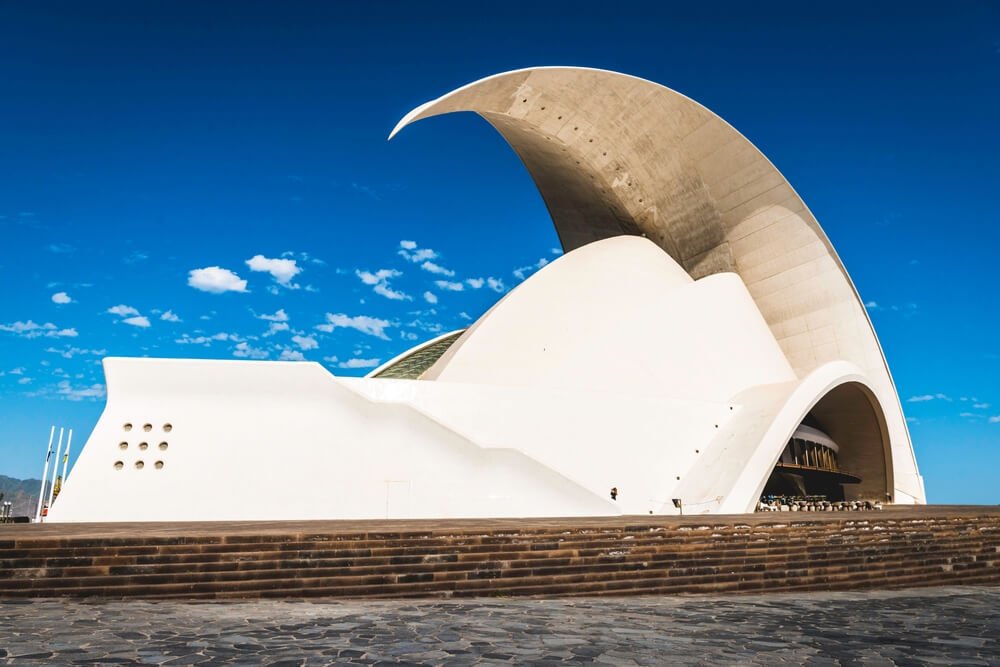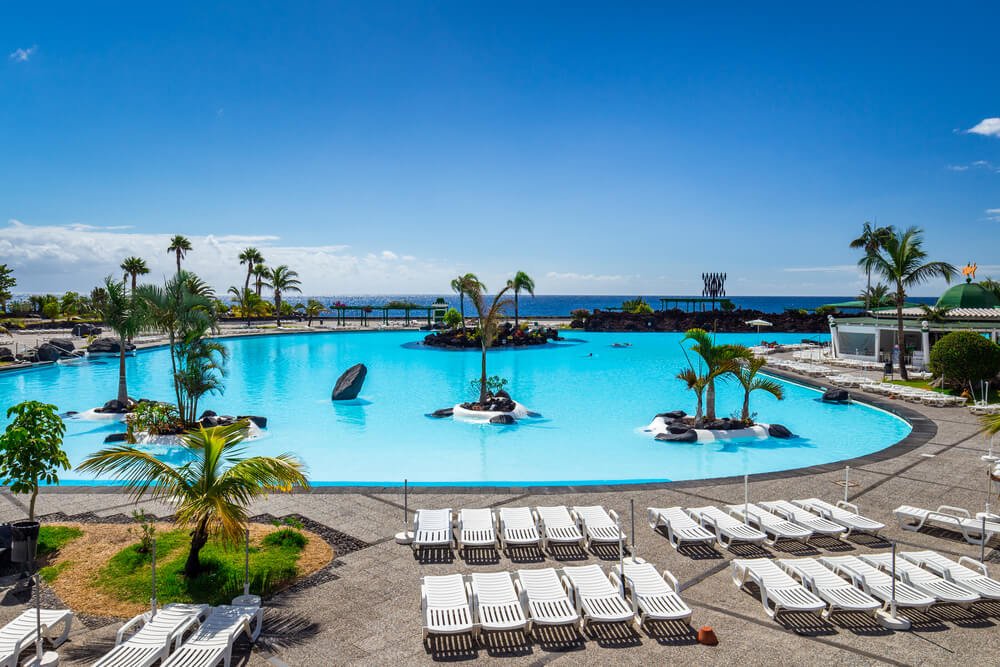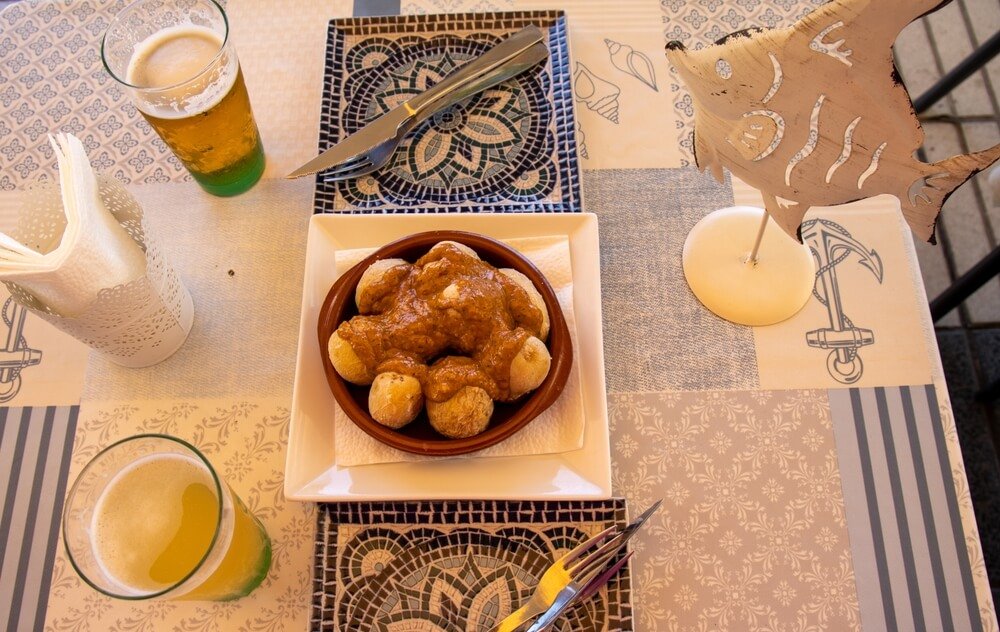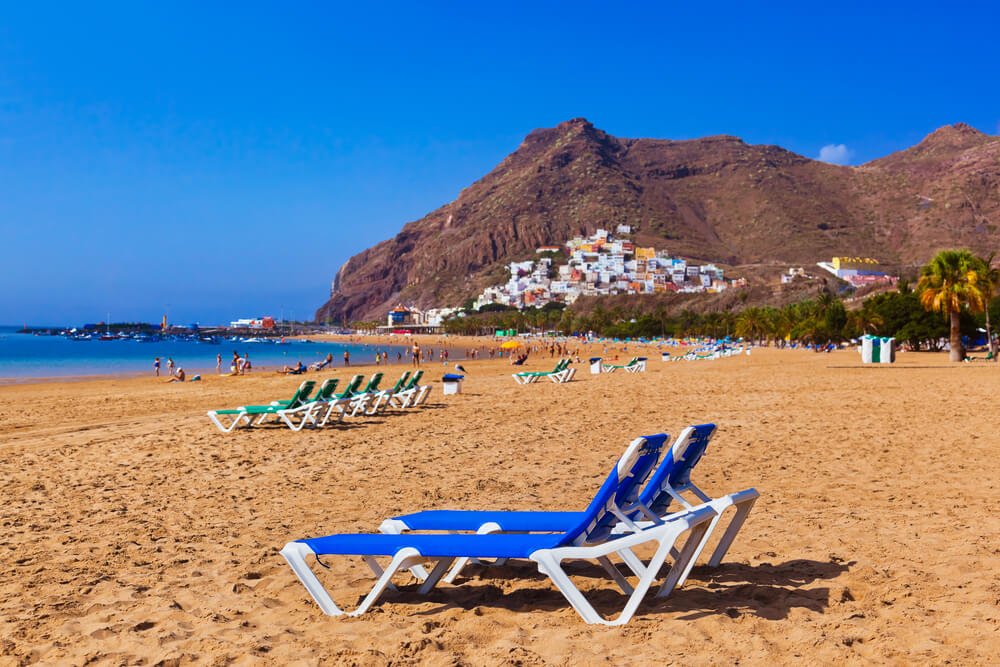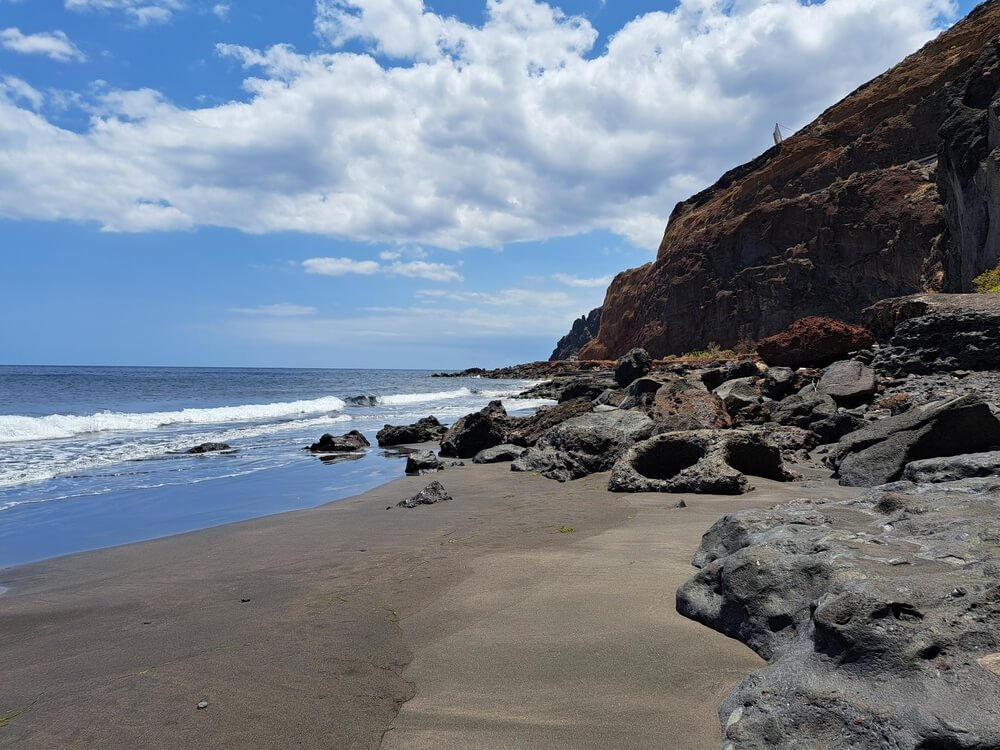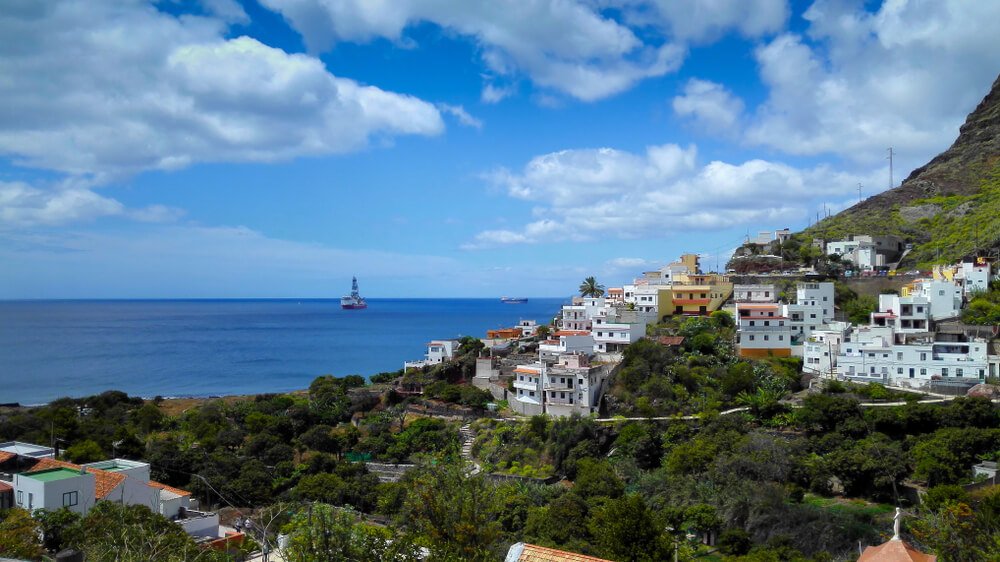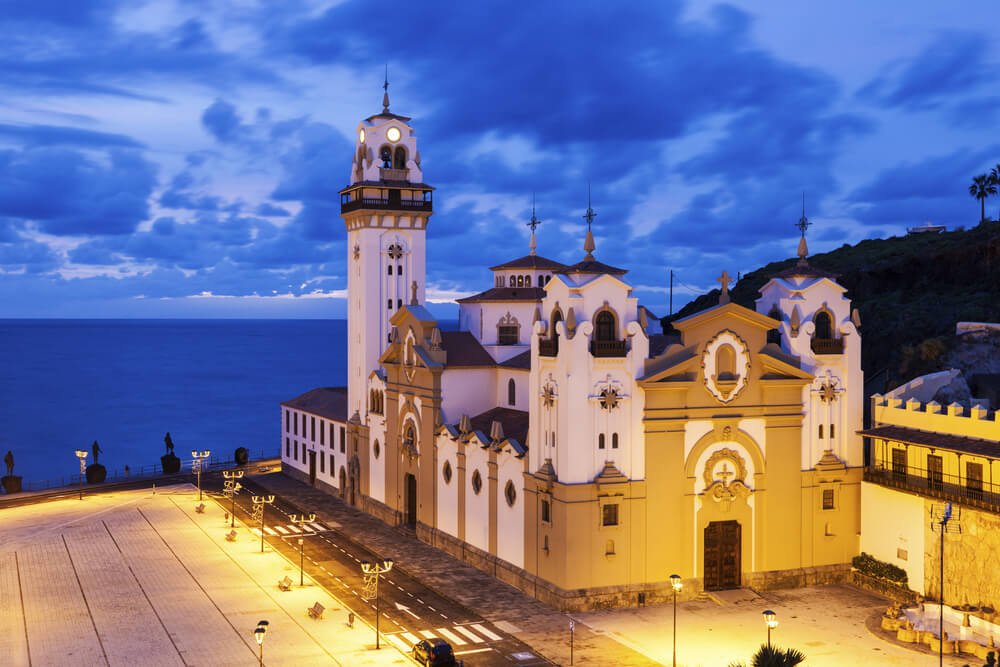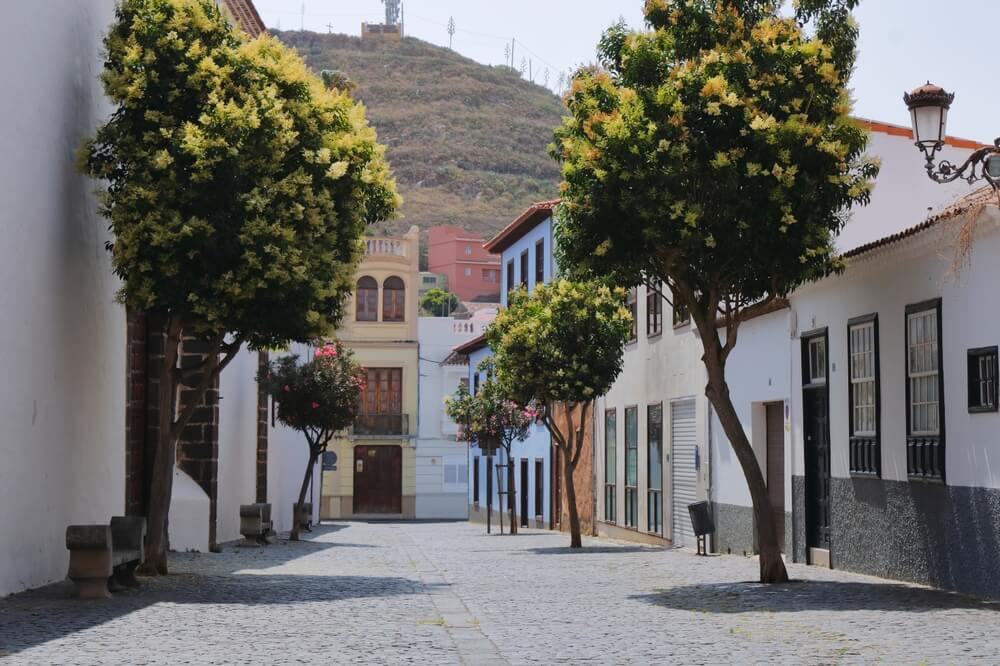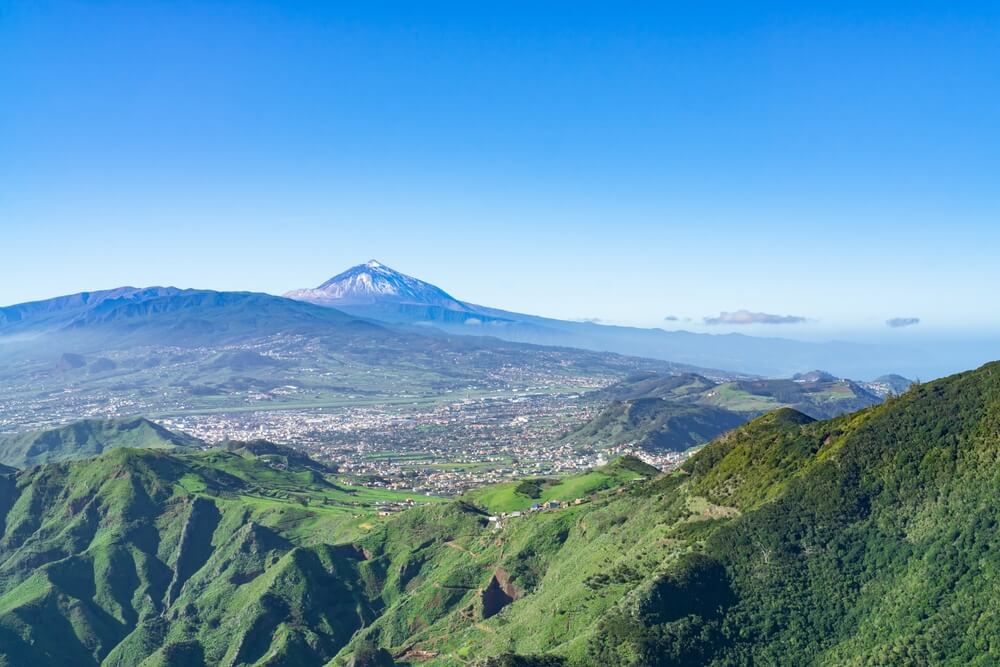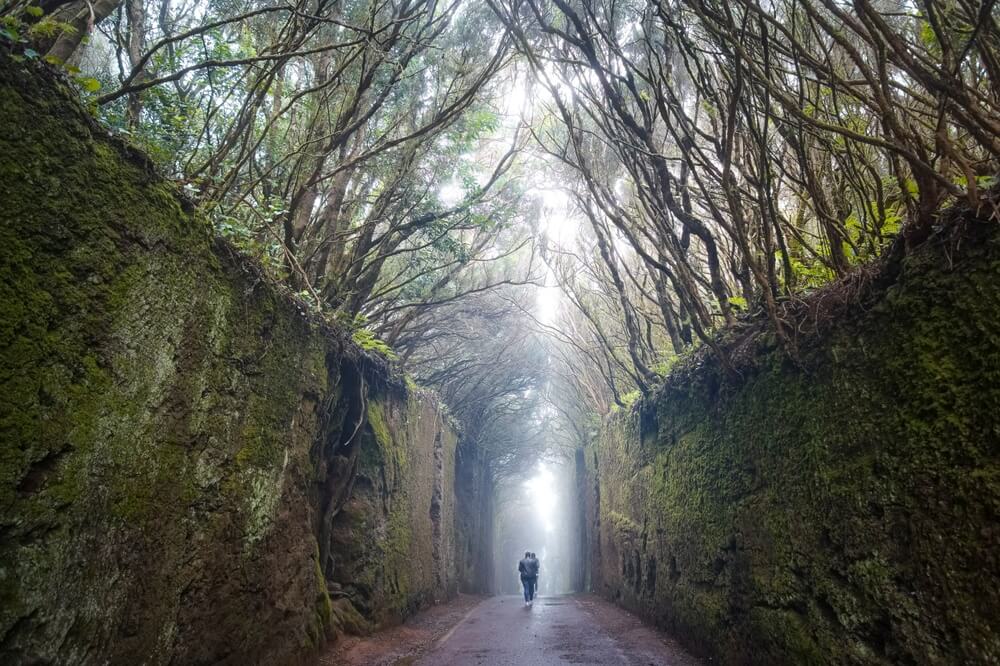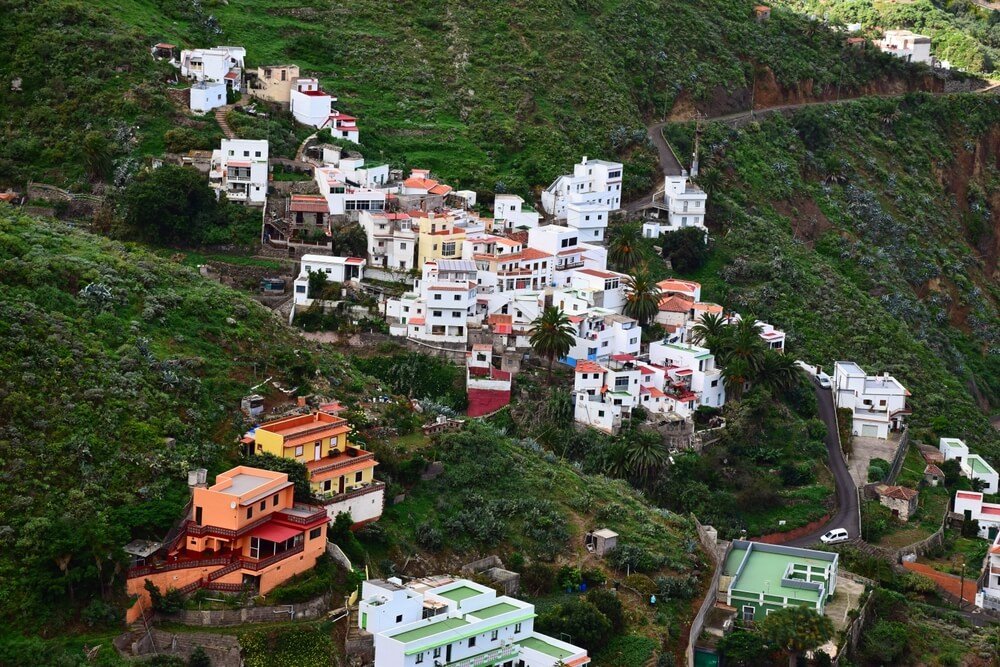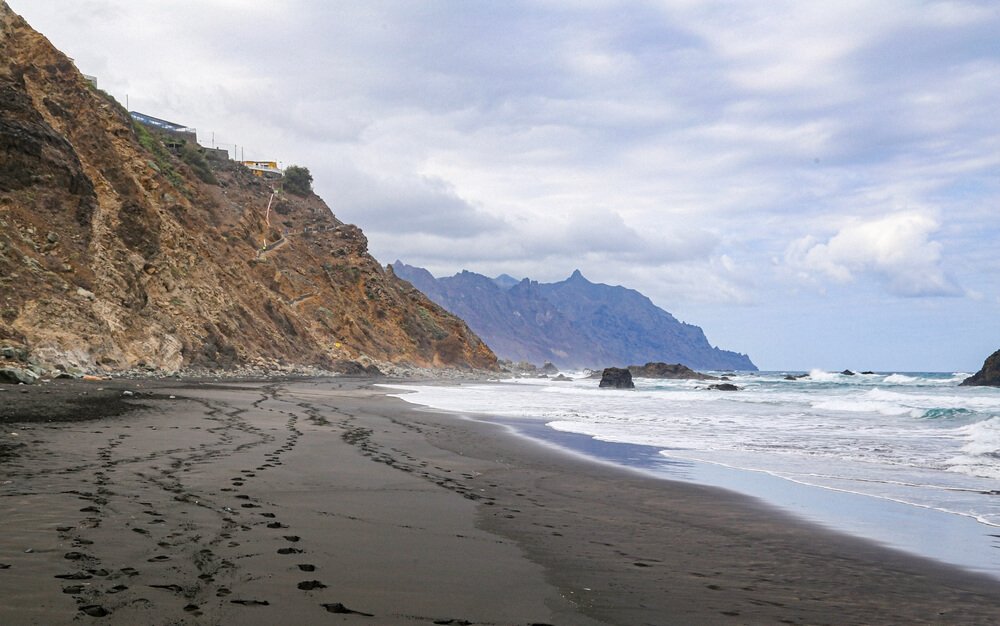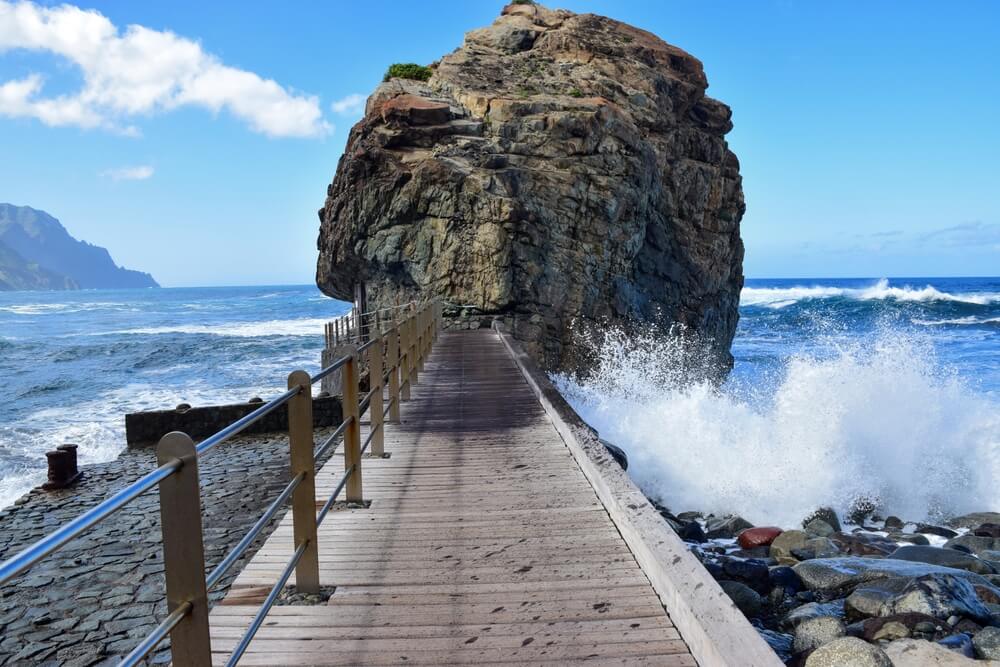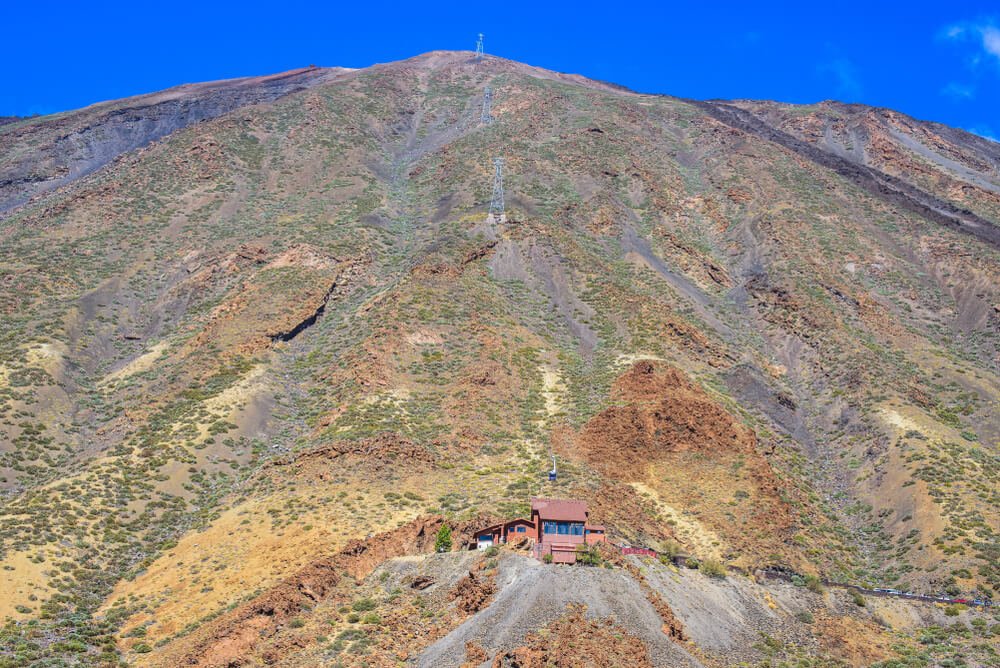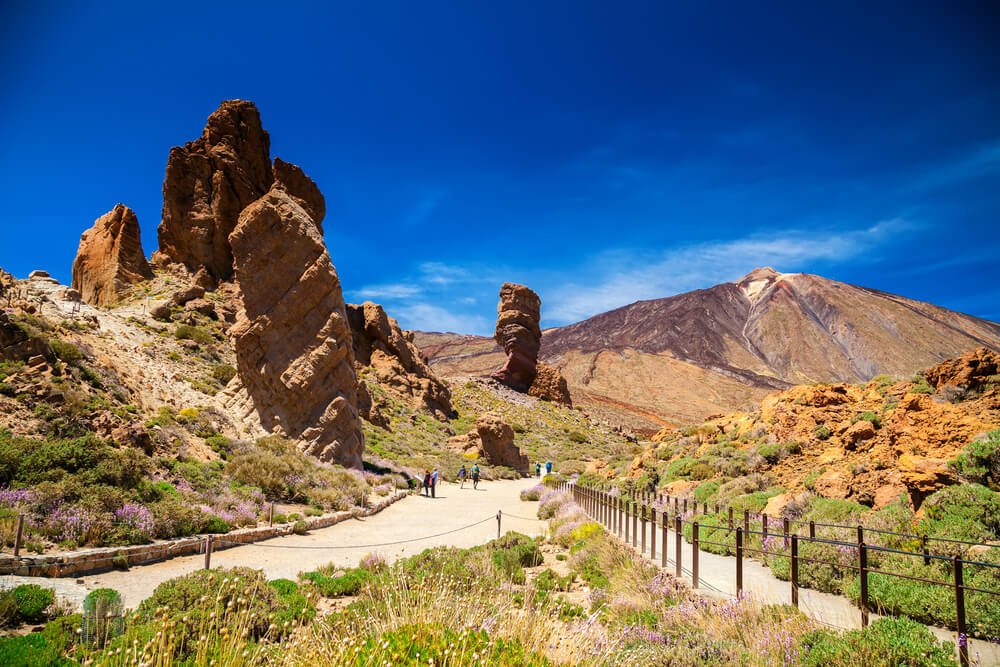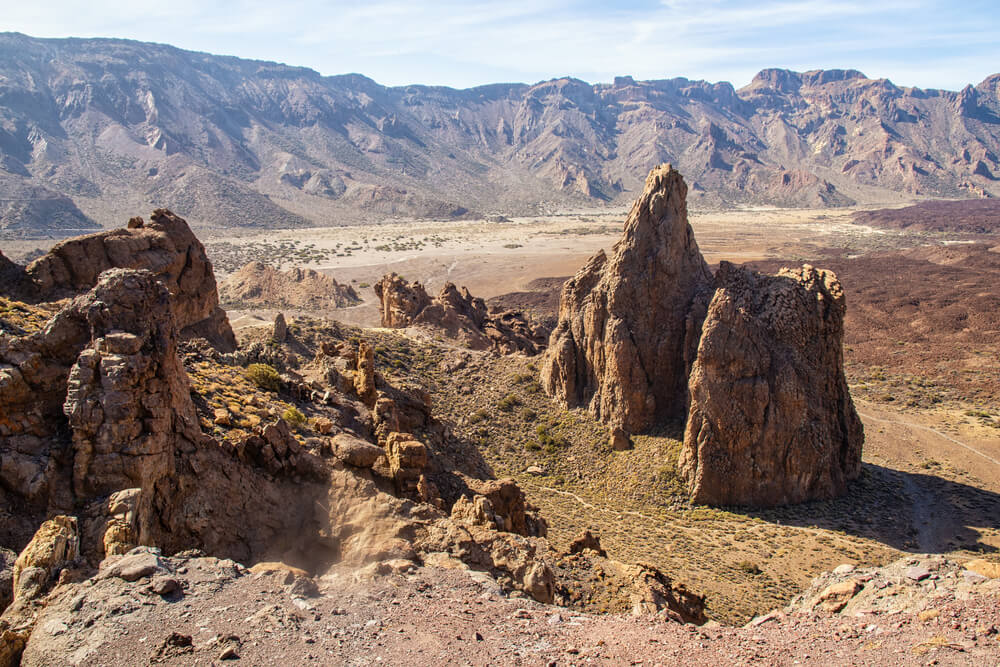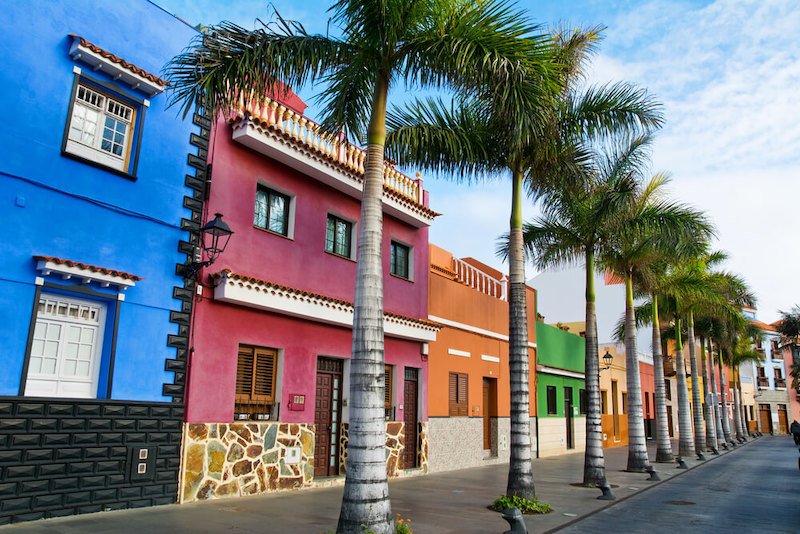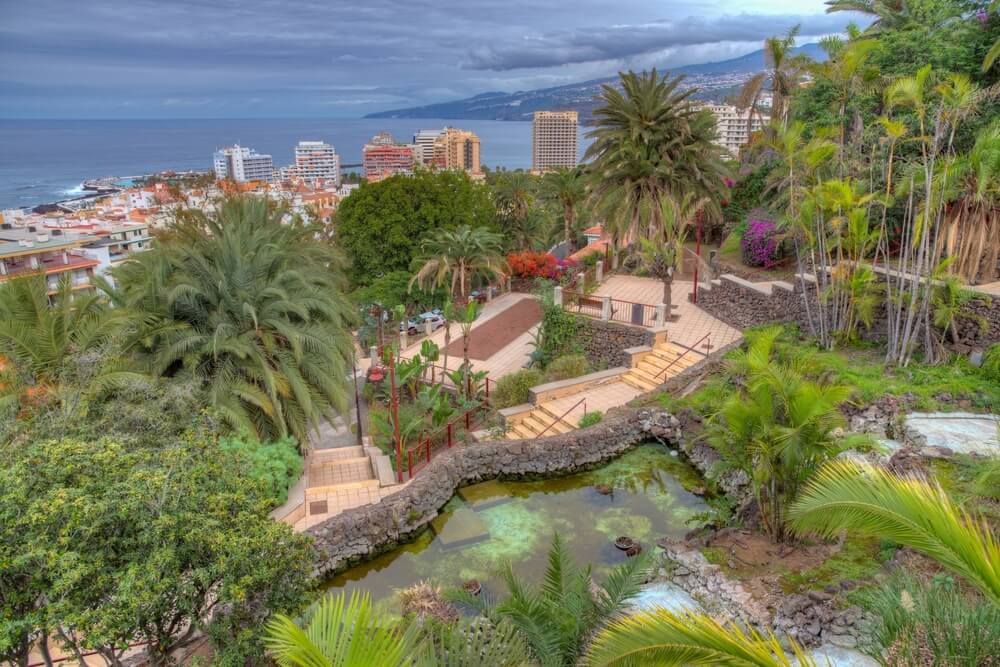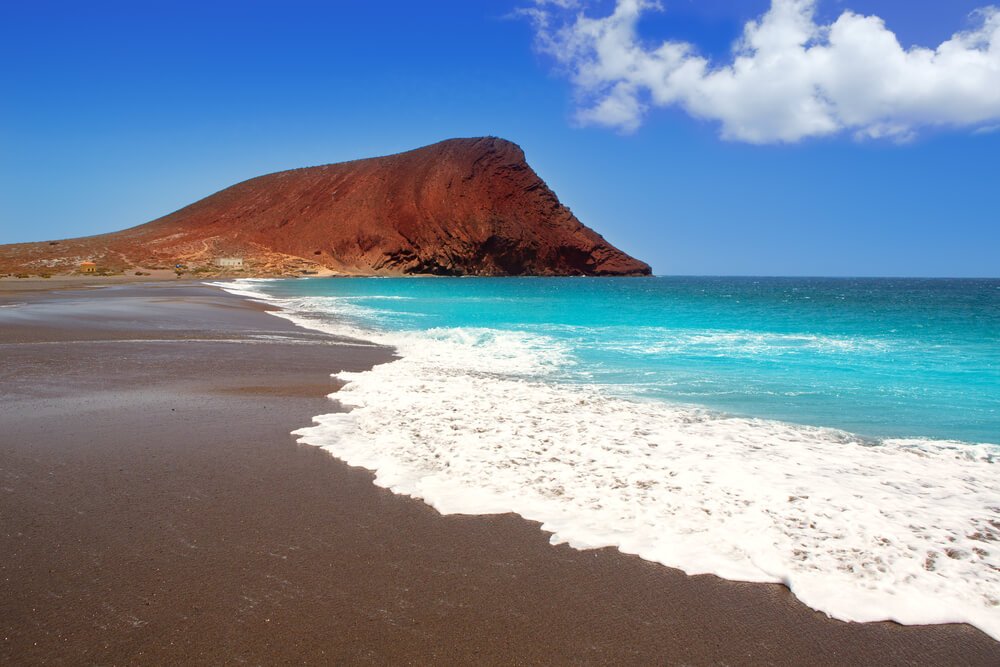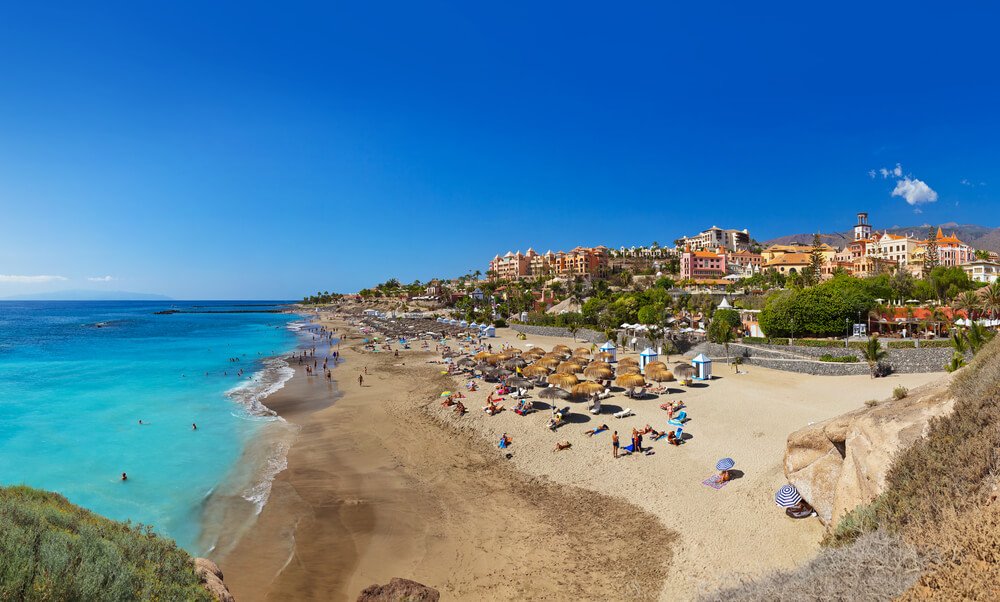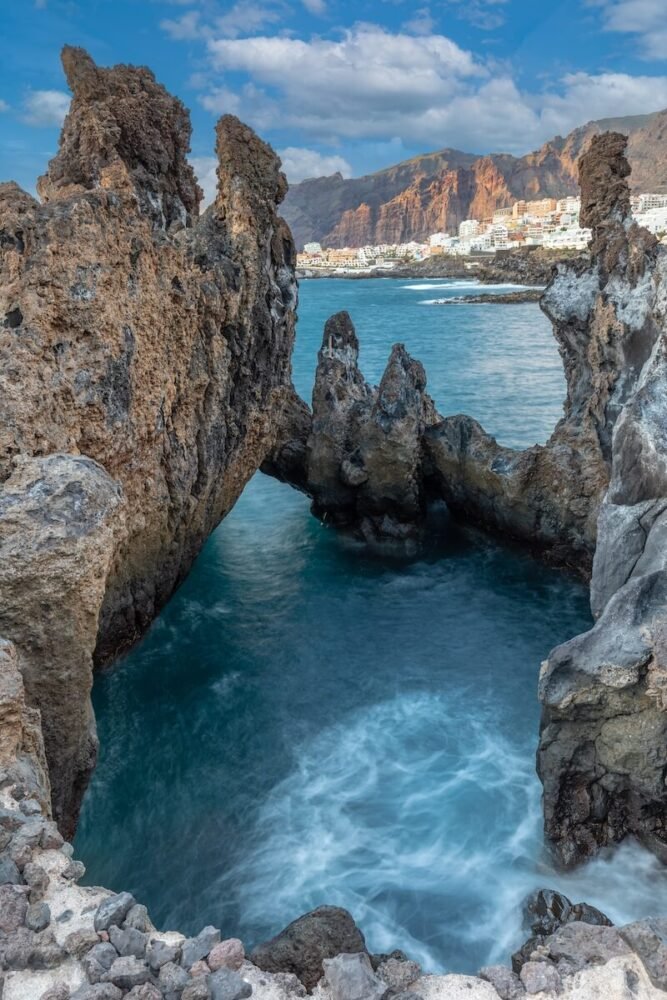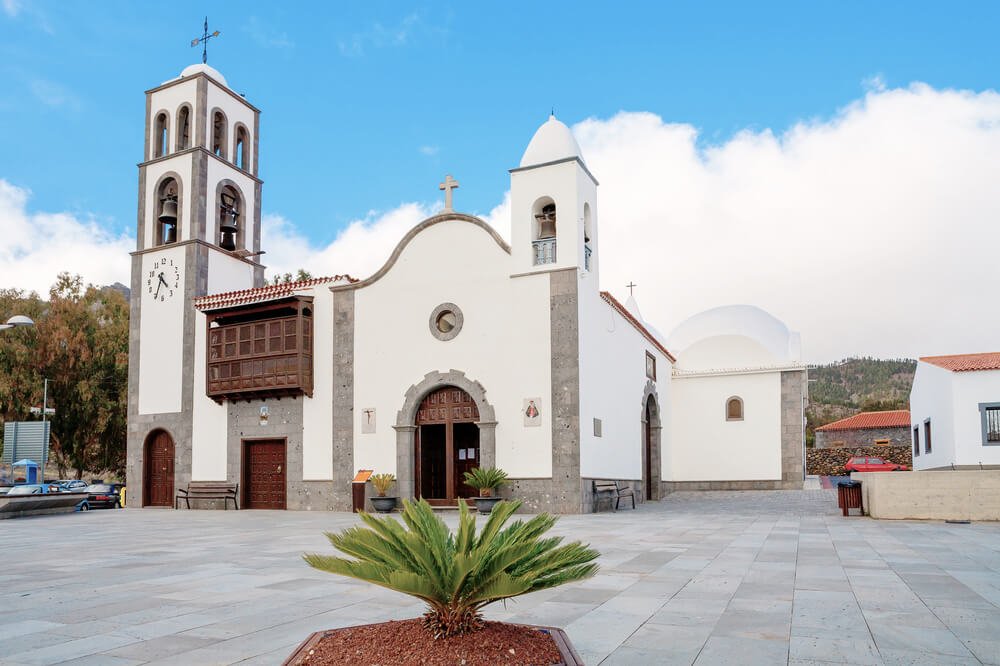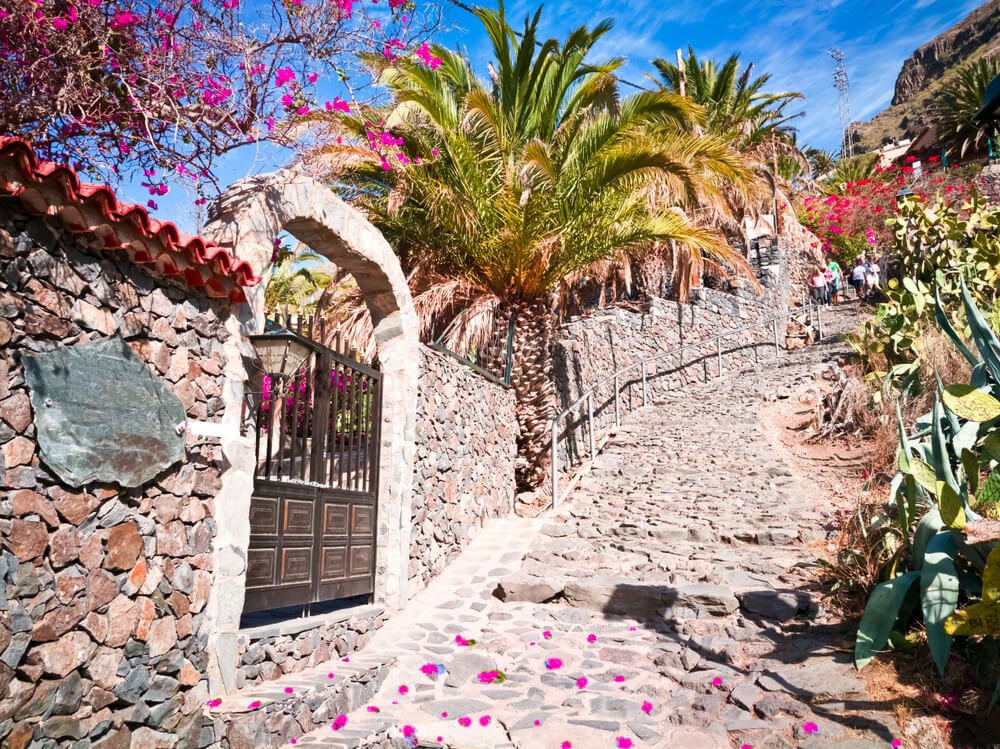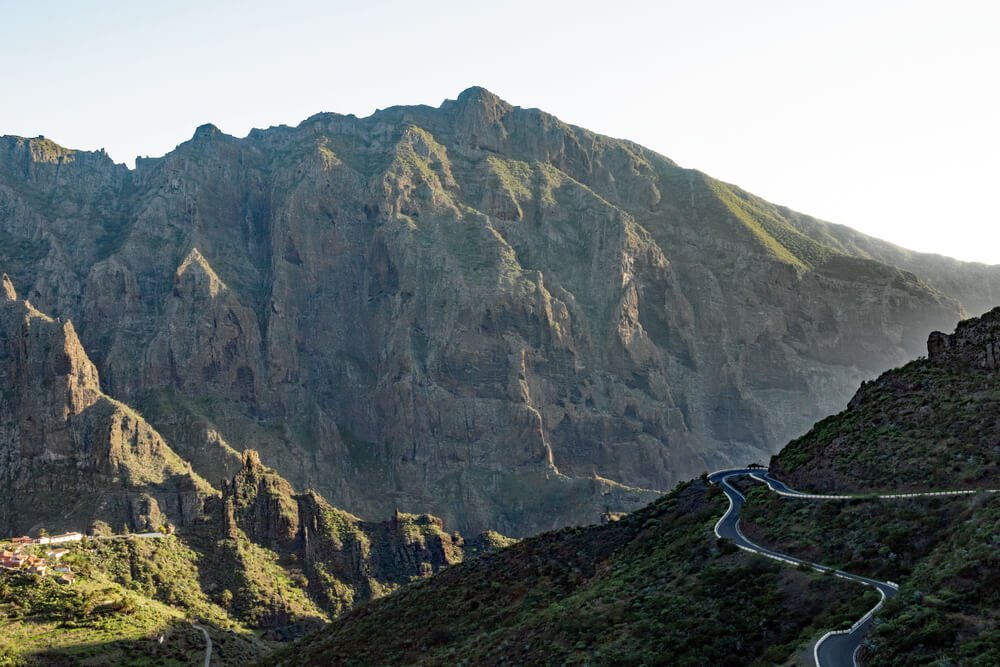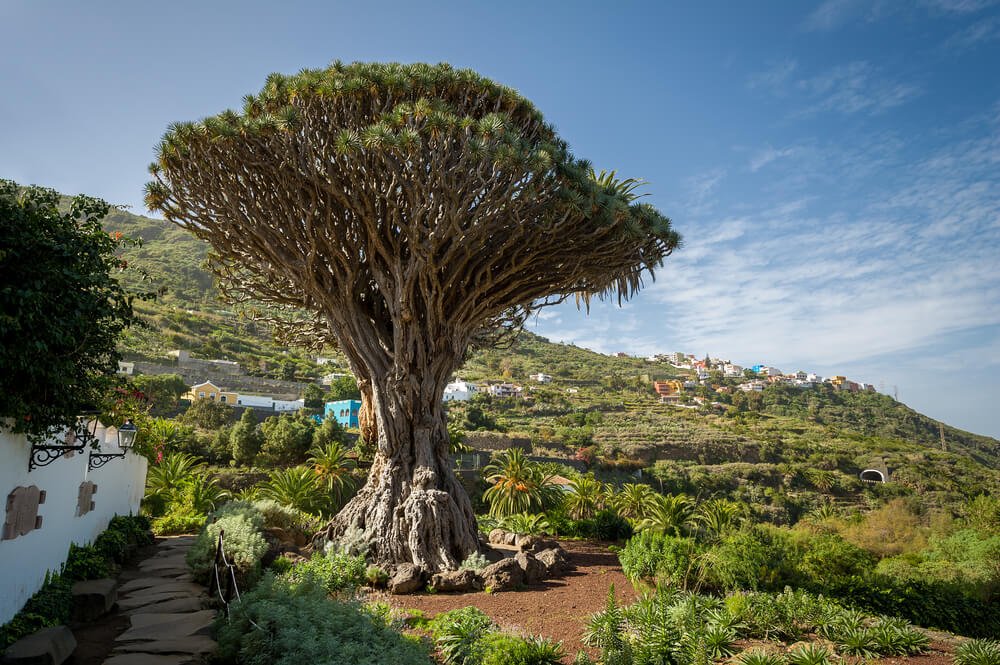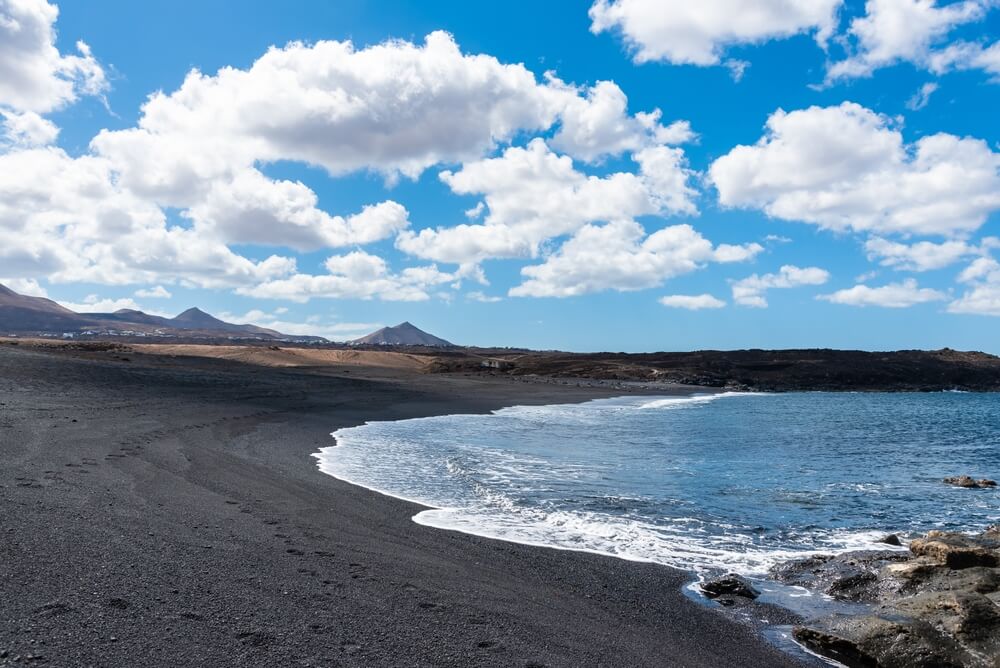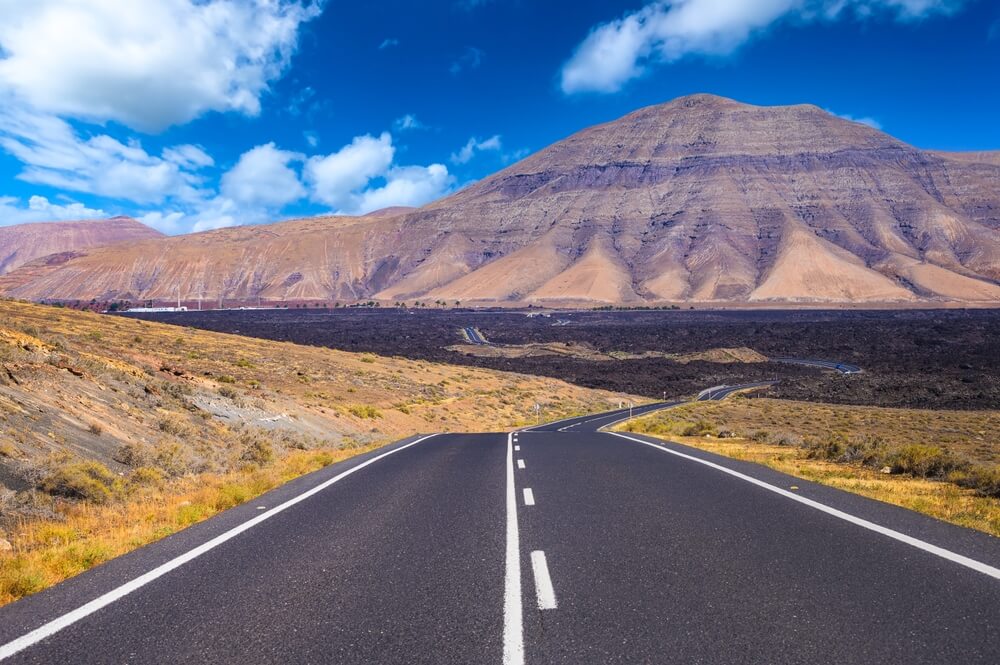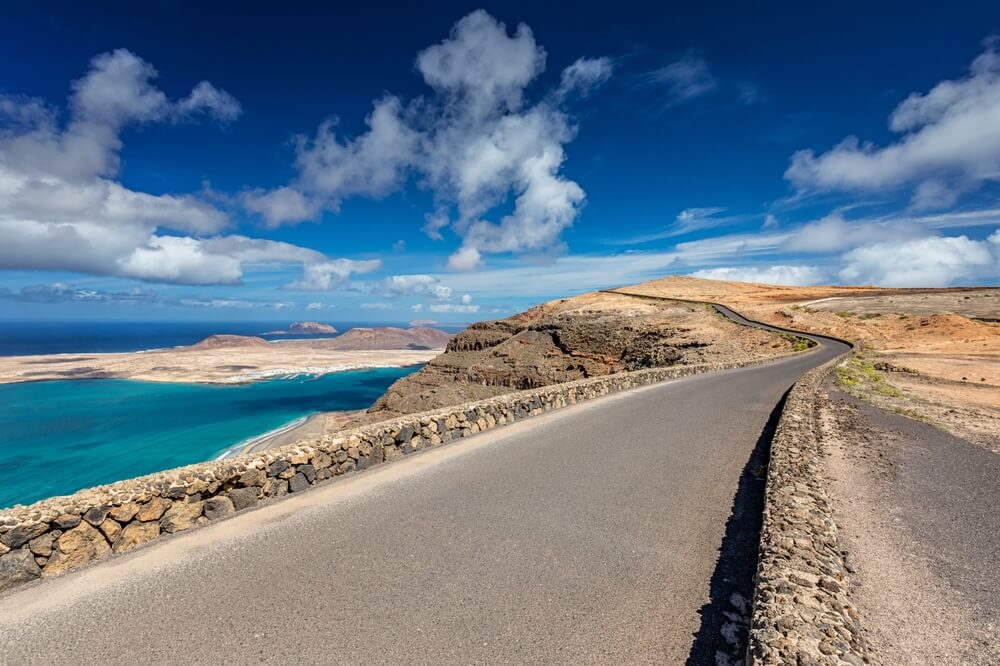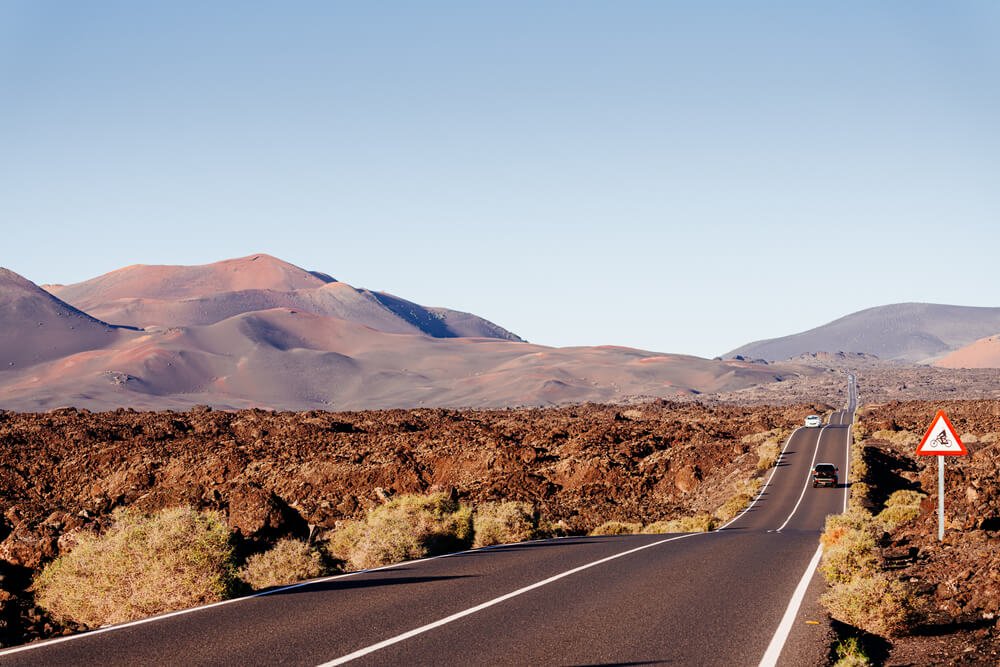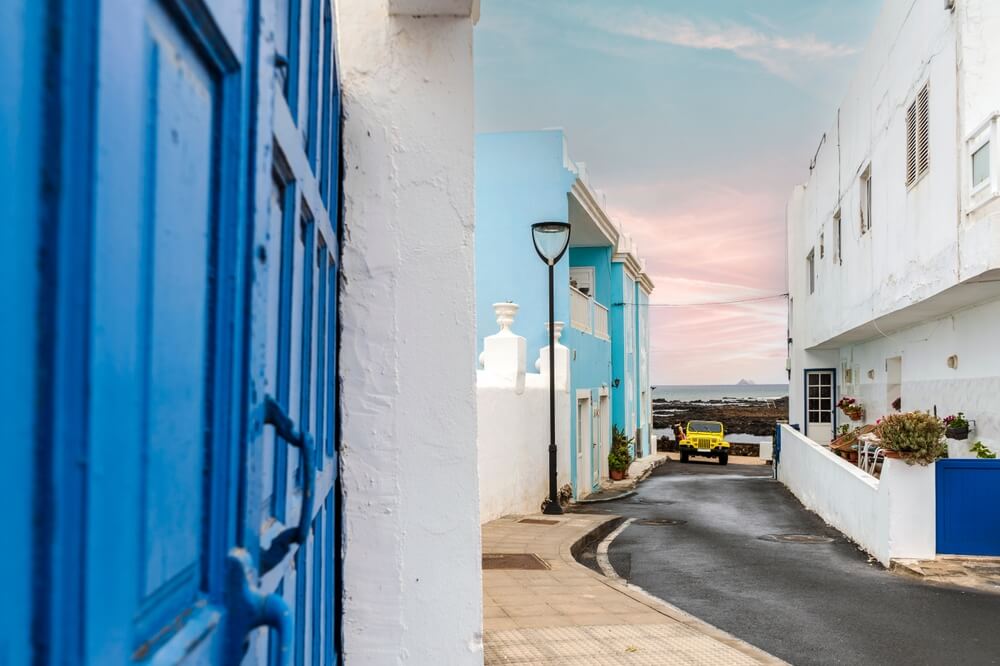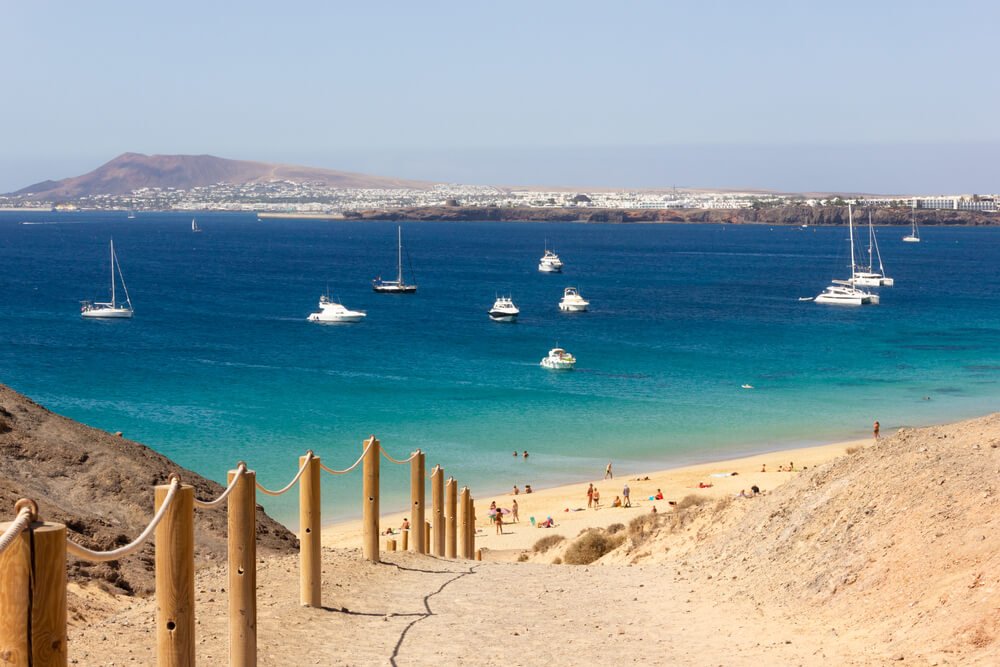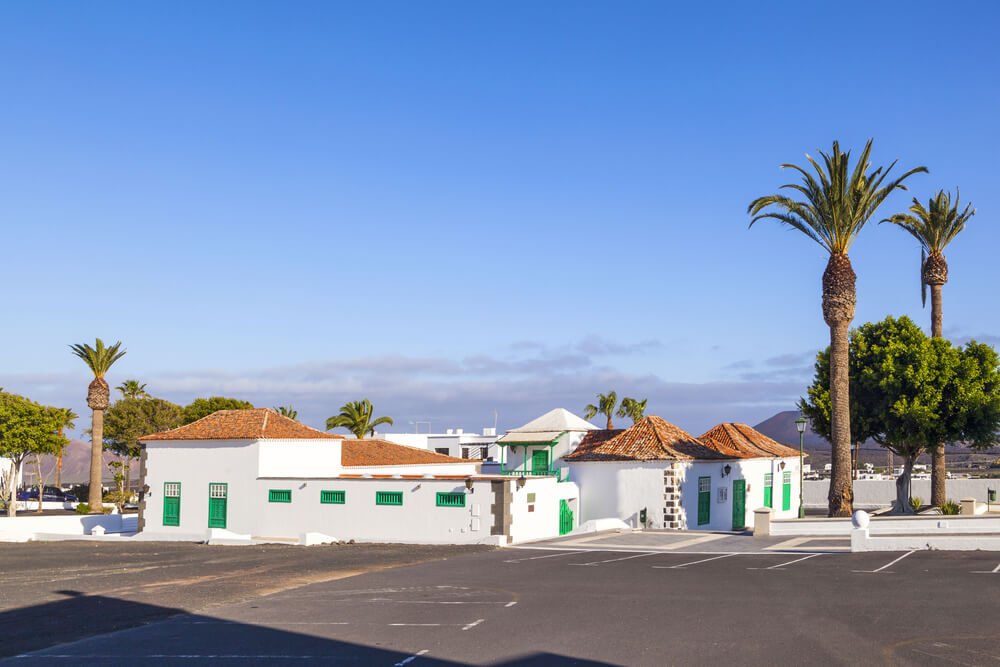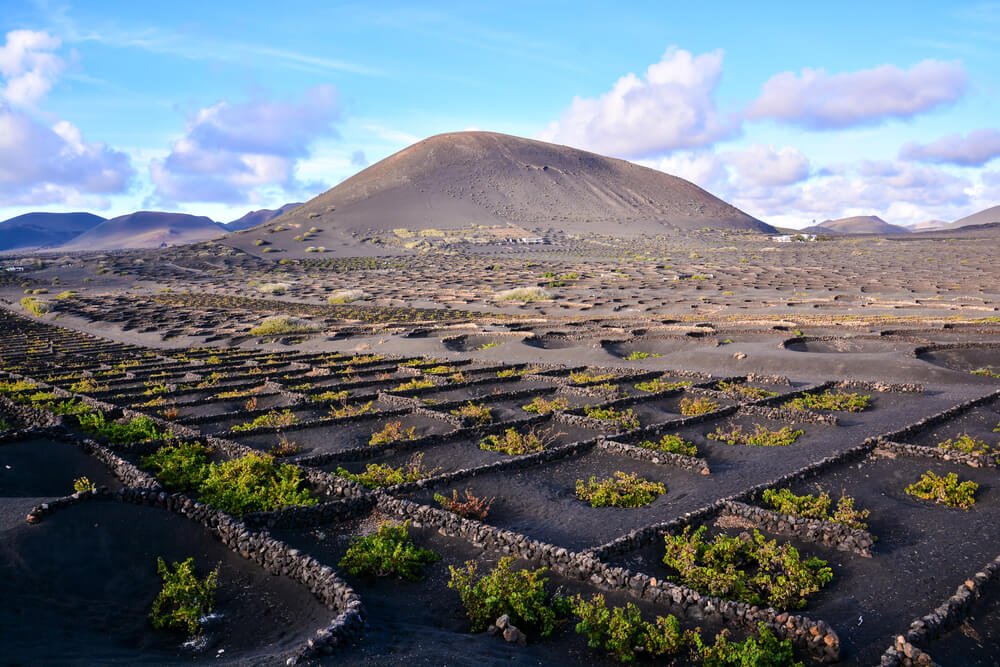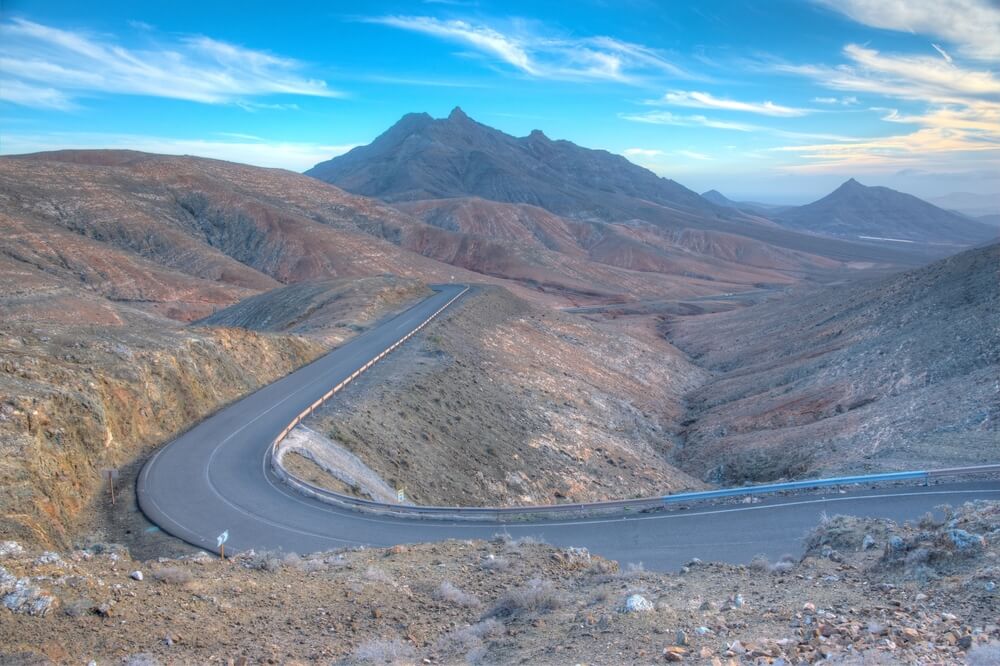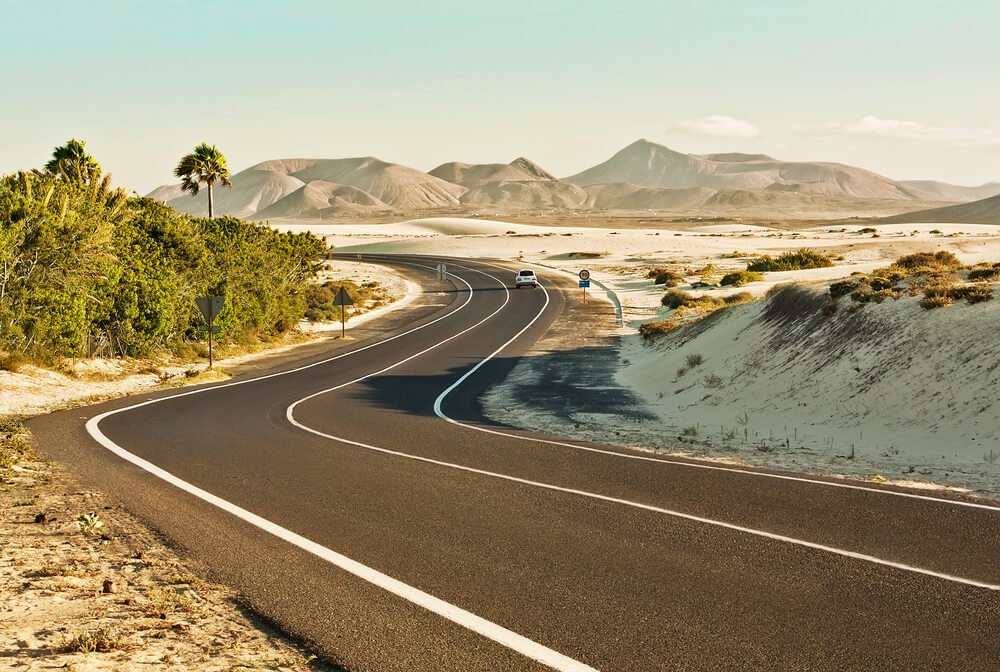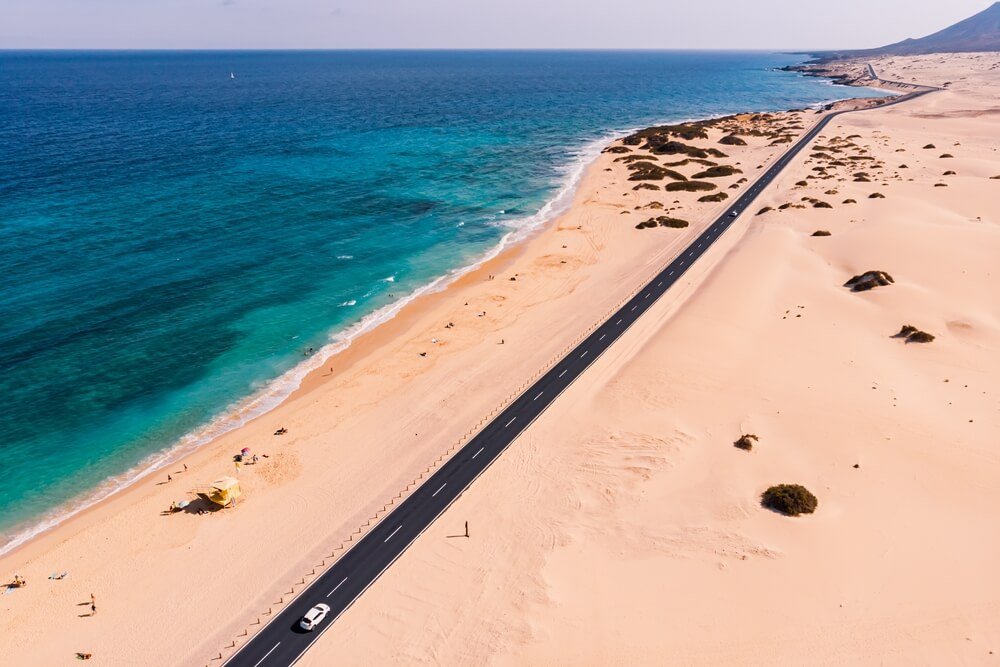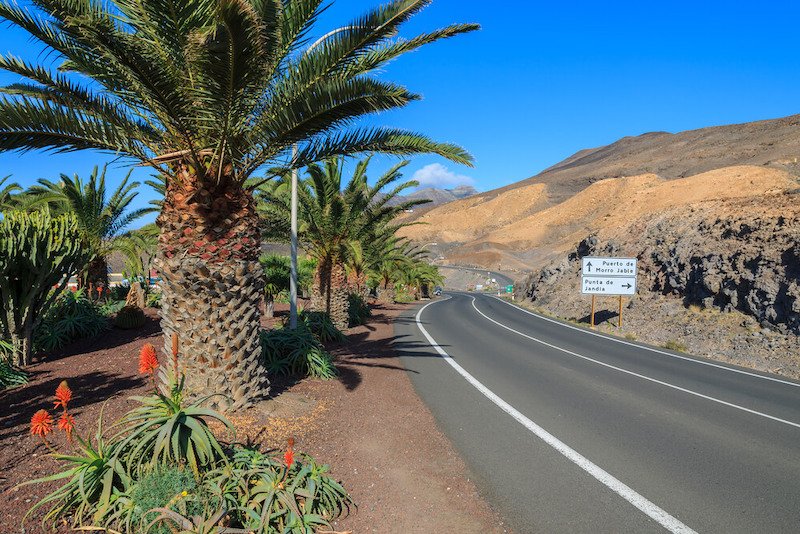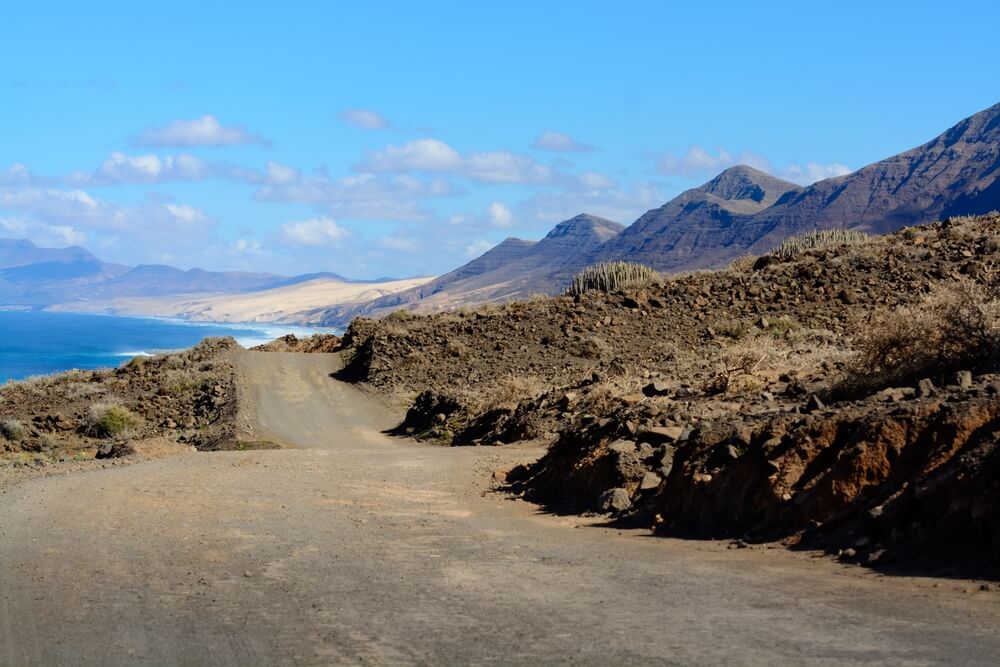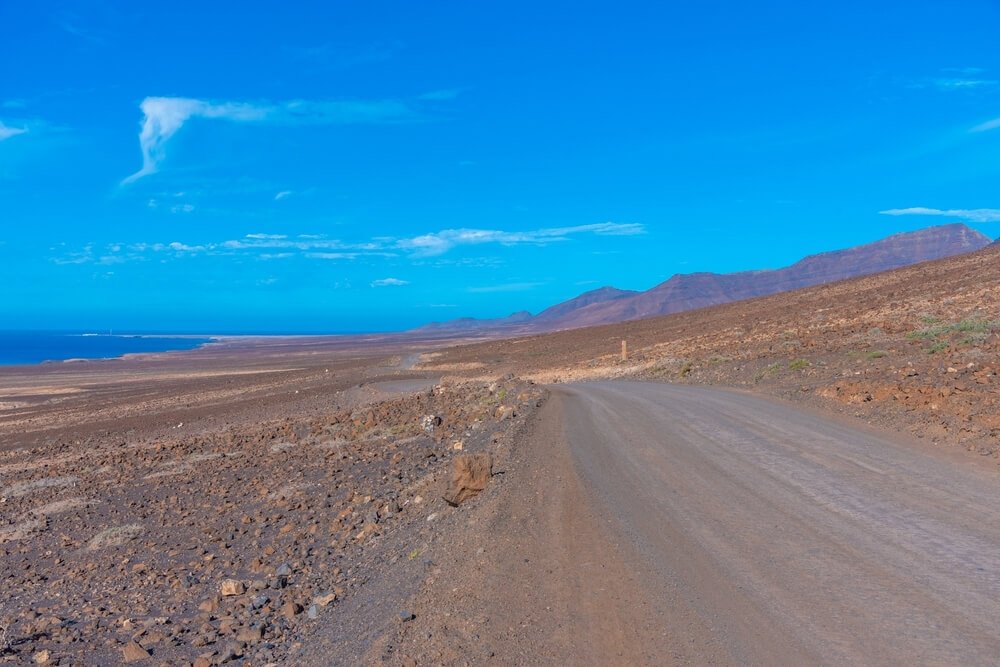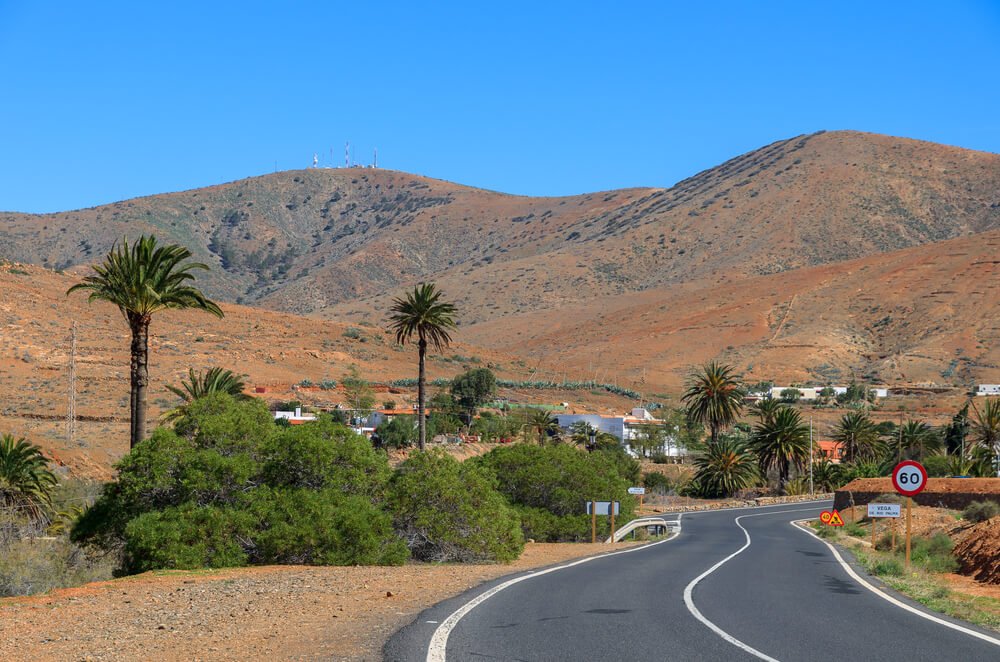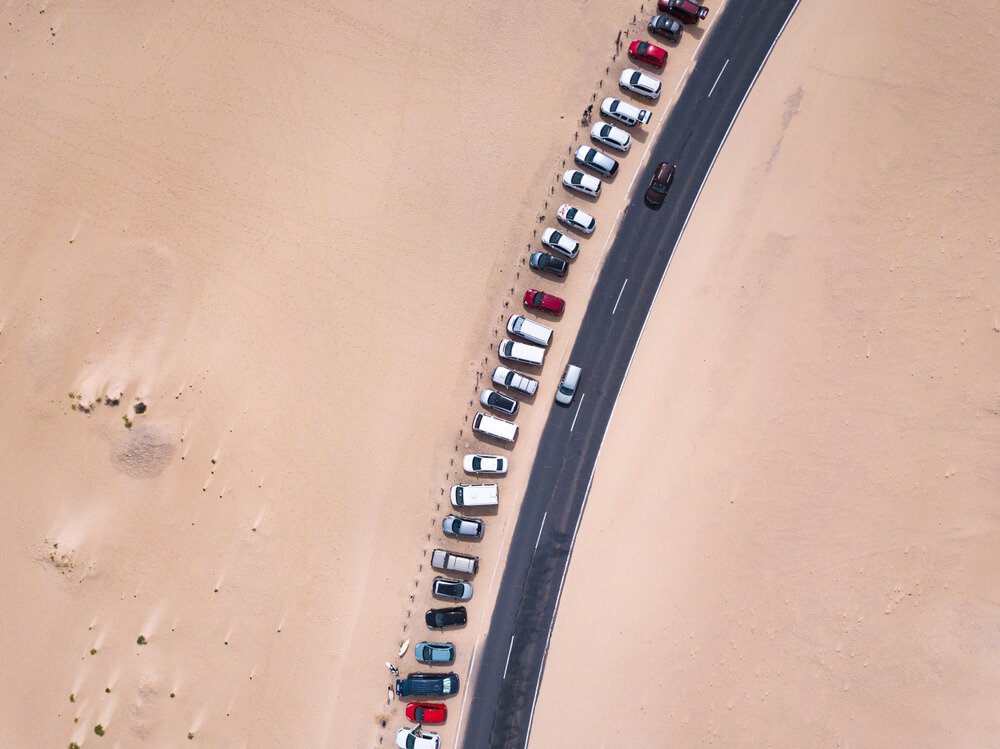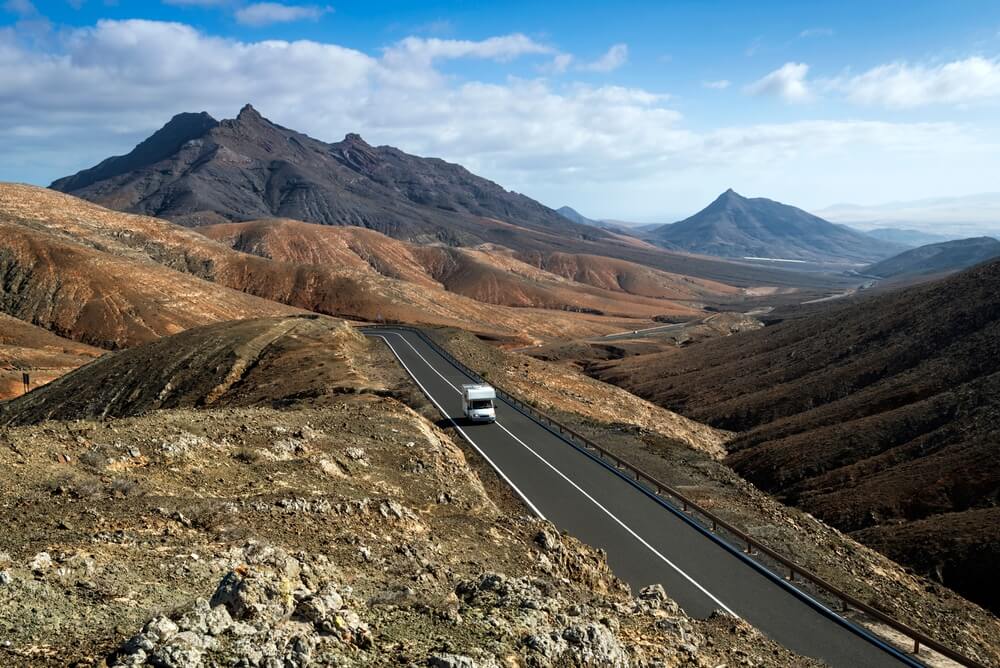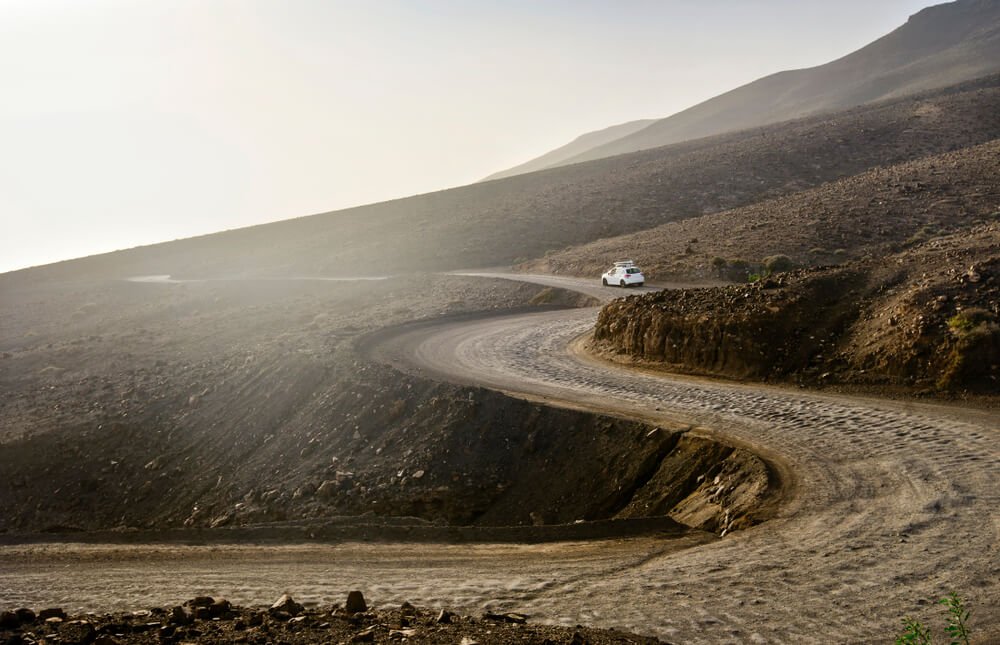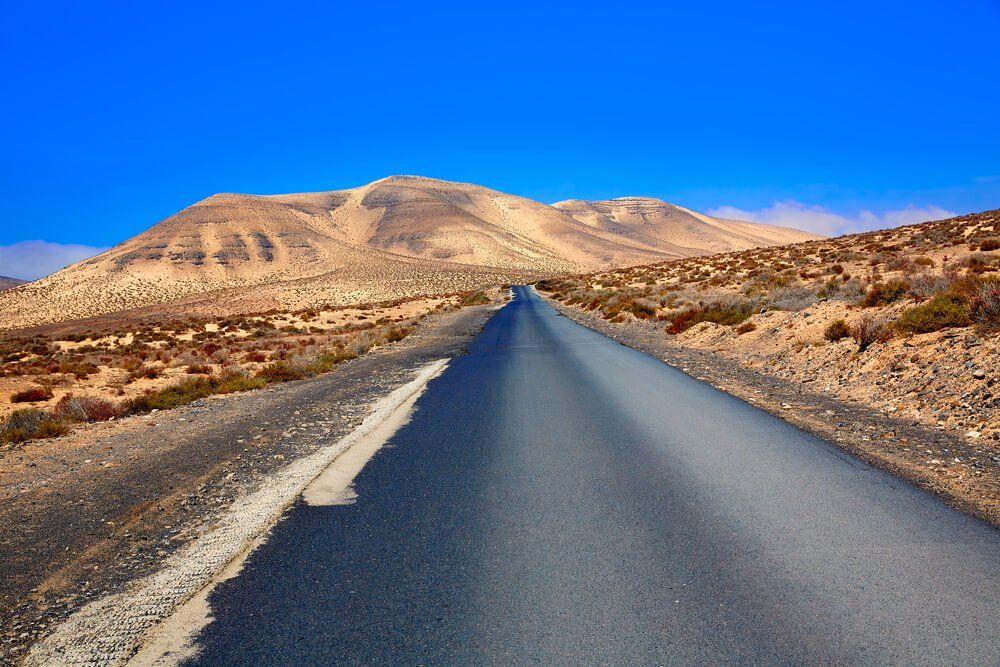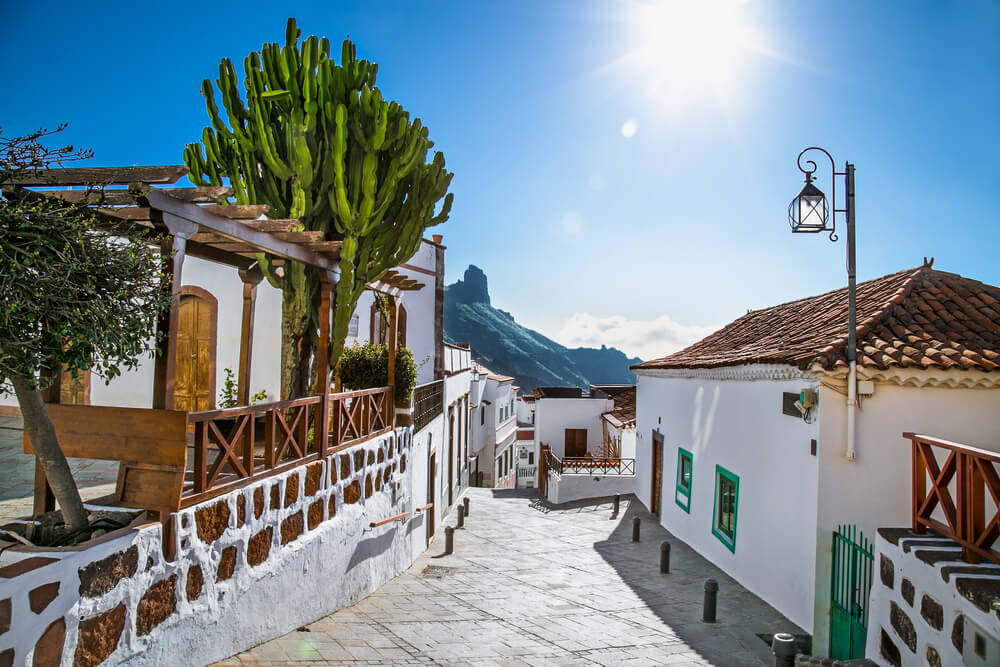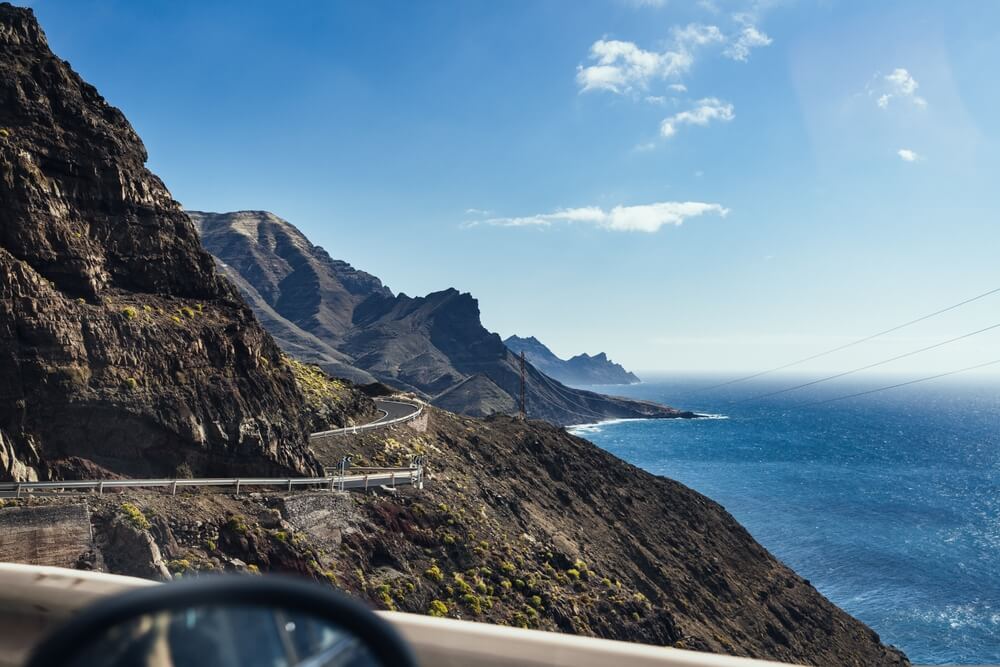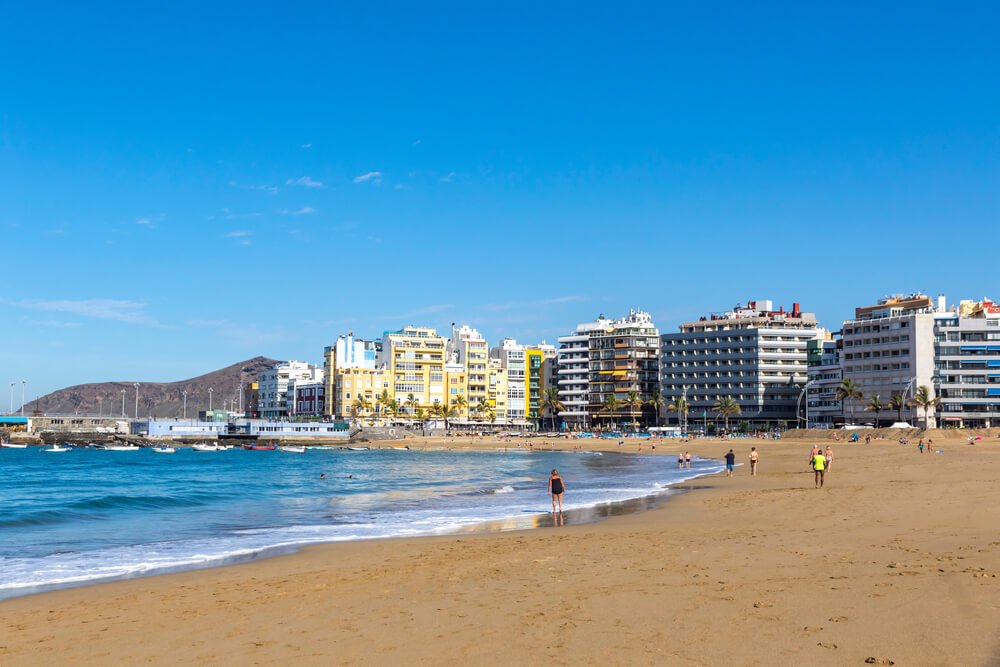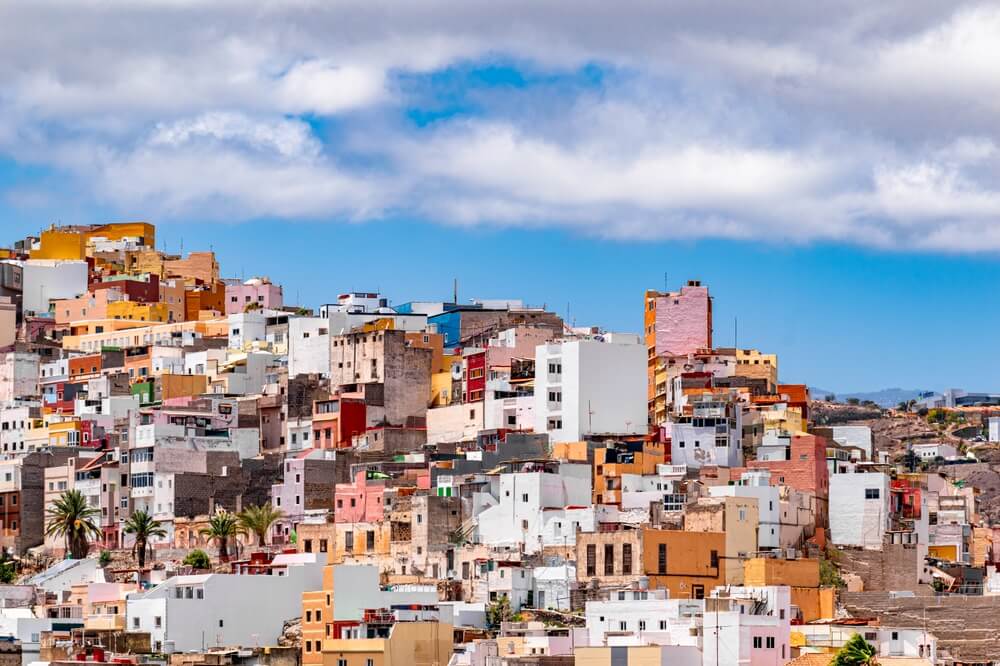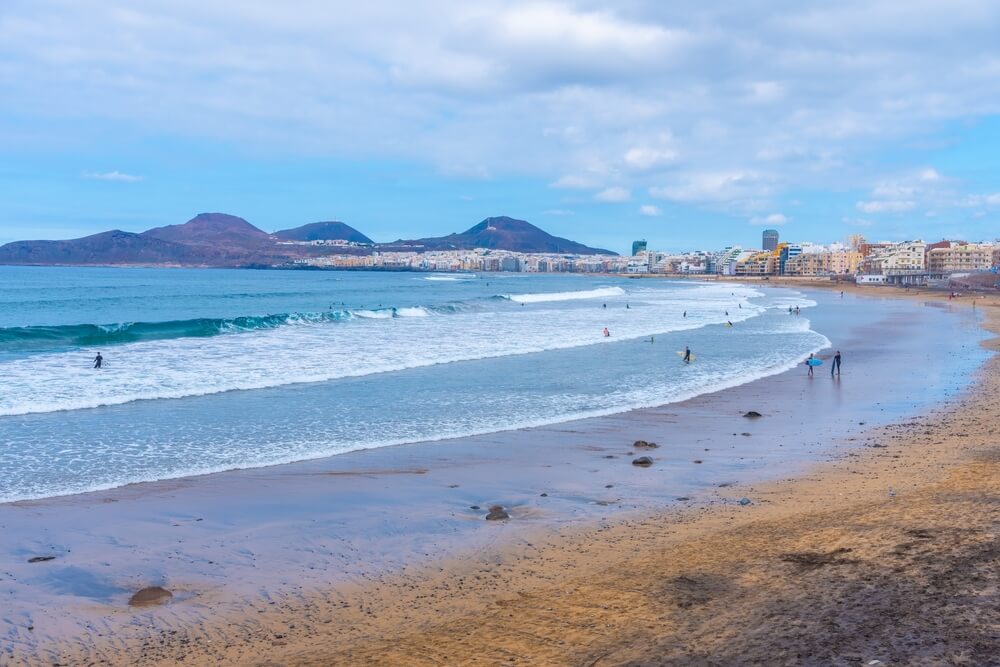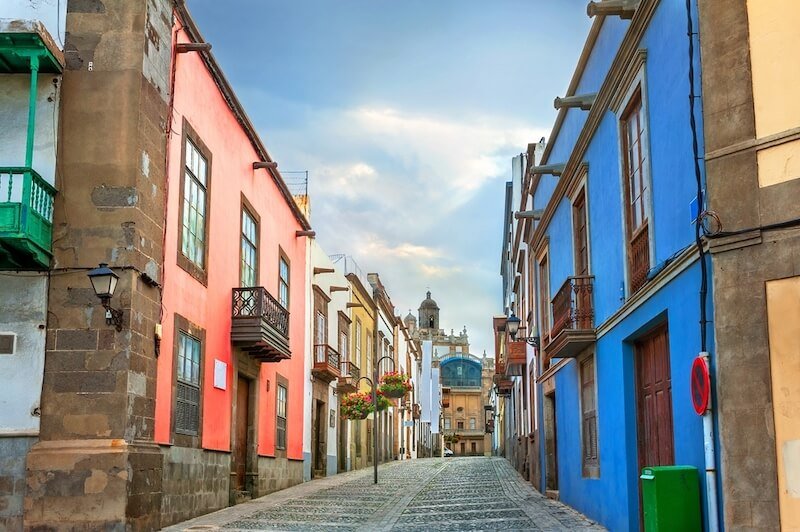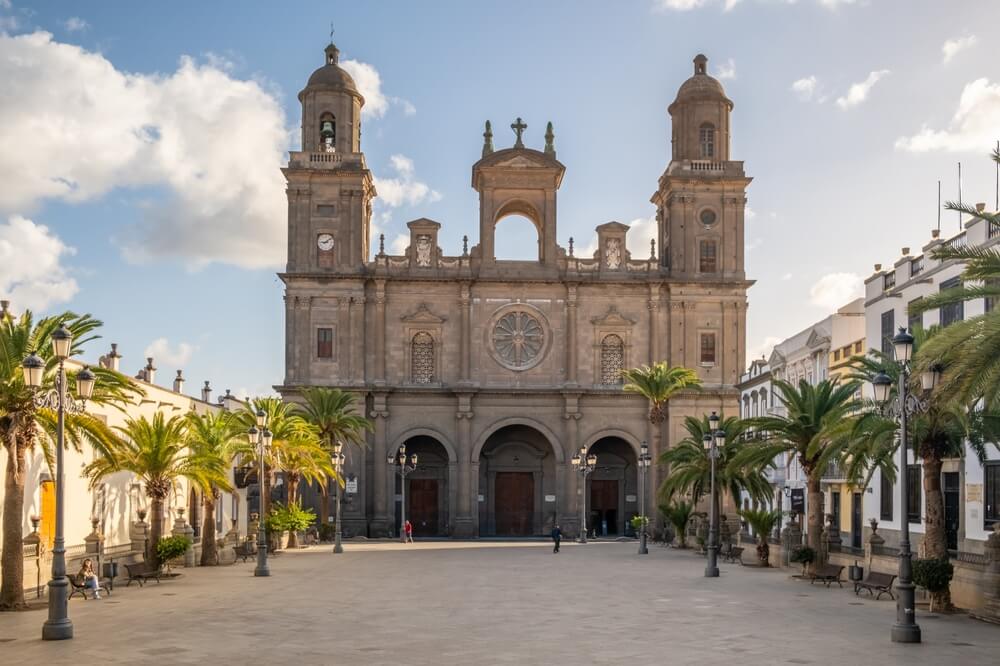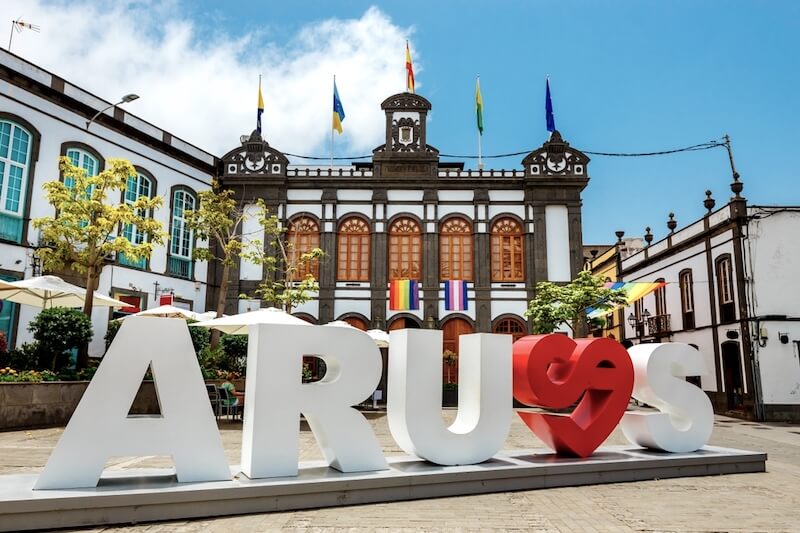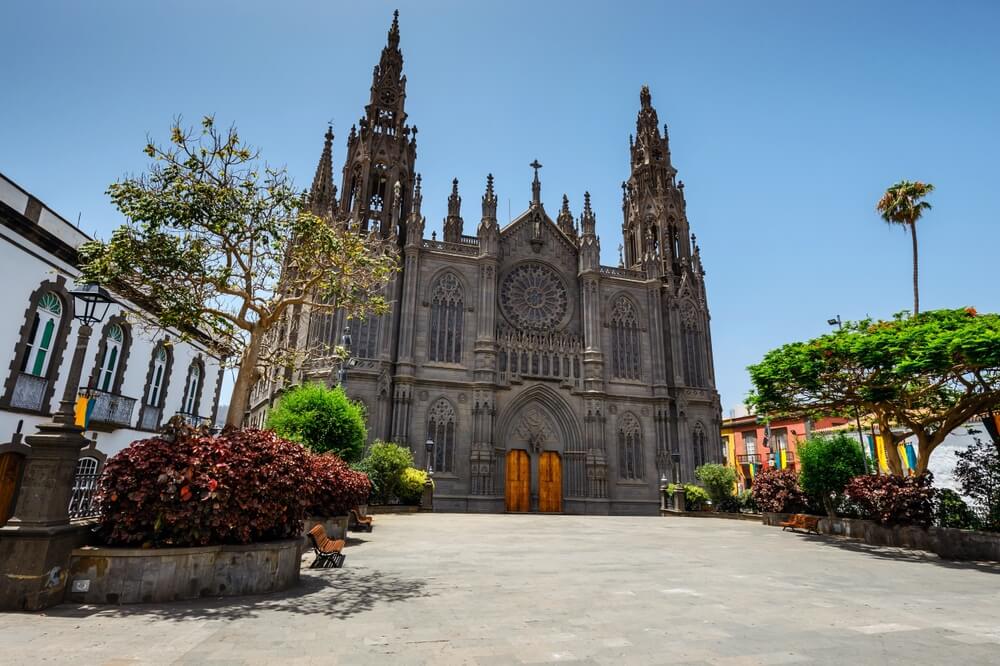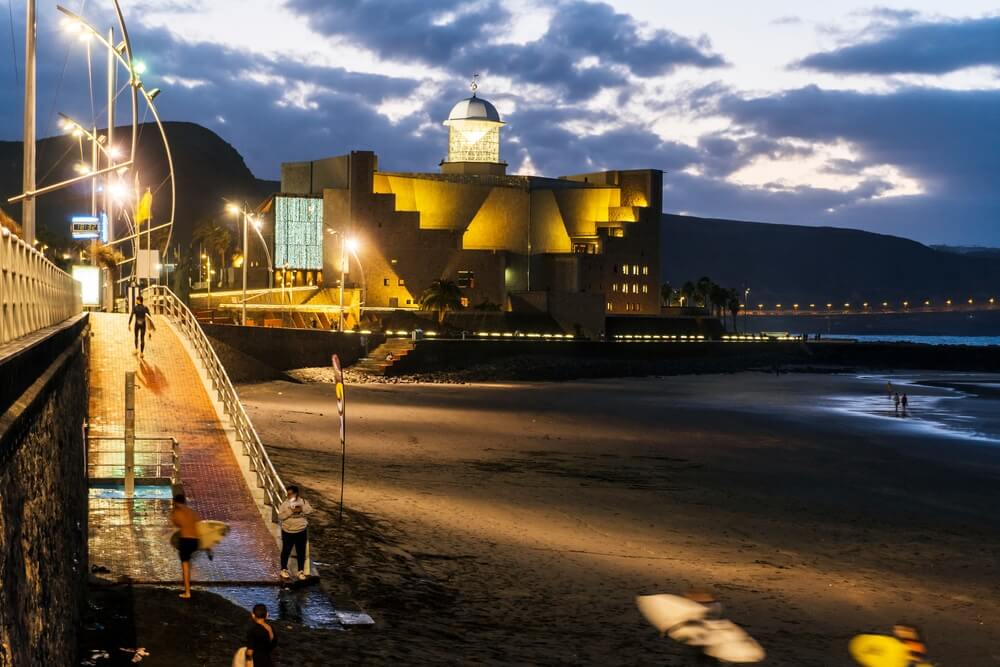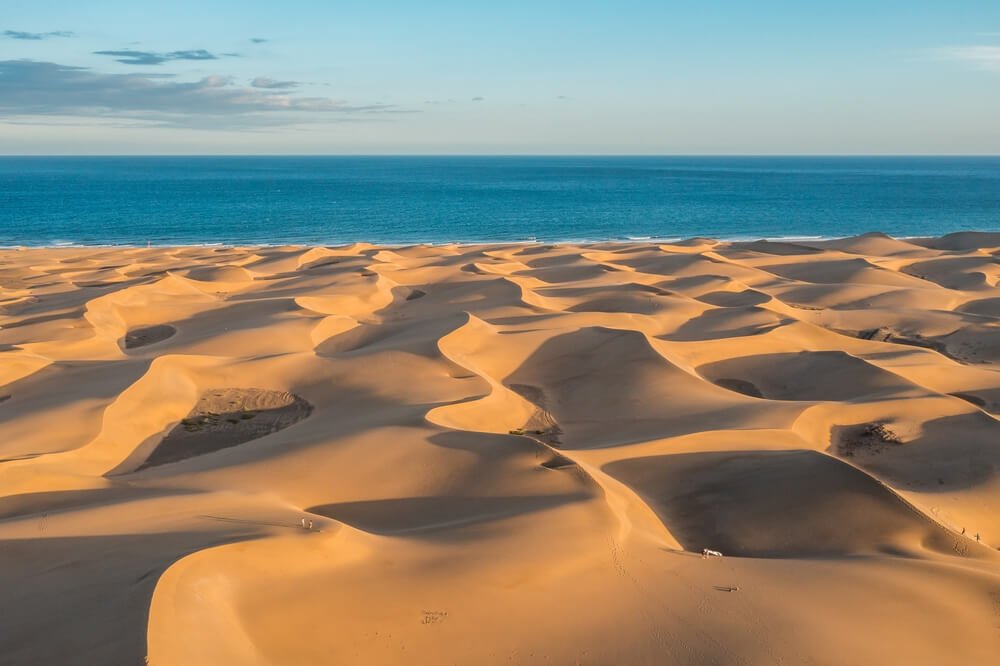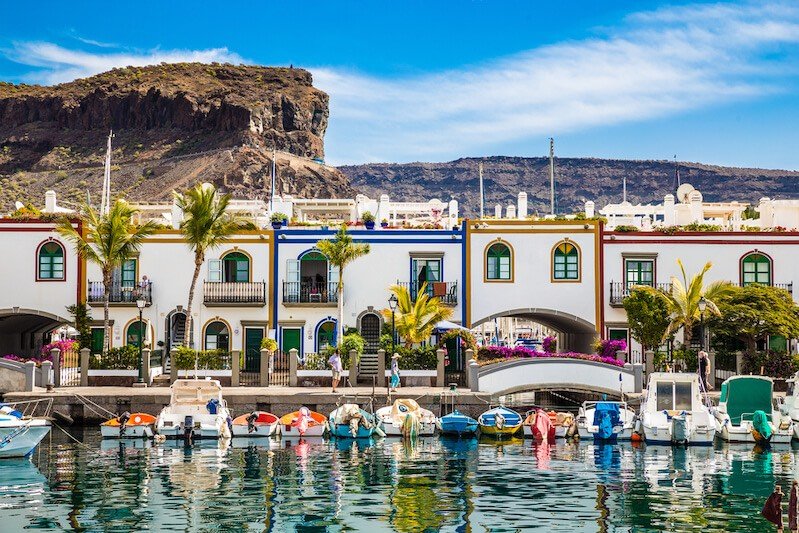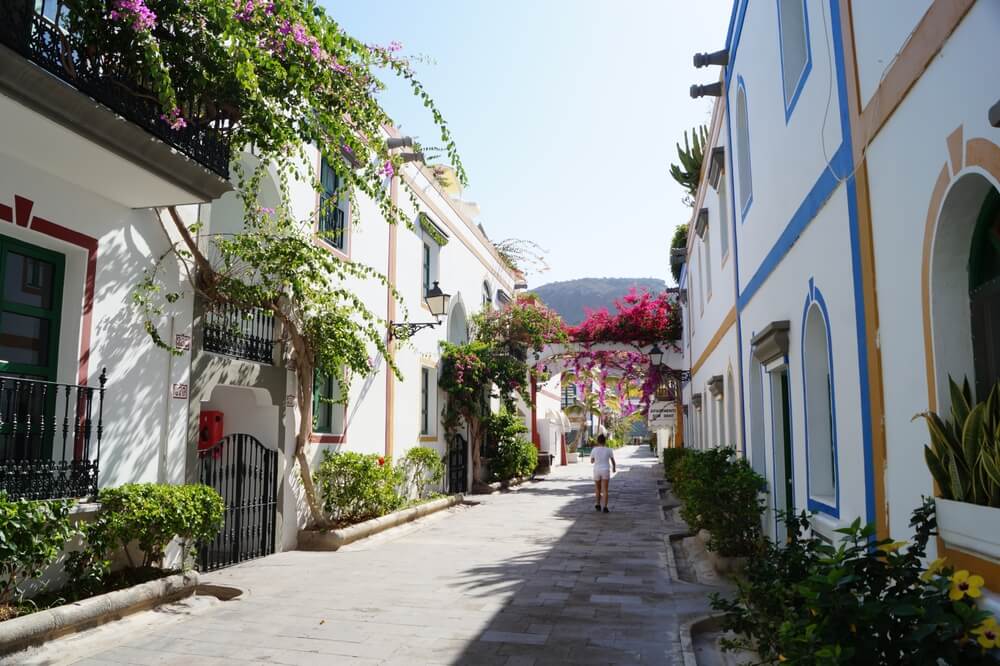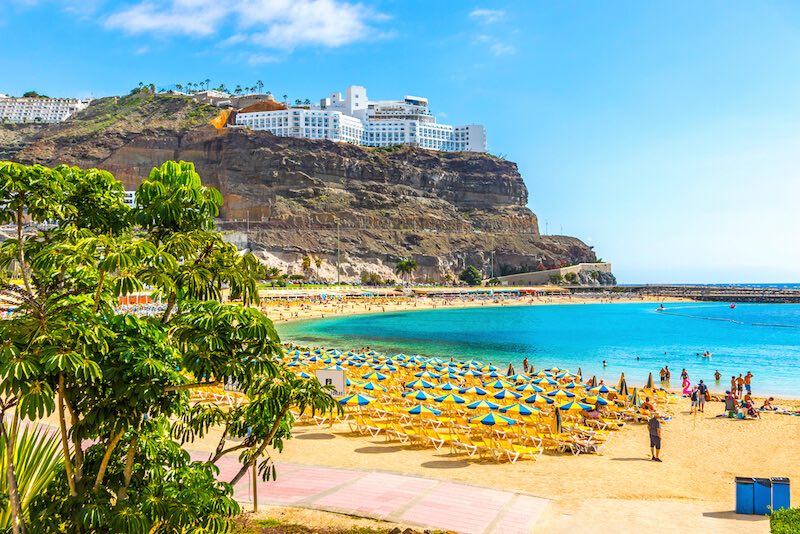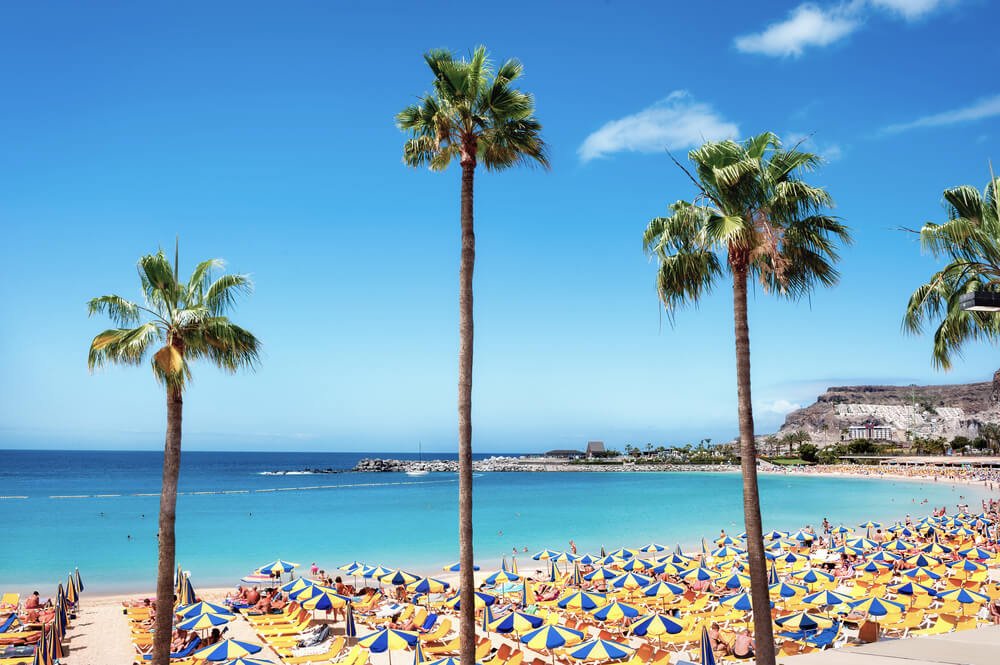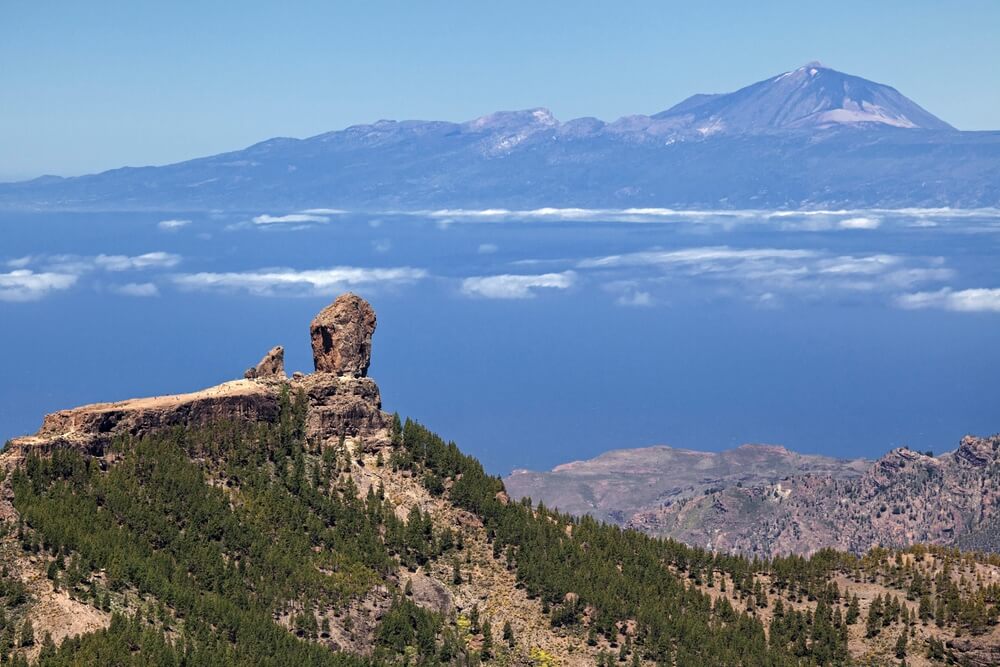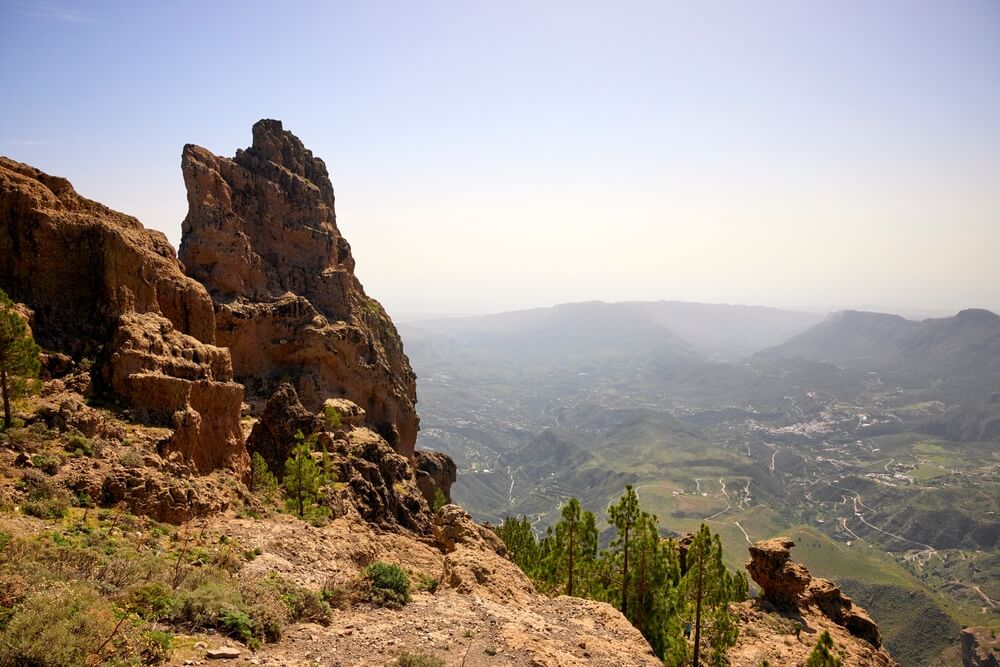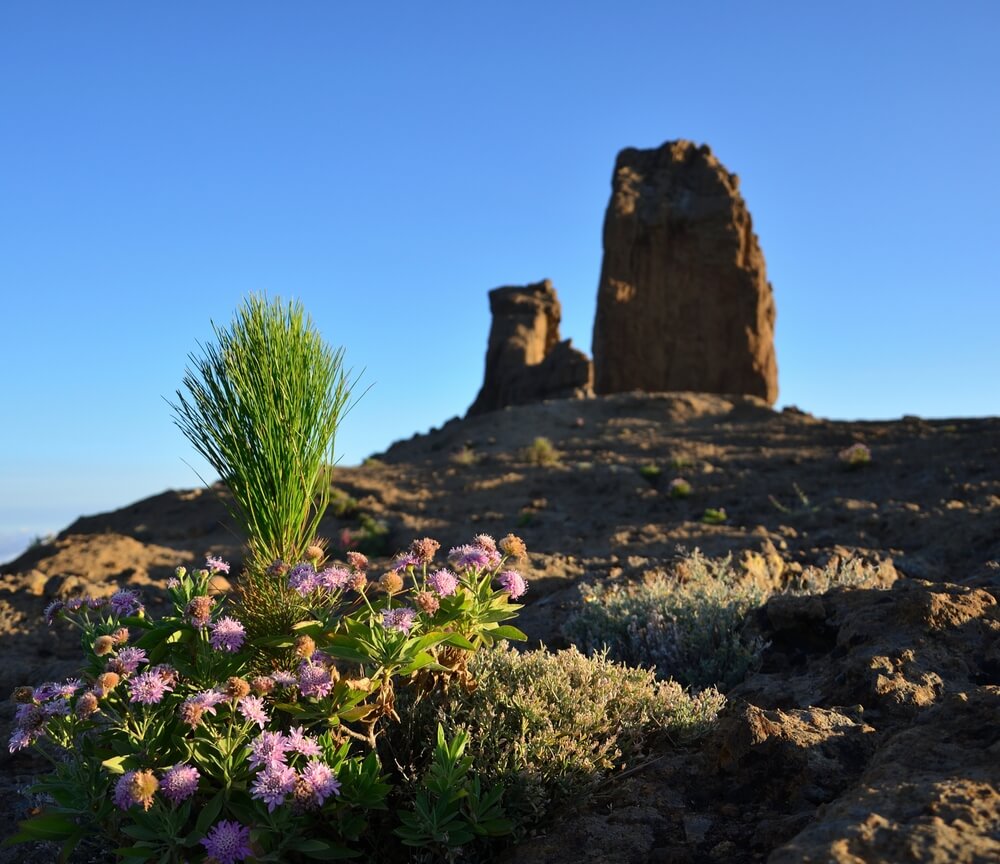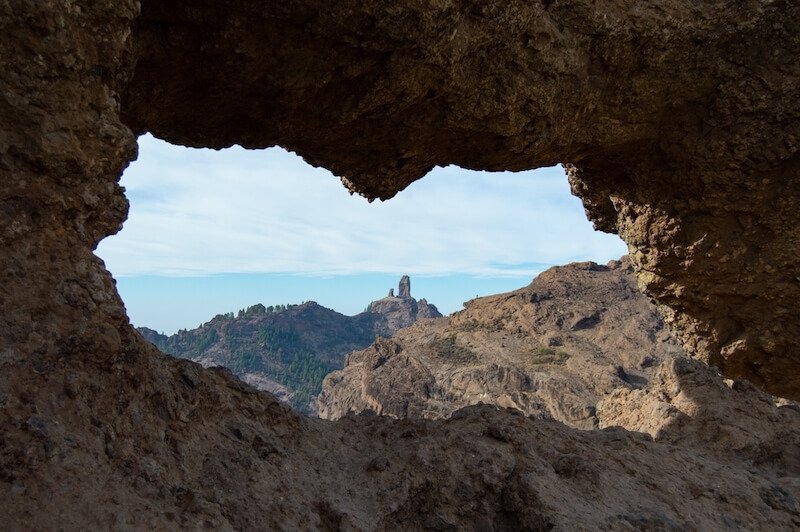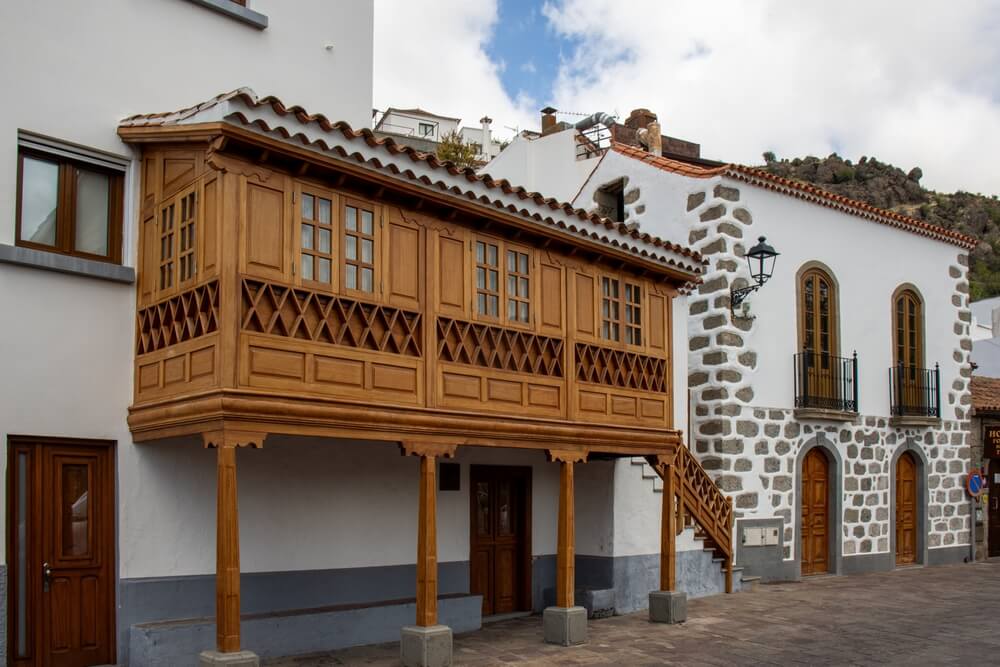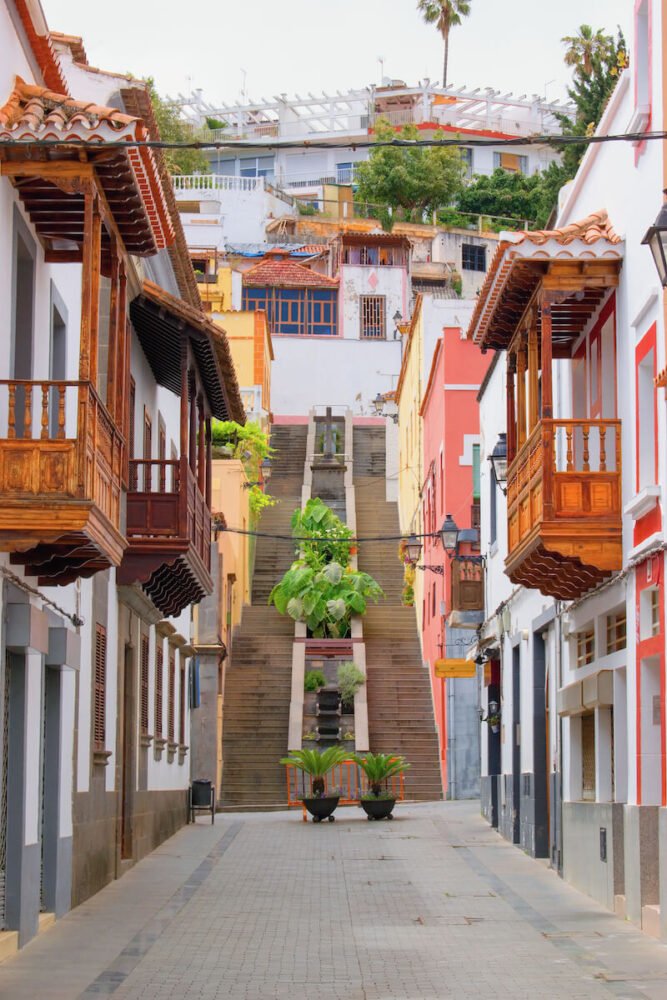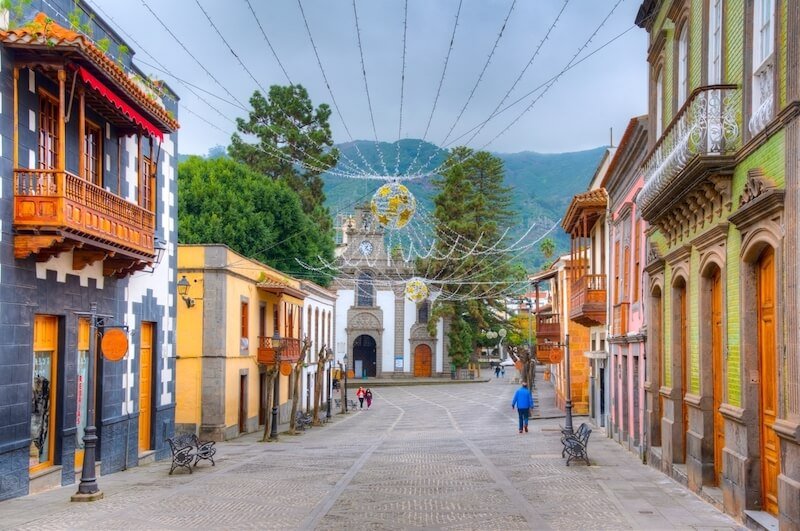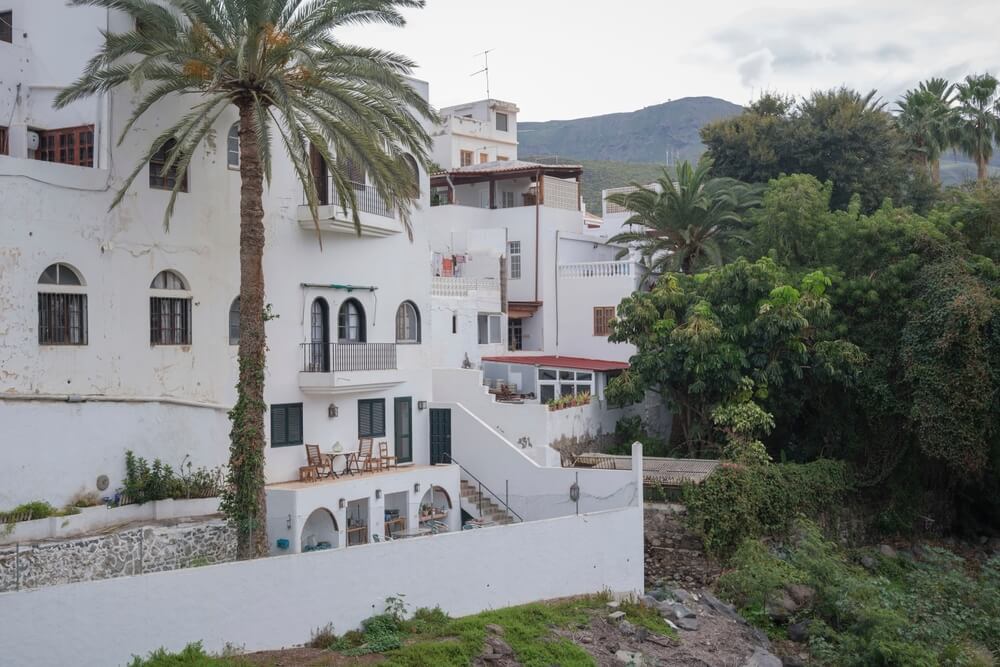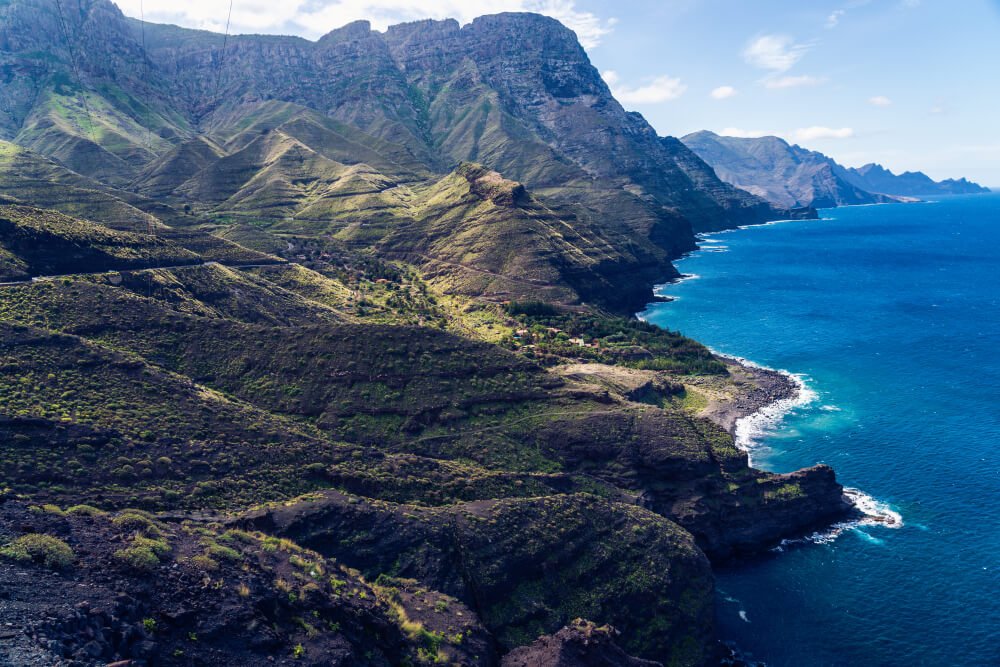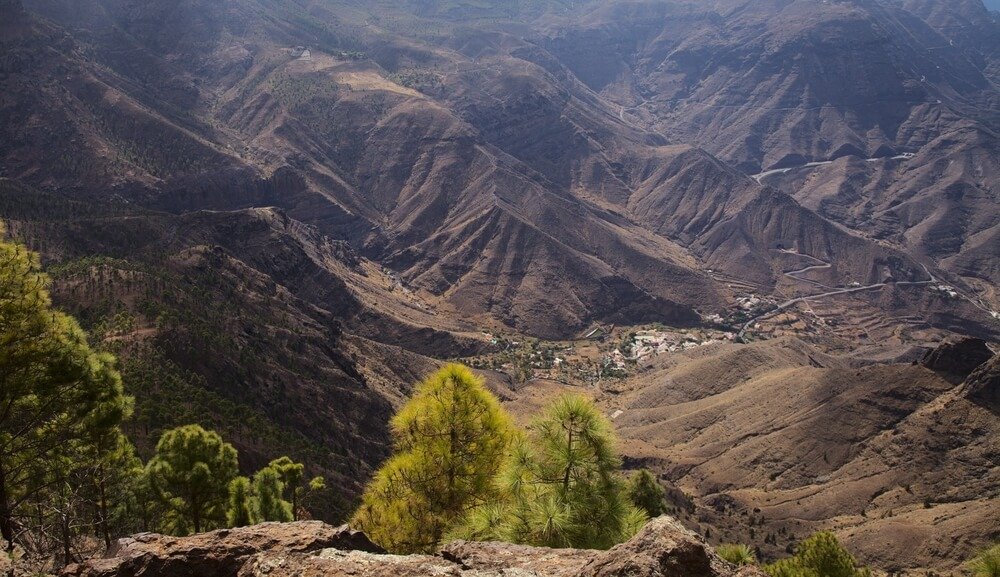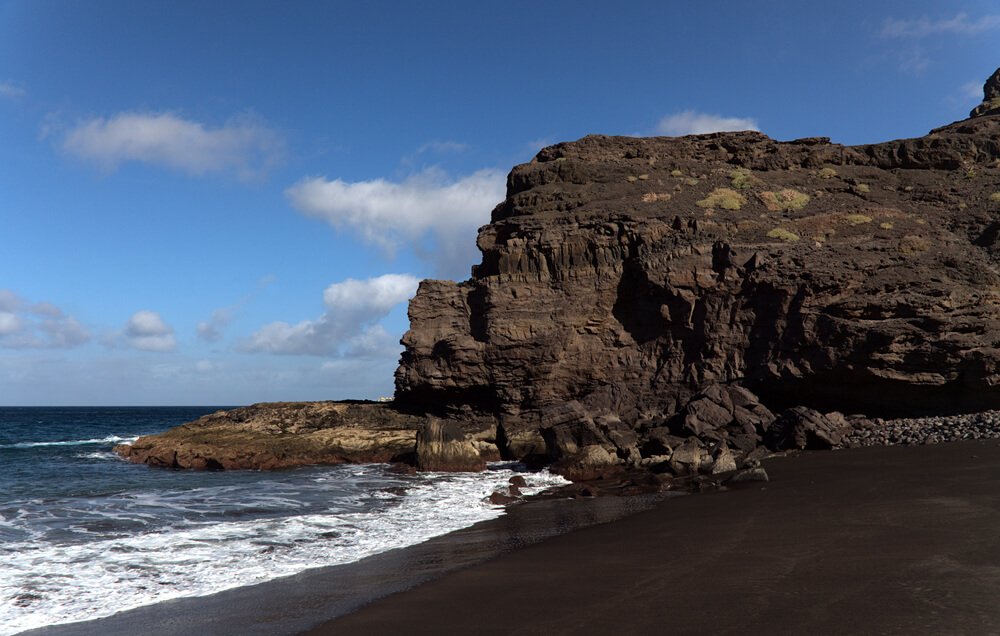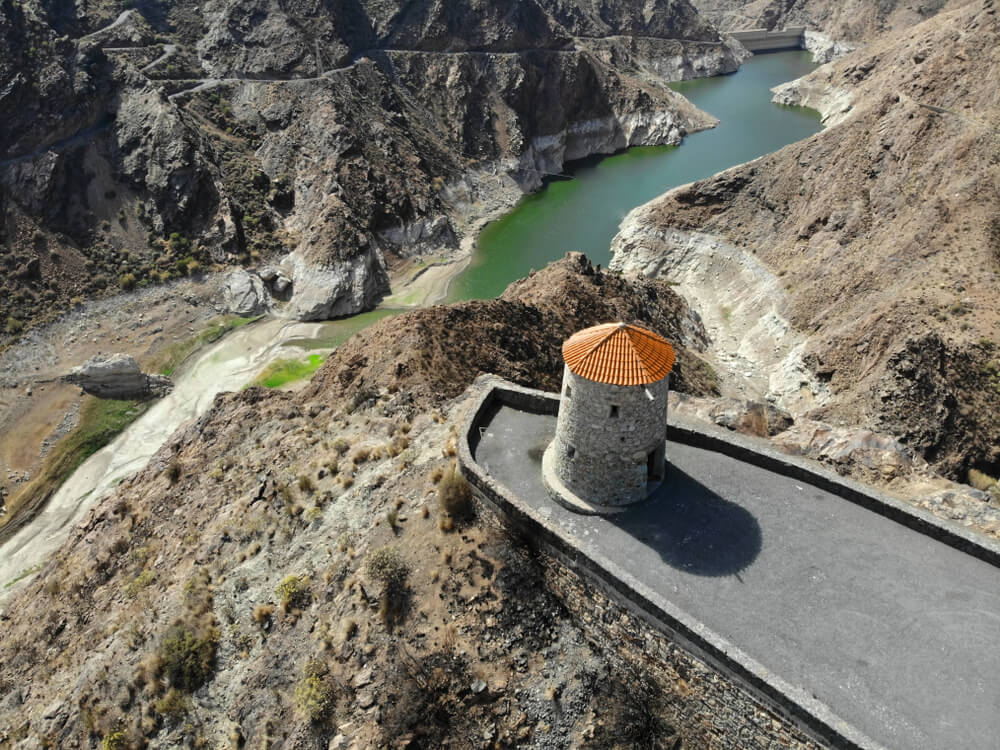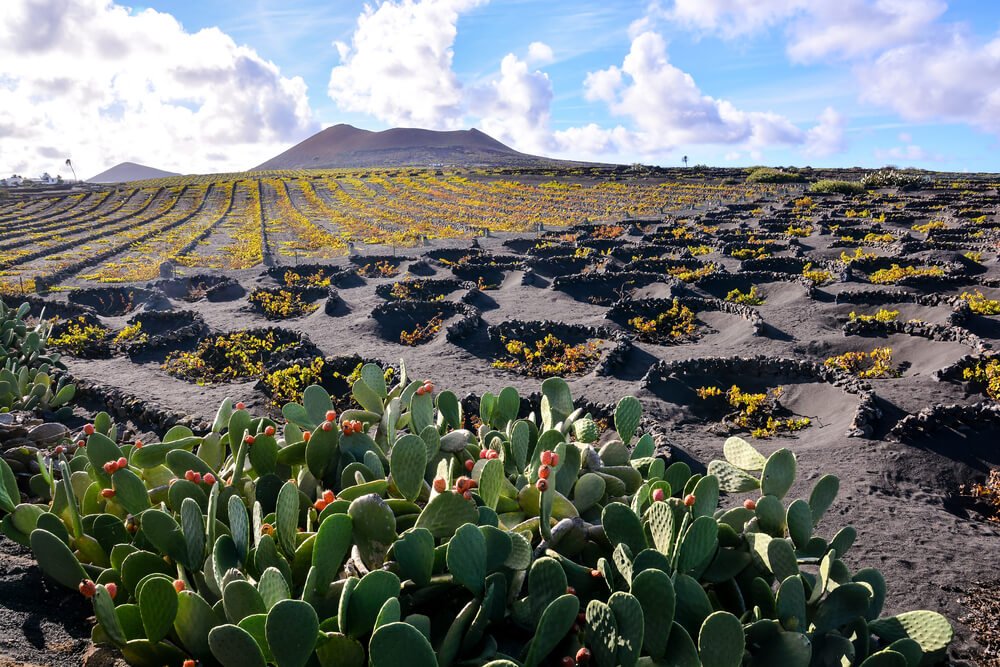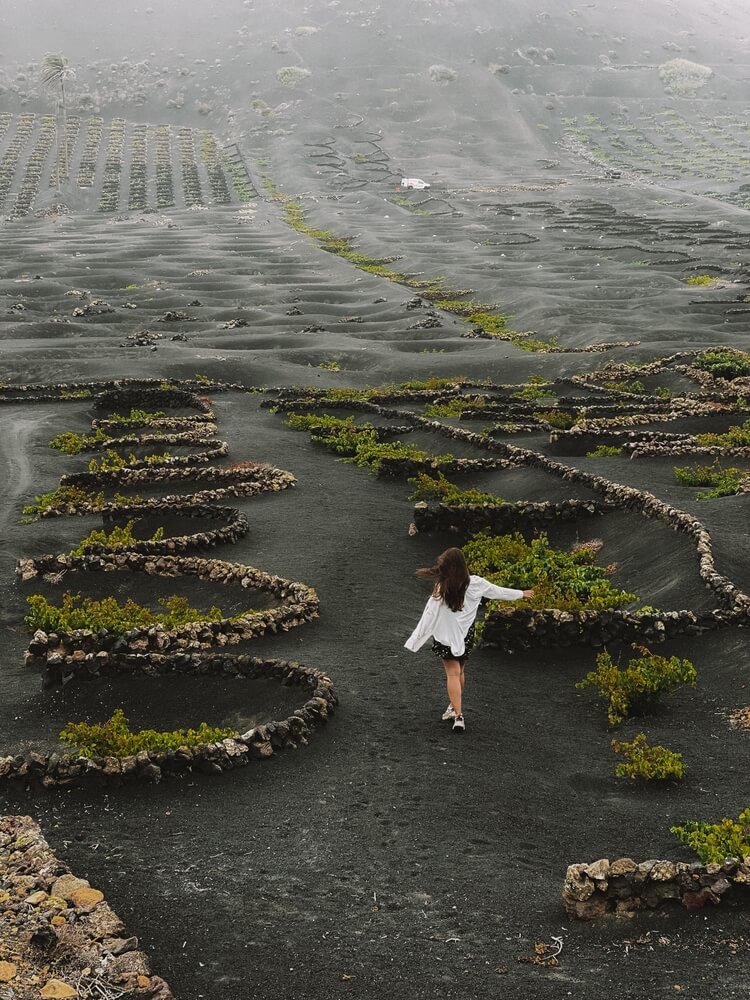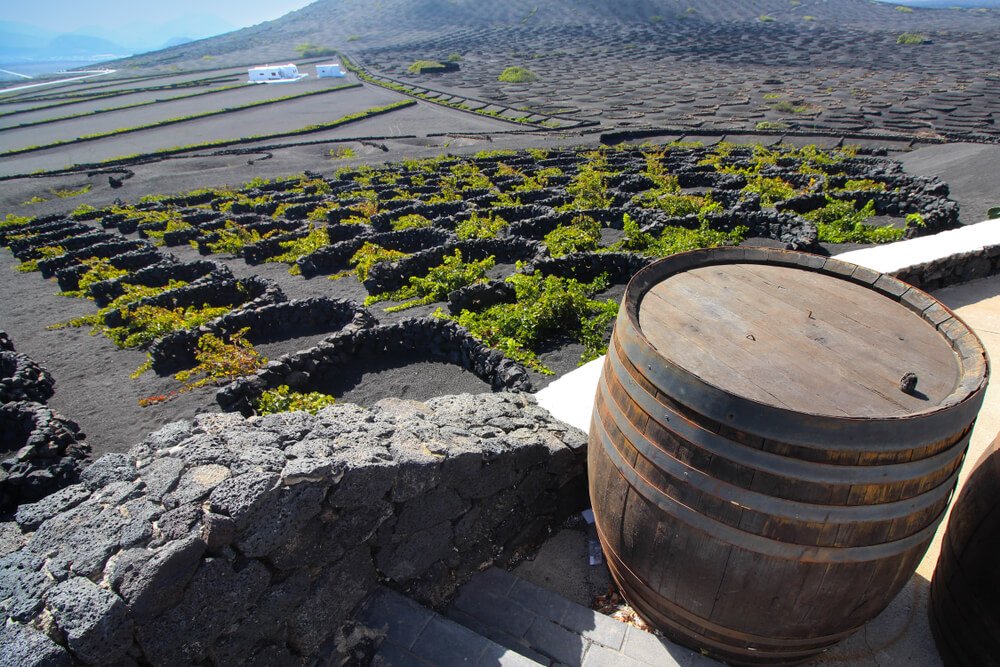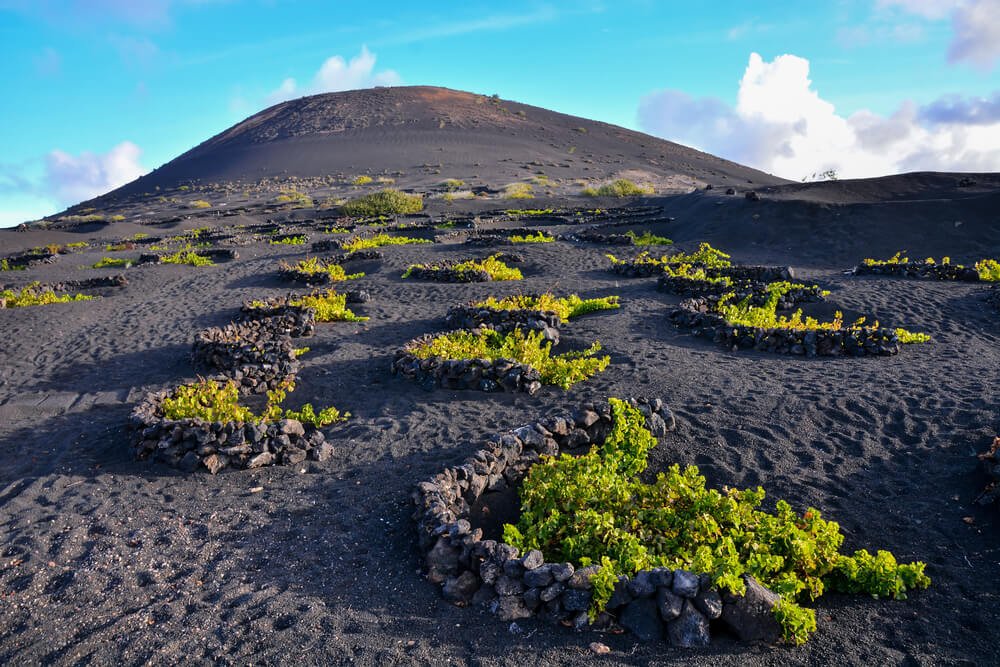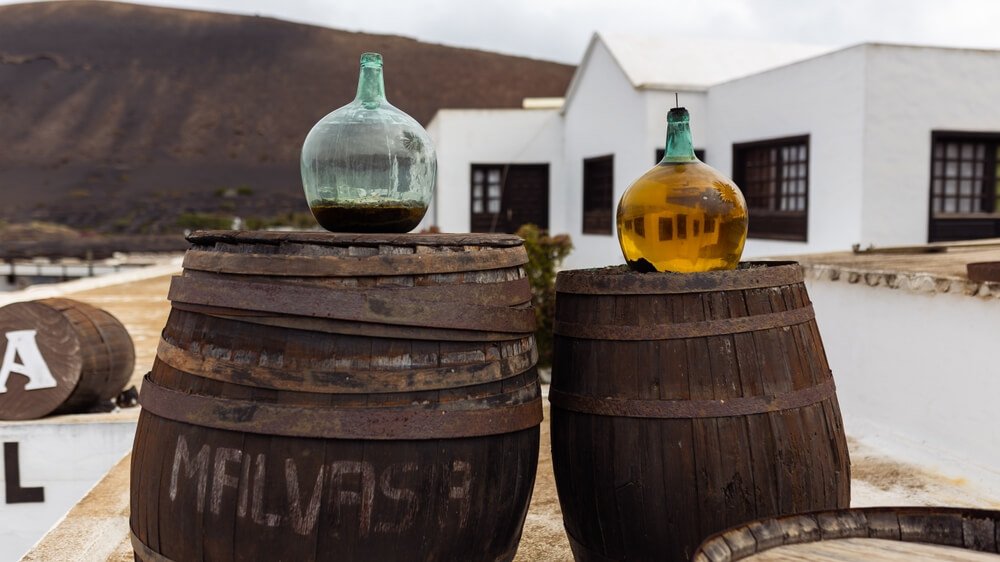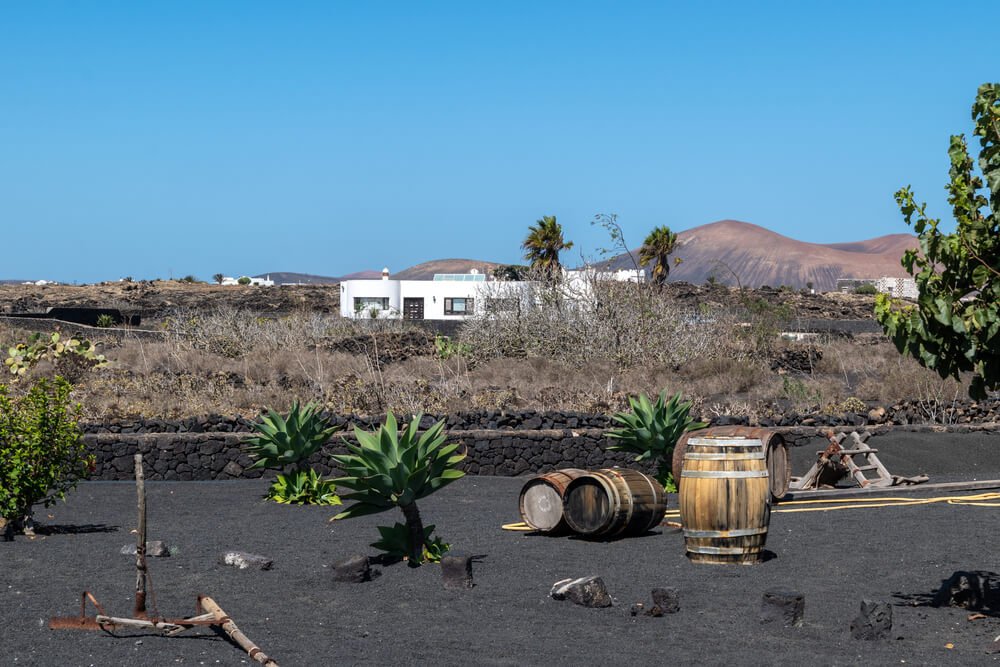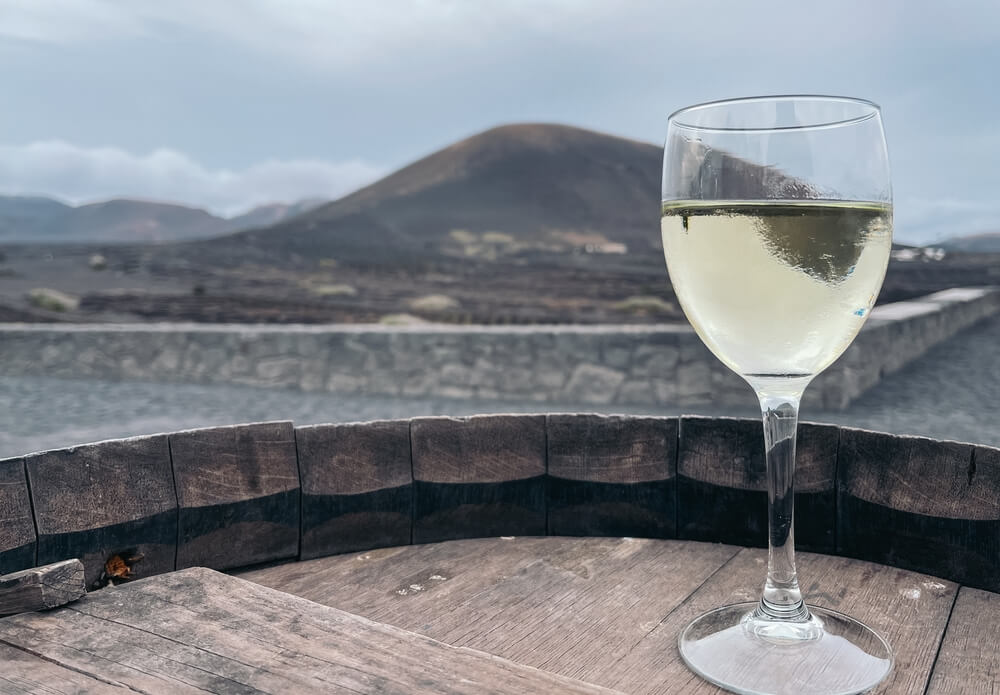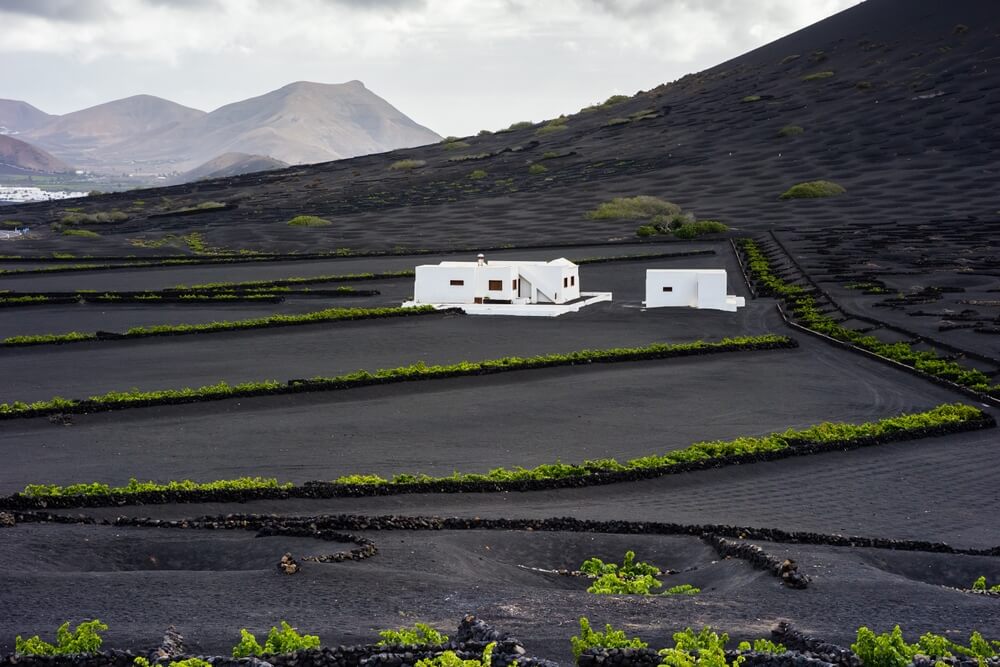What comes to mind when you think of the Canary Islands? I’m guessing laying out on the beach and staying in a nice resort.
It’s true that hiking may not be the first thing that comes up when you think of the Canary Islands, but I’m here to tell you that Lanzarote will change your mind!
This charming Canary Island, famous for its striking volcanic landscapes, offers many opportunities for hitting the trails and enjoying unspoiled nature and breathtaking views.
I spent over two incredible weeks in Lanzarote on one of my trips around the Canary Islands, and hiking through the arid and almost surreal volcanic landscapes was a truly unforgettable experience.
While Lanzarote has many other attractions, there’s no better way to explore it than by walking through beautiful trails around ancient calderas and lava fields — some of which house Lanzarote’s lovely vineyards.
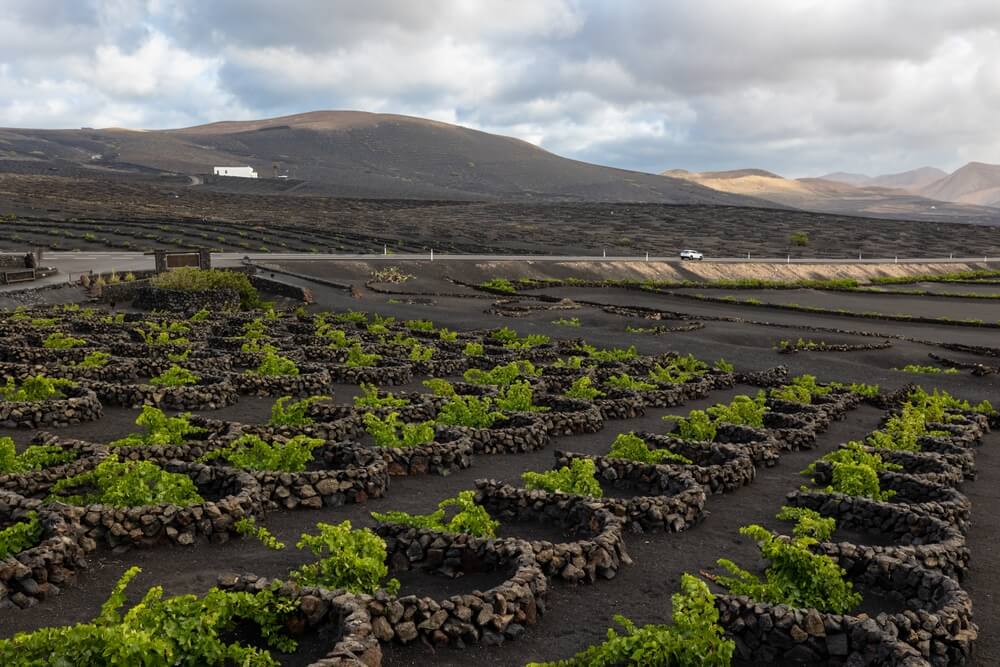
For the most part, you can hike around Lanzarote by yourself pretty easily. Most trails are well-marked and open year-round.
However, there are still a few areas on the island that aren’t as straightforward to hike through and require a bit of advance planning.
In this guide, I’ll share some of my favorite hiking trails that you can complete in just a few hours, along with some guided hikes for those areas that are a bit harder to reach by yourself.
So, without any further ado, pack your hiking boots, and let’s discover Lanzarote’s best hiking trails!
Should I Do a Guided or Independent Hike in Lanzarote?
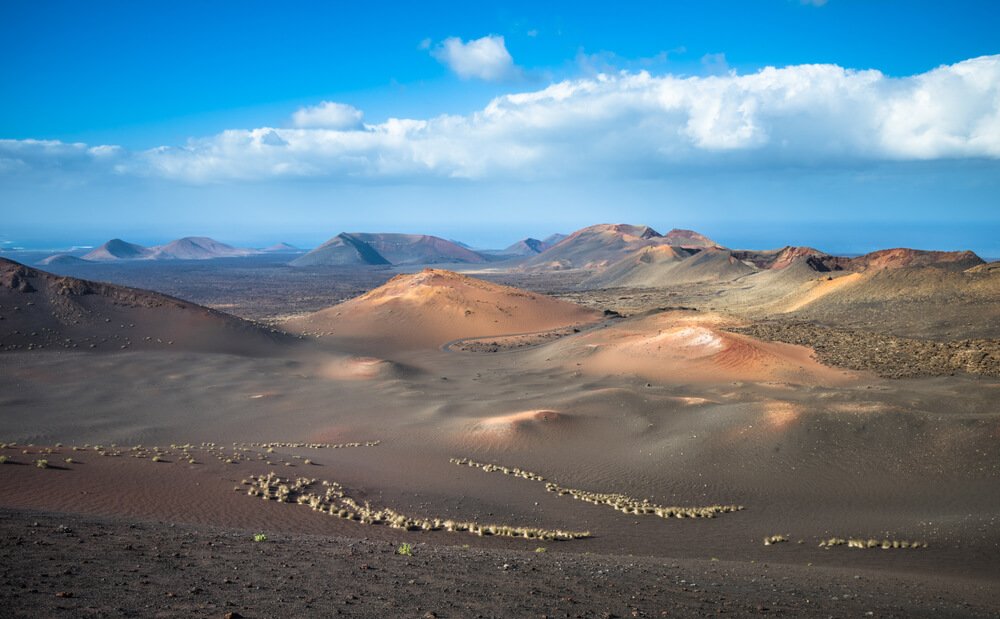
If you’re wondering whether you should do a guided or independent hike in Lanzarote, the short answer is that it depends.
Helpful, right? Let me get a little more specific.
When making your choice, consider whether or not you have a car, which area you want to hike in, and if you prefer to be alone or meet other people.
Lanzarote has many hiking trails, but the problem is that unlike hiking in Tenerife, not all are easy to reach with public transportation.
Although the island has many bus connections, a few remote areas have close to none, so you’ll end up walking several kilometers just to reach the trailhead.
The good news is if you plan on renting a car in Lanzarote, you can easily reach nearly any trail with just a short drive.
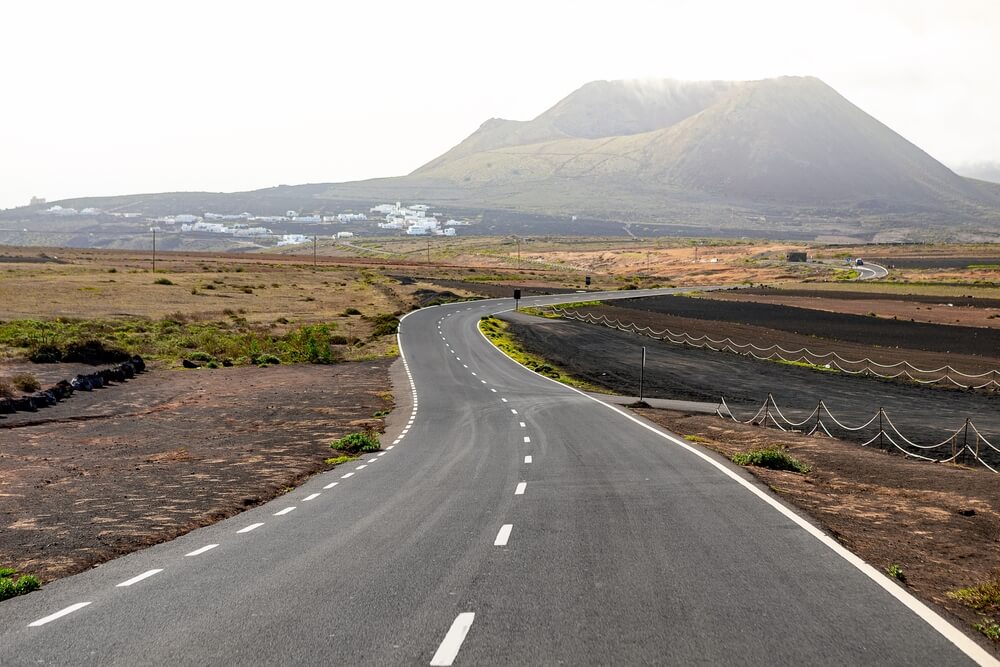
It only takes just over an hour to drive from one end of Lanzarote to the other (Playa Blanca to Órzola).
If you base yourself in Arrecife, which I recommend in my Lanzarote itinerary, you can drive nearly anywhere in half an hour or less!
Another factor to consider is whether independent hiking is allowed. For most trails, the answer is yes!
If you want to hike inside Timanfaya National Park, however, you can only do so with a guide, except for one trail that you’ll find among the independent options below.
Lastly, do you want to socialize and connect with other travelers? If you do, guided tours are your best option.
While there are a few popular hiking trails in Lanzarote, most of the time you won’t meet many people when hiking… especially outside peak summer months.
So that means if you’re looking for some time alone in nature, you can easily find it!
Best Guided Hikes in Lanzarote
Timanfaya National Park – Book Here
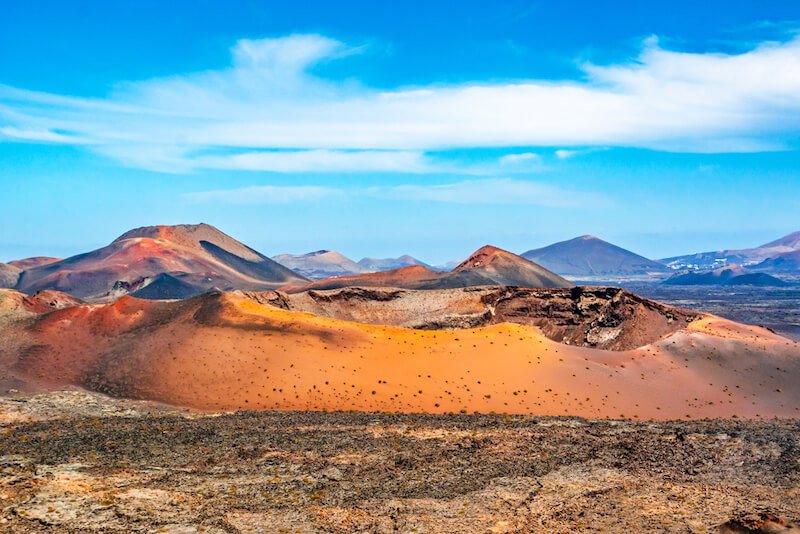
I’ll be honest, hiking in Timanfaya National Park isn’t exactly straightforward (which is part of why it’s on the list of guided Lanzarote hikes), but it’s certainly worth the effort.
The park is a UNESCO Biosphere Reserve, only accessible under specific conditions, so you can’t just drive there and hit the trails. This is why joining a guided tour is your best option.
This Timanfaya trekking tour lasts roughly three hours and allows you to admire the impressive volcanic landscape in a straightforward fashion.
An expert guide will share cool facts about the region and the history of Lanzarote as you walk up to some of the craters.
The hike is moderately difficult, and only around 7 kilometers long, but you should bring proper shoes for the uneven terrain.
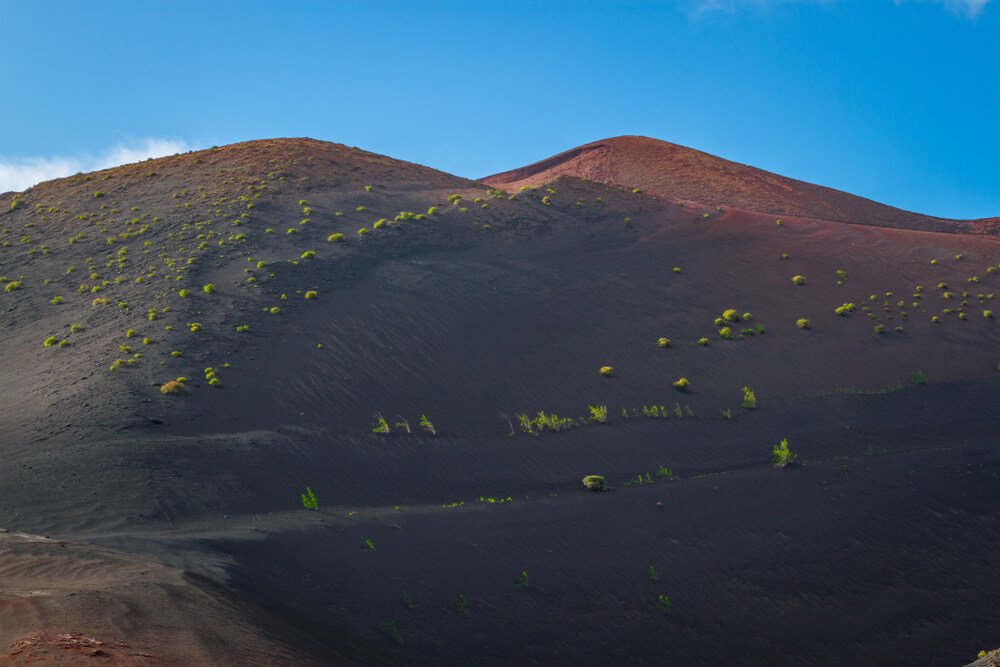
The Timanfaya hiking tour includes the guide and transportation from the meeting point outside Mancha Blanca, but you can also request hotel pick-up and drop-off.
If you choose to skip the hotel pick-up, you can also reach the meeting point by car or take bus 16 from Arrecife to Mancha Blanca.
The meeting point is roughly a 15-minute walk from there.
Note that this activity is popular year-round, since it’s the only way to properly visit Timanfaya volcano, so book in advance no matter when you go!
La Geria Vineyard Hike – Book Here
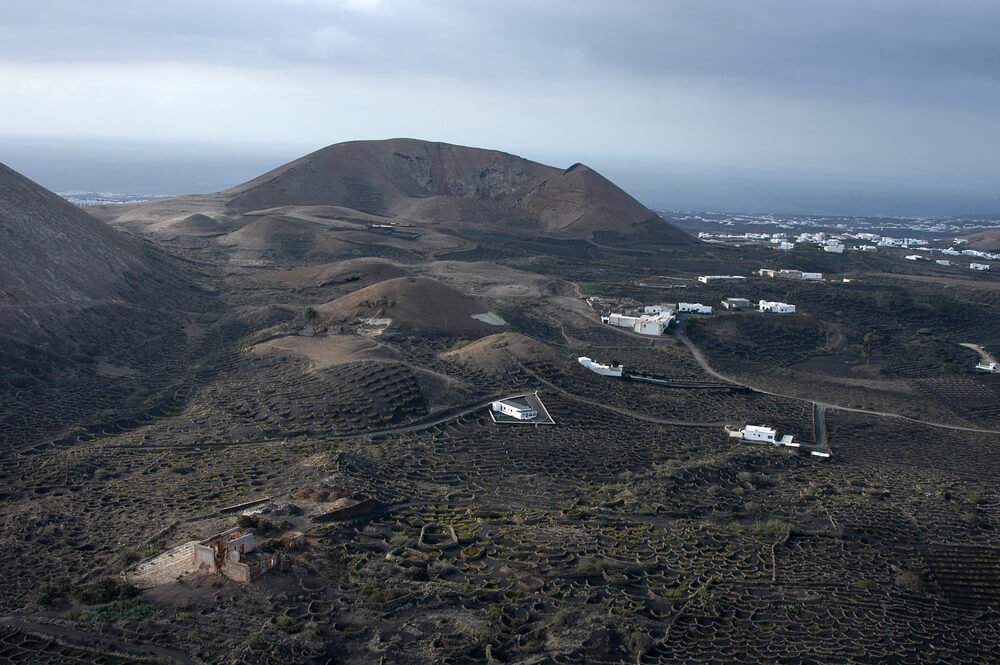
Unless you rent a car, hiking the unique landscapes of La Geria can be a bit complicated.
The good news, though, is this La Geria hiking and vineyard tour is a perfect choice if you don’t have a car.
Plus, this activity wouldn’t be complete without the wine tasting, and driving there would complicate things.
La Geria is a unique wine district just outside Los Volcanes Natural Park with distinctive vineyards growing right in the volcanic soil.
The vine is planted inside a conical hollow (called a geria, hence the name of the region) excavated in volcanic gravel and protected from the wind by a small wall made of rocks.
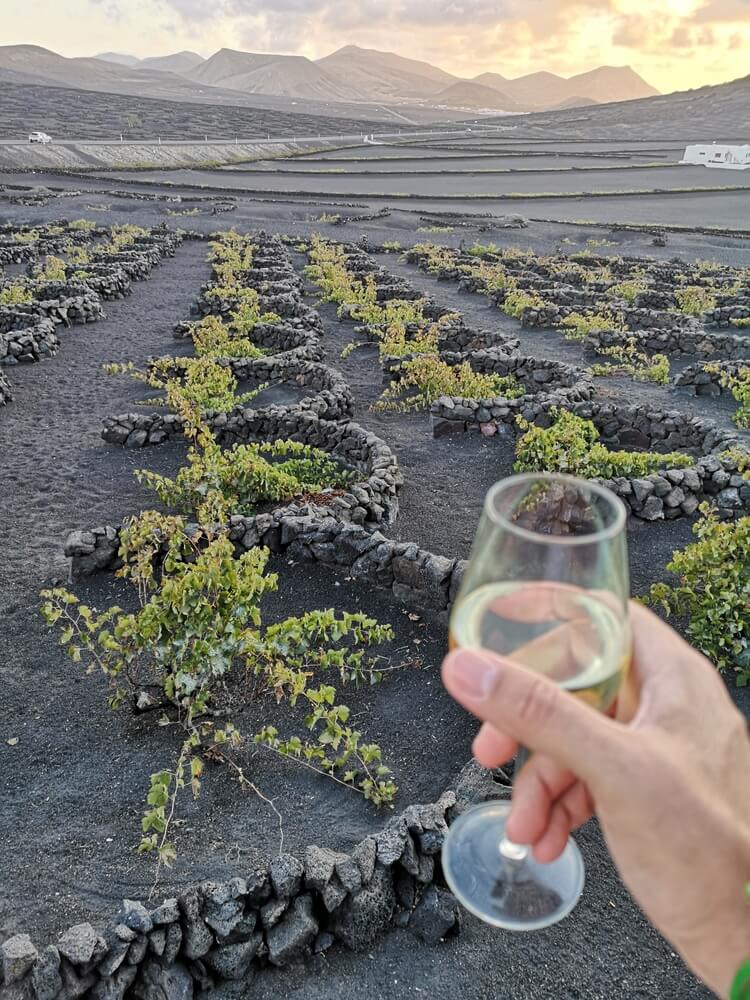
The 4-hour wine and hiking tour includes a 9-kilometer walk through the spectacular landscape to learn how locals have overcome agricultural challenges through inventiveness.
Needless to say, the wine produced in the area is delicious, and you’ll get to sample the incredible local Malvasia white wine.
The activity includes hotel pick-up and drop-off from many places in Lanzarote, as well as a licensed tour guide, wine tasting, and snacks.
Tip: Note that pick-up from Playa Blanca is not available.
Northern Lanzarote Hiking Tour – Book Here
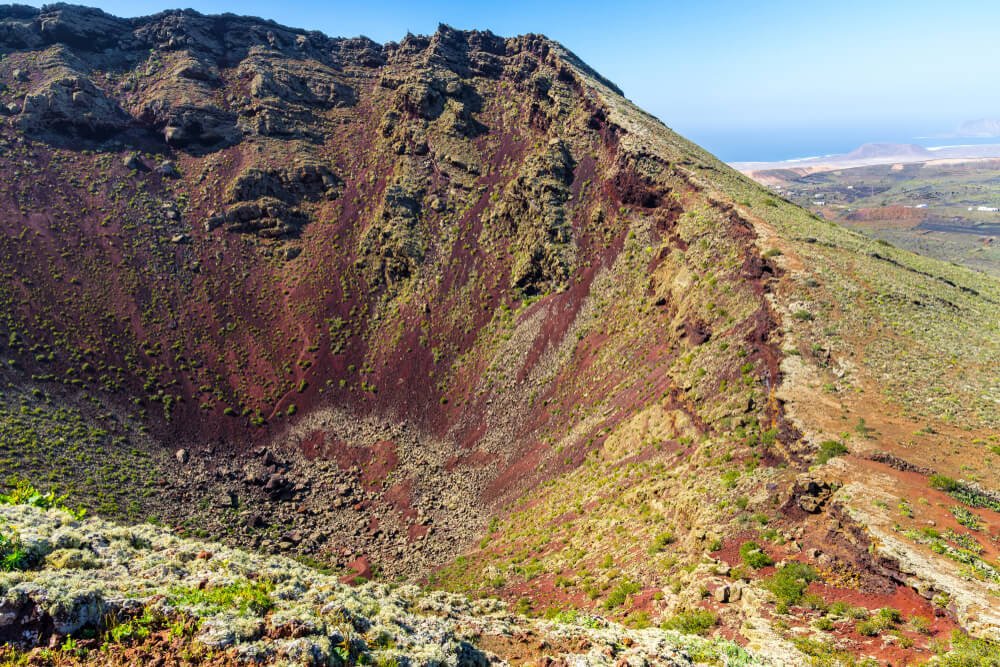
This three-hour hike in the north of Lanzarote features both a spectacular volcanic landscape and sweeping coastal views.
This Northern Lanzarote hiking tour is a great experience if you’re looking to hike in a more remote area of Lanzarote that is harder to reach with public transportation.
The activity includes a hike up La Corona Volcano to see the impressive volcanic crater and another to the cliffs of Famara, where you can admire sweeping views of the northern coast of Lanzarote and La Graciosa Island.
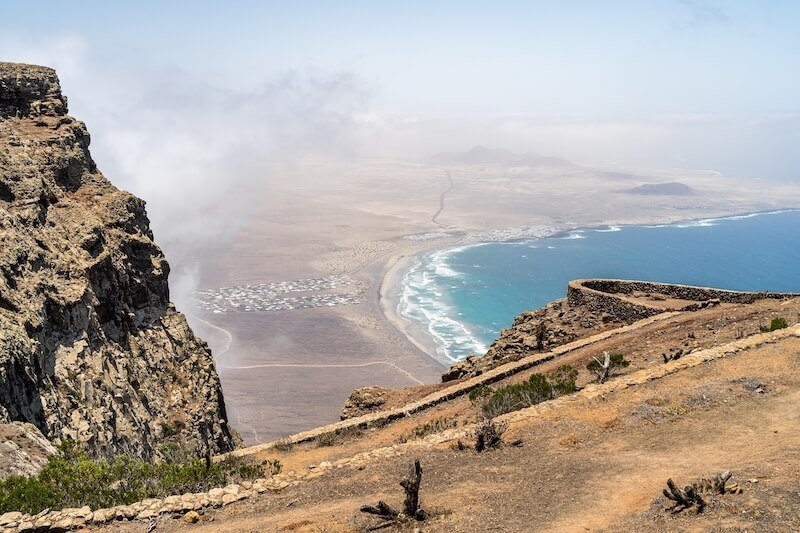
Despite the short distance between these two spots, it’s hard to fit both of these hikes into one day if you don’t have a car.
That means that a guided hike is the ideal way to experience these two incredible landscapes in just a few hours.
This Lanzarote hiking tour includes a guide and transportation between the two spots, with the option to request hotel pick-up from certain locations throughout Lanzarote.
The hikes are of moderate difficulty, so be sure to wear comfortable shoes and clothes.
Best Independent Day Hikes in Lanzarote
Now that we’ve talked about some of the guided tours, it’s time to look at independent hikes for you adventurous types!
Below are my favorite hikes in Lanzarote.
One thing to keep in mind is that the landscape is pretty consistent throughout the island, except for a few areas.
While each trail has something unique, you’ll experience similar volcanic landscapes on many of these hikes.
For some people, walking through lava fields for hours gets boring quickly.
If you want a little more variety, I recommend choosing shorter trails in different locations on the island.
You’ll find the highlights for each hike in the descriptions below!
Mancha Blanca – Caldera Blanca
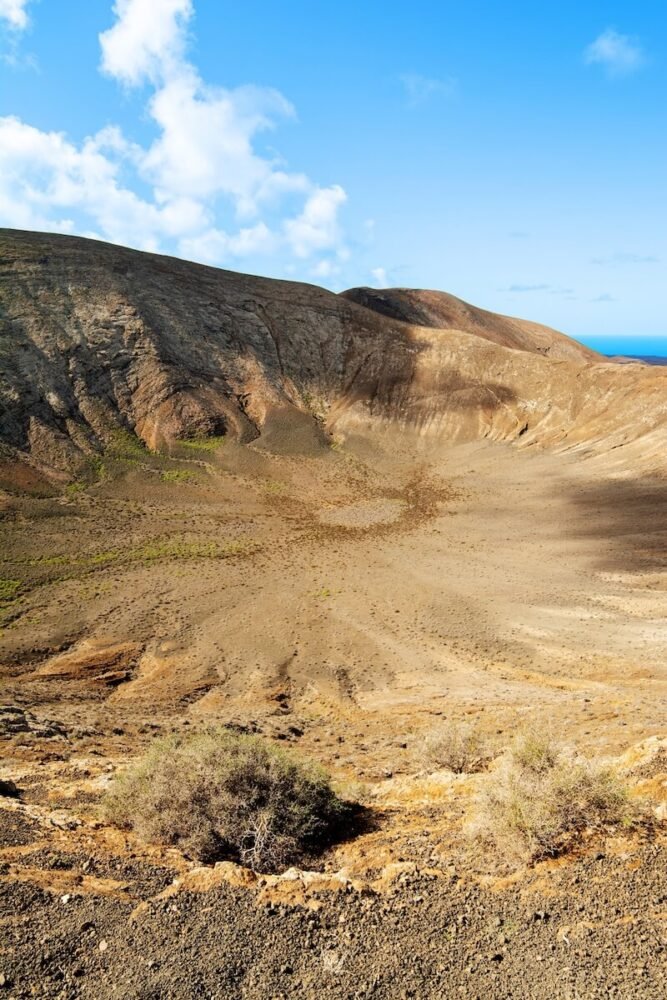
- Difficulty: Moderate
- Distance: 9.3 km (5.8 miles)
- Time to Complete: 3-4 hours
- Type: Loop
This is among the most popular hiking trails in Lanzarote, rewarding visitors with spectacular views of the massive Caldera Blanca.
The trail starts just outside the small village of Mancha Blanca, which is connected by bus 16 to Arrecife.
The trail has some complex parts with uneven and slippery terrain, but the biggest challenge is the lack of shade — especially in hot weather!
Be sure to wear sunscreen and bring sufficient water for this unshaded hike.
Ideally, you’ll want to do this hike in the early morning or late afternoon to avoid the hottest parts of the day, but remember it can take up to four hours.
The recommended loop is counterclockwise around the caldera.
You should also note that it can get very windy at the top, so pack a windbreaker jacket (yes, even despite the heat and lack of shade!).
Pico Redondo – Monumento Natural de los Ajaches
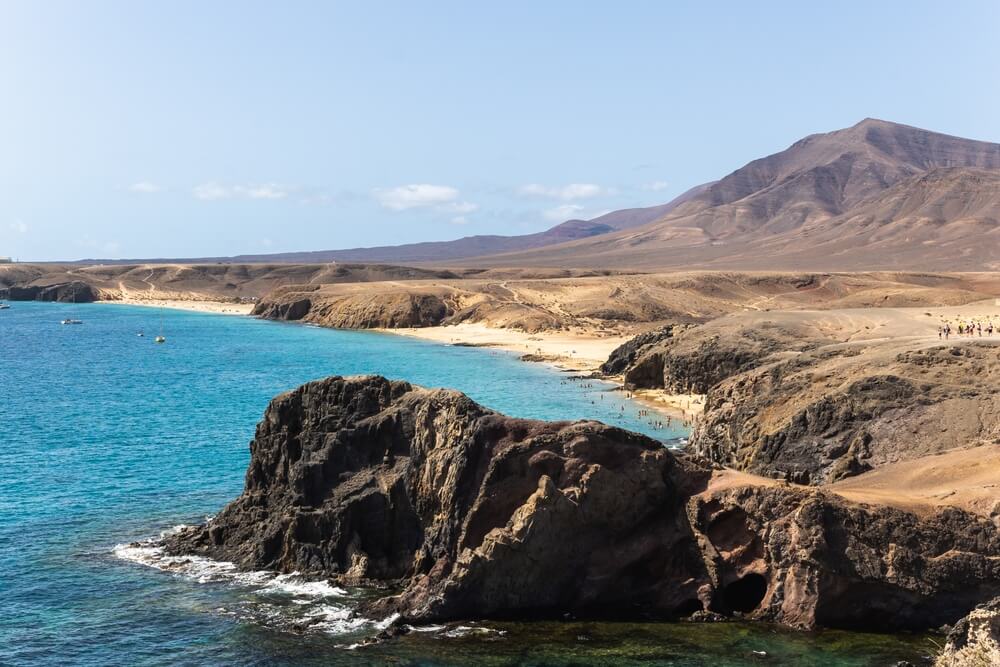
- Difficulty: Moderate
- Distance: 13.7 km (8.5 miles)
- Time to Complete: 4-5 hours
- Type: Loop
Los Ajaches Natural Monument is a volcanic area covering a large part of south Lanzarote.
This loop trail is one of the best ways to experience the incredible volcanic landscape of the island.
The hike starts in Femés, a small village close to Yaiza. If you don’t have a car, you can reach Femés by bus line 5 from Arrecife.
The trail starts just outside the village, and the hike isn’t too challenging, except for the part along the coast.
The trail even passes by a couple of beaches, so you can bring your swimsuit!
Along the way, you’ll see Playa La Casa, best known for its little Secret Garden with all kinds of plants and objects.
Playa Blanca – Punta de Papagayo
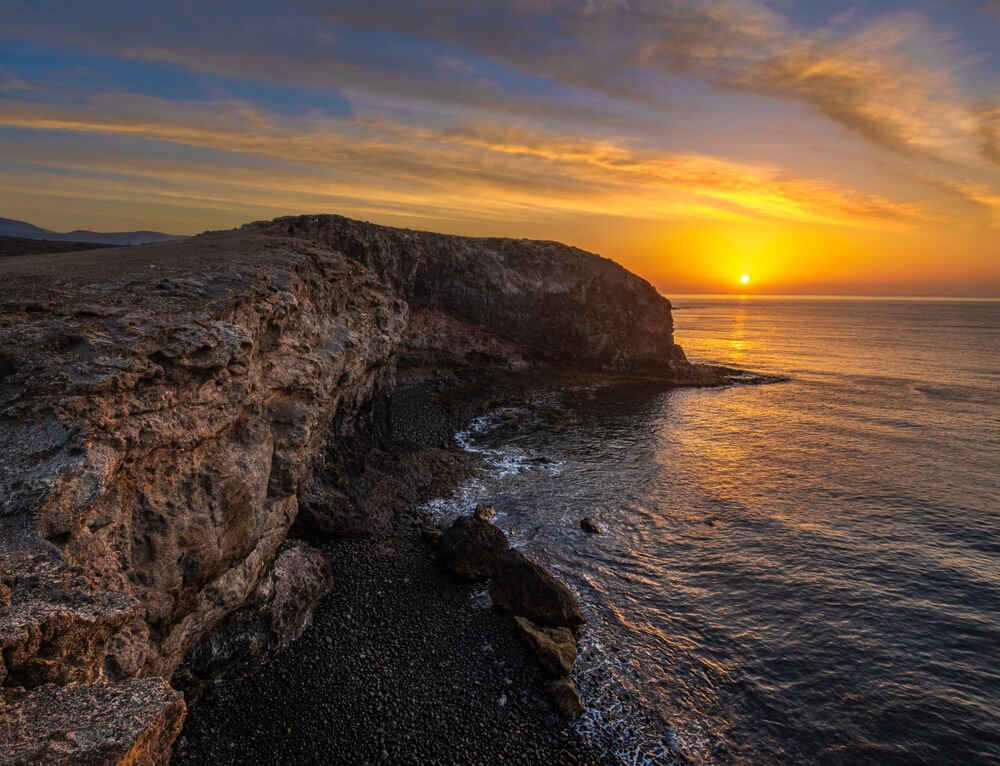
- Difficulty: Moderate
- Distance: 16.4 km (10.2 miles)
- Time to Complete: 4-5 hours
- Type: Loop
While this hike is (in my opinion) pretty easy, and it may not be the most spectacular, the endpoint is my favorite place on the island.
Punta de Papagayo is a promontory in south Lanzarote and the perfect spot to see the sunset.
If you have the chance, I recommend doing this hike in the late afternoon to get there in time for sunset.
The first part is more of a leisurely walk than a hike since it’s in the town of Playa Blanca.
Once you’ve passed the tourist area, the seaside promenade is actually quite pleasant!
You’ll be passing by a few lovely beaches, like Playa Mujeres, Playa del Pozo, and Playa Papagayo, so pack a swimsuit and take a break to enjoy the sun or cool off with a swim.
Although this is marked as a loop trail, the loop only takes you around the sea cliff.
If the entire hike seems too long, you can always catch bus line 30, which stops at Las Coloradas, at the eastern end of Playa Blanca, to shorten it.
Las Rositas – Playa del Risco
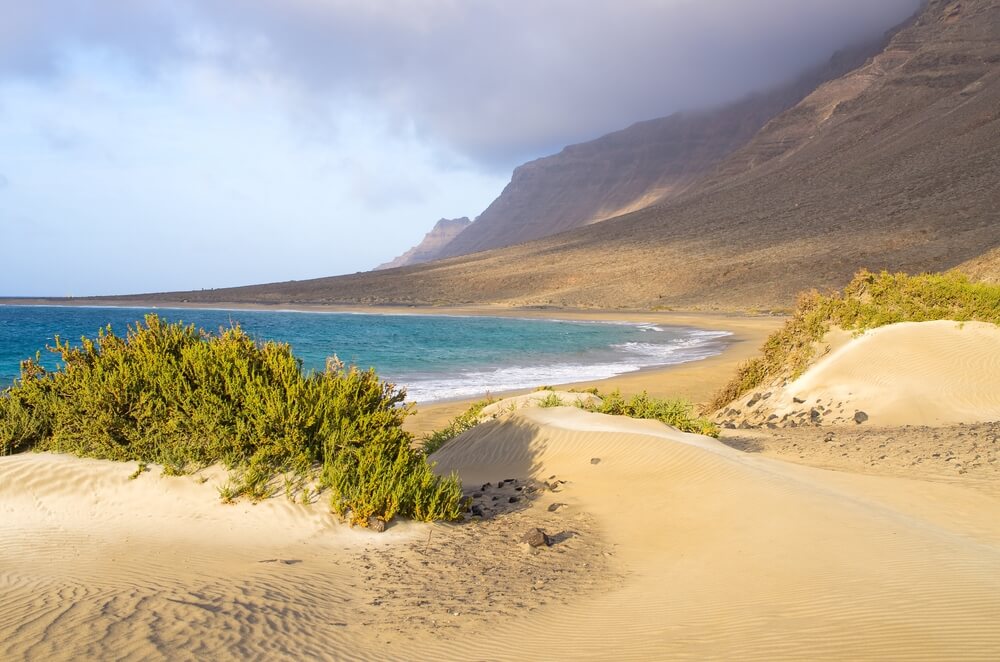
- Difficulty: Moderate
- Distance: 5.5 km (3.4 miles)
- Time to Complete: 2-3 hours
- Type: Out & back
Playa del Risco is among the most beautiful beaches in Lanzarote, but the only way to reach it is by hiking down a pretty demanding trail.
The hike starts in Las Rositas, just outside the village of Yé. After a steep descent, which is the most challenging part, the trail gets easier.
Your efforts will be well rewarded once you reach the vast, sandy beach bathed by turquoise waters and look out over the island of La Graciosa.
Here, you can rest or swim before tackling the hike back up.
The entire trail is exposed, so wear sunscreen and bring enough water and food, especially if you plan on spending some time at the beach.
Given the rough terrain, hiking boots are highly recommended — this is not a flip flop hike, despite its end point being a beach!
If you have a car and don’t plan on spending the whole day at the beach, you can pair this hike with a visit to Mirador del Rio.
You have a choice between driving to the parking lot to enjoy the view, or taking this short hike of less than 5 kilometers out and back for even more spectacular views.
Ruta del Mar de Lava
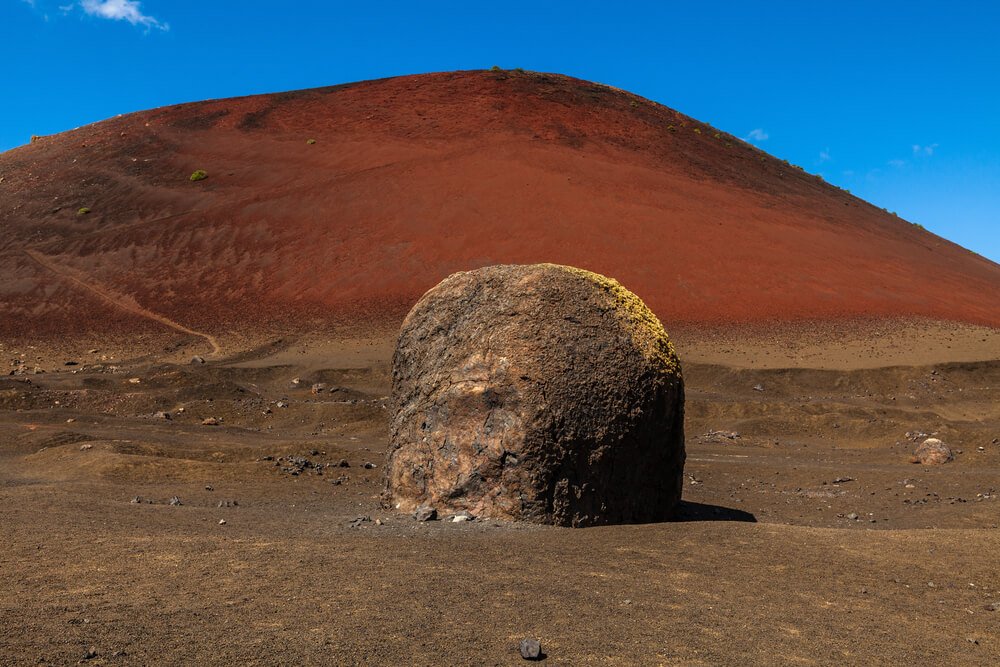
- Difficulty: Moderate
- Distance: 10.3 km (6.4 miles)
- Time to Complete: 2-3 hours
- Type: Loop
Ruta del Mar de Lava translates to Trail of the Sea of Lava, so you won’t be surprised to hear that you’ll see more incredible volcanic landscapes and calderas.
The trail is located within Los Volcanes Natural Park, starting south of Mancha Blanca.
The biggest challenge of this trail is the lack of shade. You’ll be walking through endless fields of lava, with some ups and downs but little elevation gain overall.
You’ll hike around Montaña Colorada, check out a massive volcanic bomb (a huge stone resulting from an eruption), and admire the imposing Santa Catalina Volcano.
The downside of this trail is that it’s not very well connected to public transportation.
The closest bus stop is in Mancha Blanca, roughly 20 minutes from the trailhead, and it’s served by bus 16 from Arrecife.
El Golfo – Playa del Paso – Montaña Quemada
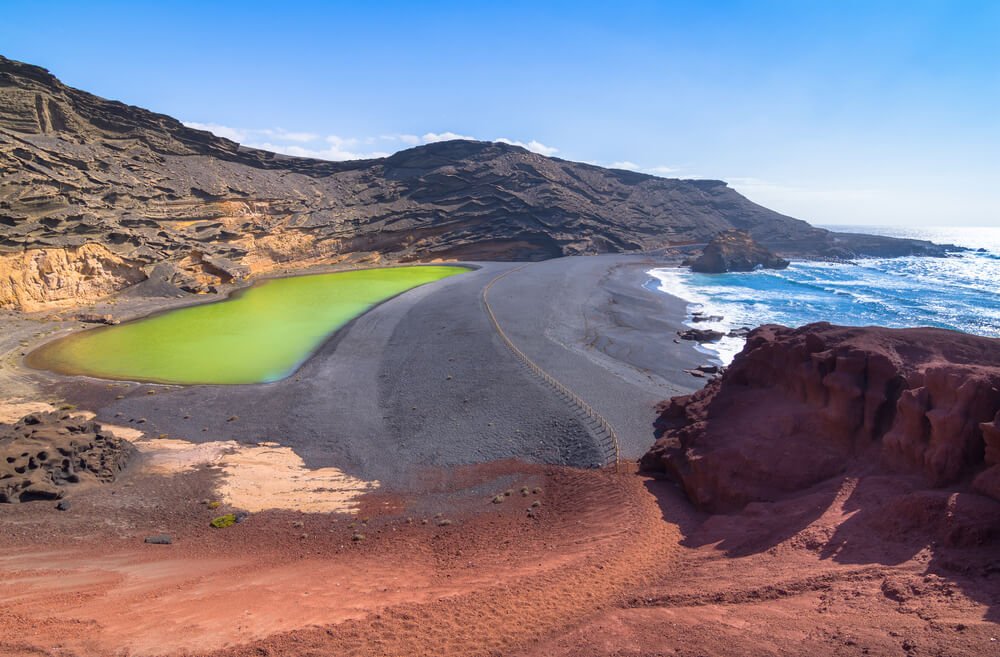
- Difficulty: Moderate
- Distance: 7.7 km (4.8 miles)
- Time to Complete: 2-2.5 hours
- Type: Loop
This short trail is the only one within the Timanfaya National Park that you can do without a guided tour.
The hike starts in El Golfo and proceeds along the coast before turning inland toward Caldera de Montaña Quemada.
The trail is only partly within the Timanfaya National Park, which starts just south of Playa del Paso, a lovely volcanic sand beach where you can stop for a break or enjoy a swim.
As is the case for most of the island, this trail has no shade, so wear sunscreen and bring water.
Like other hiking areas in Lanzarote, this one is also not connected to public transportation, so you can only get there by car unless you’re up for walking roughly two hours to La Hoya or Yaiza.
If you can’t rent a car, your best option to see Timanfaya National Park is the guided tour I mentioned above.
Haría – Mirador Montaña Ganada

- Difficulty: Moderate
- Distance: 6.8 km (4.2 miles)
- Time to Complete: 2-2.5 hours
- Type: Loop
If you’re looking for more than just volcanic fields and calderas, this hike is the one for you.
From the small town of Haría, you can hike on Montaña Aganada and enjoy spectacular coastal views from Mirador Rincón de Haría.
The hike is not too challenging, with some elevation gain and loss, but overall should be fairly accessible to most people. As usual, bring sunscreen, hiking boots, and water.
Since you can start the trail in Haría, this hike is perfect even if you don’t have a car. You can reach Haría by bus 7 or 26 from Arrecife.
The whole town of Haría is delightful, too, so you may want to spend some time there before or after the hike.
You can also make it a full-day trip and visit Casa Museo de César Manrique while you’re there.
Bonus: Isla La Graciosa Hike

- Difficulty: Moderate
- Distance: 28.2 km (17.5 miles)
- Time to Complete: 6-8 hours
- Type: Loop
While this guide was originally just going to include hiking trails in Lanzarote, I would be truly remiss if I didn’t at least mention La Graciosa.
This small island just off the northern tip of Lanzarote is absolutely worth visiting. The island is a hiking paradise with lots of trails and stunning landscapes.
This loop trail is the most extensive, allowing you to explore the entire island, but you can always shorten it.
If you can choose just one part of the island, I recommend heading north to see the delightful Casas de Pedro Barba.
If you’re up for the challenge, the entire hike takes 6 to 8 hours, depending on your pace and how many times you stop.
Catch the ferry early in the morning to have enough time to hike the whole trail.
If you want to sleep on the island, you can find accommodation in Caleta del Sebo.

Roxana is a Romanian-born freelance travel writer who has lived in Italy for over 15 years. She has a Master’s in Journalism and a Bachelor’s in Film Studies, and she studied at Università degli Studi di Roma Tre. Besides her native Romania, Roxana has lived in Rome, Lisbon, and Berlin, and she has traveled through much of Europe in search of hidden gems, history, and culture.

